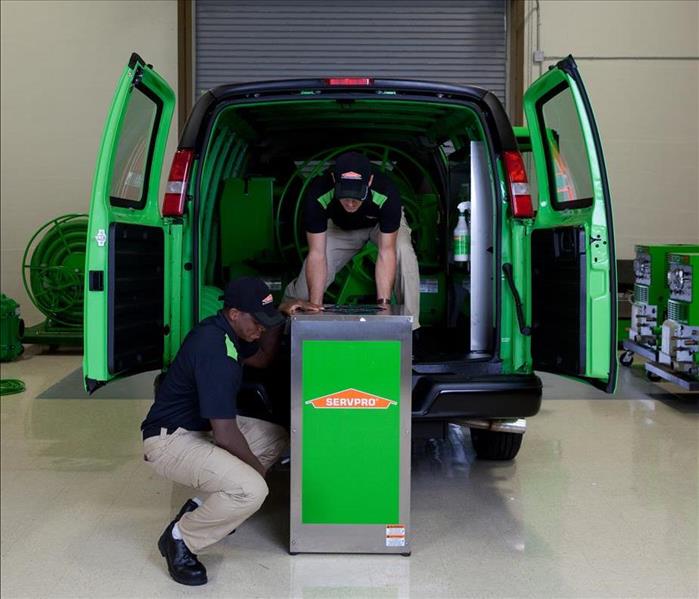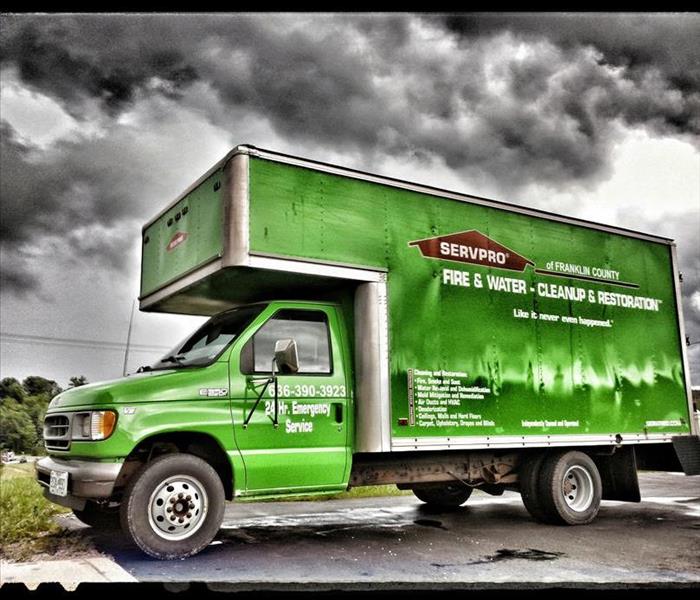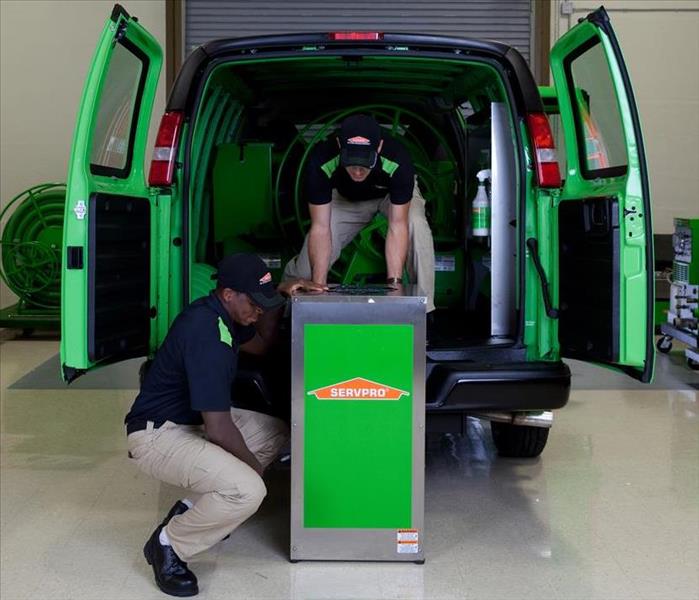Recent Water Damage Posts
Basement Flooded After a Rainstorm? Why You Should Call a Professional Water Mitigation Team
10/23/2023 (Permalink)
A sudden downpour or an intense rainstorm can lead to various problems, including a flooded basement. Dealing with a waterlogged lower level of your home can be overwhelming and stressful, but taking immediate action to prevent further damage is essential.
In such situations, enlisting the services of a professional water mitigation team is not just recommended; it's crucial. Here's why:
1. Rapid Response to Mitigate Damage:
Professional water mitigation teams are equipped to respond quickly to water emergencies. Time is of the essence when dealing with a flooded basement, as the longer water remains, the greater the damage. Professionals arrive promptly to assess the situation, remove standing water, and initiate drying to prevent structural issues, mold growth, and other secondary damage.
2. Specialized Equipment:
Water mitigation experts use specialized equipment such as industrial-strength pumps, high-powered fans, dehumidifiers, and moisture meters to ensure the thorough extraction and drying of your basement. These tools are often unavailable to homeowners and can significantly expedite restoration.
3. Experience and Expertise:
Water mitigation professionals have extensive experience handling various types of water damage, from minor leaks to catastrophic flooding. They understand the intricacies of moisture control, vital in preventing long-term issues like mold growth and structural decay.
4. Mold Prevention:
One of the most significant concerns with basement flooding is the potential for mold growth. Mold can increase rapidly in damp environments, posing health risks and damaging your property. Water mitigation teams have the knowledge and tools to prevent and mitigate mold infestations.
5. Insurance Assistance:
Dealing with insurance claims can be a complex and time-consuming process. Many water mitigation and restoration companies work directly with insurance companies and can help you navigate the claims process more efficiently, ensuring you receive the compensation you deserve.
6. Comprehensive Services:
Professional water mitigation teams don't just remove water; they provide a comprehensive range of services, including drying, disinfection, and restoration. This holistic approach ensures that your basement is returned to a safe, healthy, and functional state.
7. Peace of Mind:
When you hire professionals, you can rest assured that the job is done right. Reputable water mitigation companies often provide warranties, giving you peace of mind that your property is in capable hands.
In conclusion, swift and effective action is essential when your basement floods due to a rainstorm or any other water-related incident.
Entrusting the task to a professional water mitigation team is the best way to safeguard your home, health, and peace of mind. Their expertise, equipment, and efficiency make them an indispensable partner in the challenging process of recovering from water damage.
Basement Flooding 101
4/26/2023 (Permalink)
Basement Flooding 101
Basements are inherently prone to flooding because they are the lowest level of a building and are usually built partly or entirely below ground level. A basement can flood anytime, although flooding most often occurs during heavy rainfall.
There are several reasons why your basement could flood, including:
- A blocked or failed sewer lateral pipe
- Surface water pool around your home
- Storm sewer backup
- Sanitary sewer backup
- Foundation drainage failure
- Water supply-line break or hot-water tank failure
If flood water is not handled quickly and correctly, it can jeopardize your health and safety and cause severe damage to your home’s structure. Remember, the longer you wait, the worse the problem will get.
It’s worth calling SERVPRO of Franklin County and letting our trained, professional crews handle the situation safely and correctly.
We are Water Mitigation Specialists:
- Available 24 hours/7 days per week
- A preferred vendor to many national insurance companies
- We'll bill the insurance directly – one less thing for you to worry about
- Our technicians are highly trained in water restoration techniques
- s500 IICRC restoration standards
- Advanced inspection and extraction equipment
Call Us Today – We’re Here To Help- 636-583-5200
3 Categories of Water
9/15/2022 (Permalink)
Sometimes we will call about a job that isn’t the most desirable, but we will never turn it down. A job site affected by a sewage leak or flooding can carry harmful bacteria that come in contact with or are ingested and can cause severe discomfort. When going into an area affected by a contaminated source, we will have our crew wear the complete PPE to secure their health and safety.
Categories of Contaminated Water
Category 1: “Clean Water”
This category is when a leak comes from a clean source from a broken water pipe. A toilet containing no urine or feces is considered a category since it has no harmful pathogens. Category one floods will escalate to category 2 or 3 if it doesn’t get mitigated.
Category 2: “Gray Water”
In this category, you are looking for the possibility of contamination from a water source containing some degree of contamination. When gray water gets ingested, it can create some discomfort due to the ingestion of harmful bacteria.
Category 3: “Black Water”
Water contaminated by an unclean source will be considered category three because it has been affected by a source that has harmful pathogens. The difference between category 2 is that when category three gets ingested, it can create severe pain with the possibility of death due to these harmful pathogens. We will never suggest that our clients should put themselves in contact with this category for that reason. Flood water is an excellent example of this category because you cannot know where the source came from, such as a pipe, river, or sewage from an unclean source.
Does Your Home Have Dry Rot?
9/9/2021 (Permalink)
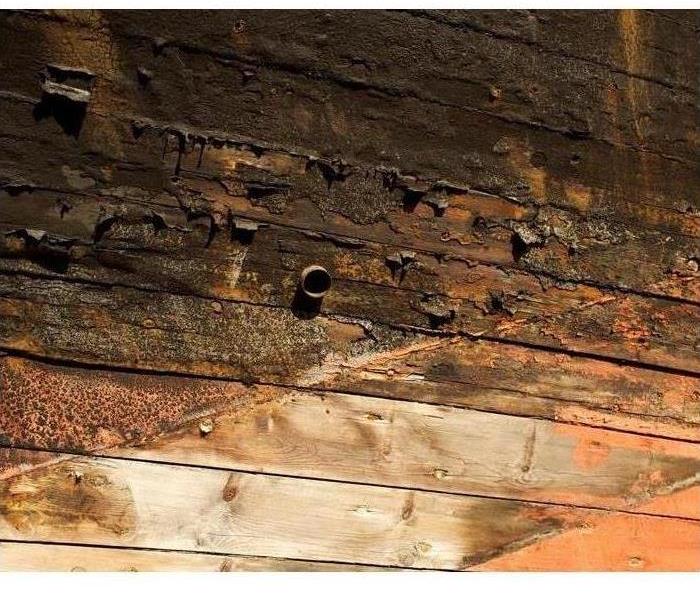 We provide emergency cleaning and restoration services 24 hours a day, 7 days a week.
We provide emergency cleaning and restoration services 24 hours a day, 7 days a week.
Would you know if your home had dry rot?
It can happen to any type of wood in any climate. It can ruin the structure of your home. Dry rot is found in attics, basements, and under sinks. Generally, in places with moisture.
What causes dry rot?
Despite the word “dry” in its name the fungus that causes dry rot grows when the moisture in the wood exceeds 20% or when the wood is exposed to sitting water and extreme humidity. Dry rot can leave wood weak and brittle.
The primary clues to look for in dry rot:
- Yellow tinge to the surface
- Deep cracks in the wood
- Wood will crumble
Since moisture is necessary for the fungus to grow, you can typically find dry rot when:
- After a flood or natural disaster
- After a plumbing accident or water damage
- In humid climates
- When wood is not properly dried
How can I protect my home from dry rot?
- Inspect your roof annually to check for leaks or holes that can let water in and cause dry rot.
- Make sure your gutters are installed properly and are directing water away from your home.
- Check your plumbing to make sure you don’t have any noticed leaks.
- Make sure your ventilation in bathrooms, kitchen and attics is working properly and can remove excess moisture from your home.
Why Choose SERVPRO of Franklin County?
Properly restoring your home after a water damage event requires specialized equipment and products. This advanced equipment helps us to remove the water, even hidden moisture, quickly and efficiently. We then dry the structure with powerful dehumidifiers. We provide emergency cleaning and restoration services 24 hours a day, 7 days a week—including all holidays.
Need Emergency Service? Call Us 24/7 – (636) 583-5200
Why call SERVPRO?
7/23/2021 (Permalink)
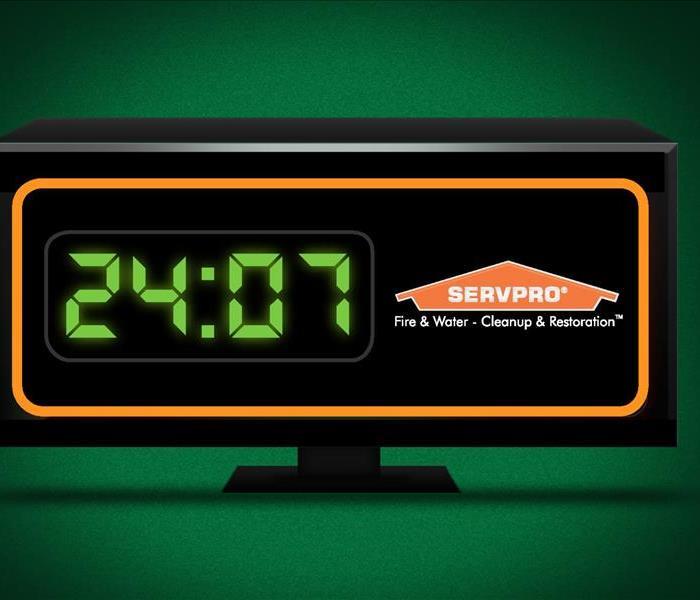 We provide emergency cleaning and restoration services 24 hours a day, 7 days a week.
We provide emergency cleaning and restoration services 24 hours a day, 7 days a week.
Calling in a water damage restoration service might not be on the fun side of the to-do list, but when it’s needed, it’s important to not wait. Water can get into just about any place, even a tiny little crack. It does not matter how the water gets in, or even the size, your response should be the same: Call a professional.
It's especially important if your home or business was flooded by a contaminated source, not to handle it yourself. Floods and sewage backflows can contain bacteria, viruses, and fungi that even momentary skin contact can leave you seriously ill. A IICRC trained water damage technician not only has the tools to eliminate moisture, but we have the personal protective equipment that keeps our technicians safe from harm.
SERVPRO of Franklin County technicians have a lot of technology to help make sure all the water is removed from your property. This includes powerful vacuums and pumps, air movers, dehumidifiers, heat injectors, moisture meters, and specially chemicals for treating microbial threats. We will make sure any mold that is present will be cleaned and removed properly. This keeps your home or business safe for everyone.
The Institute of Inspection Cleaning and Restoration Certification (IICRC) sets practical standards for restoration and cleaning. The IICRC S500 Water Damage Guide is a specific set of practical standards that incorporate the field of psychometry, which involves the manipulation of temperature and relative humidity to remove moisture and dry a property quickly and effectively.
We are water damage restoration specialists and are ready to restore your Franklin County, Missouri home or business back to pre-water damage condition. We quickly extract the water and then dry your property using state-of-the-art equipment. SERVPRO of Franklin County uses moisture monitoring equipment to effectively measure and document the drying process to ensure your property is dry.
Please refer to our Water Damage Tips—Until Help Arrives Guide and follow these tips to protect yourself and your property.
Need Water Damage or Flood Cleanup Services? Call Us Today – (636) 583-5200
Customer Spotlight: Craig Sullivan
4/22/2021 (Permalink)
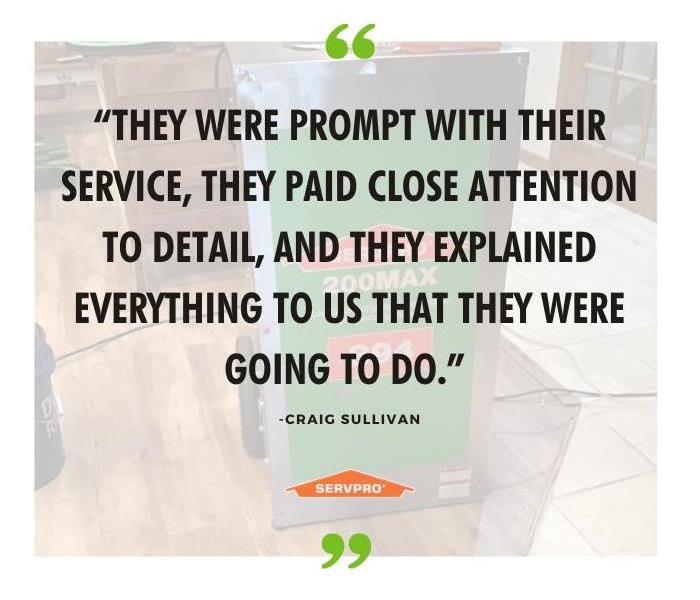 If you have water damage in your home, all SERVPRO of Franklin County. We are available 24/7.
If you have water damage in your home, all SERVPRO of Franklin County. We are available 24/7.
When Craig Sullivan’s Union home experienced water damage, he knew just who to call.
Sullivan saw that his basement was wet and immediately contacted his insurance company, notifying them that he wanted to use SERVPRO of Franklin County to mitigate the damage.
A crack in the house’s foundation led to the water leaking into the basement, mainly affecting the family room. SERVPRO set up air movers and air scrubbers, as well as a floor mat drying system for the plank vinyl flooring.
“You guys came out and got everything set up real quick,” Sullivan said. “You guys did a really good job for us.”
It didn’t take long to get the basement dried out—only about three days. Sullivan still has to have a wall repaired that was cut out to get the foundation crack fixed.
Although it was an unfortunate circumstance, Sullivan was thankful that SERVPRO helped repair the damage quickly.
“They were prompt with their service, they paid close attention to detail, and they explained everything to us that they were going to do,” he said. “We were very thankful for the work you guys did for us.”
Restore Vs. Replace
4/6/2021 (Permalink)
 When your home or business suffers a water damage event, give SERVPRO of Franklin County a call.
When your home or business suffers a water damage event, give SERVPRO of Franklin County a call.
The insurance and restoration industry have performed multiple studies that conclude restore has many advantages over replace. As a preferred mitigation vendor for most major insurance companies, we are charged with a duty to restore whenever possible.
The major advantage to restore vs. replace is cost. In almost any situation, restore saves a tremendous amount of money compared to replacement. One area where we can generate huge savings in a water loss situation is drying of hardwood floors instead of replacing them. Even after incurring the cost of air movers, dehumidifiers and even specialize equipment usually there is a 45%-75% cost savings over replacement. Another common example would be the drying of carpet and/or drywall. Again, using air movers and dehumidifiers and following the science of drying we can often save 75%-90% over replacement cost. You can imagine how quickly these savings add up.
Another advantage of restore versus replace is time savings and business interruption savings. Drying a structure usually takes an average of three to five days. After our drying is completed, your customer should be back in their house or business right away. Back, as we like to say, "Like it never even happened." If you look at the alternative which is replace, your customer will have to wait weeks or even months to get back into their home or business while construction is going on. This leads to expensive hotel bills for residential customers or catastrophic business interruption costs for commercial customers. Either way you are talking a great deal of money, time, and inconvenience!
For these reasons we at SERVPRO look to restore whenever we can and whenever it makes sense. We accomplish this by not only using our extensive training, knowledge, and resources but also by responding immediately so that the impact of the water or fire damage is reduced. We also help you mitigate your damages before they even happen with our Emergency Ready Profile (ERP) and our sponsorship of the Red Cross Ready Rating. These programs prepare you for the loss before it even occurs. If you do not have an ERP yet, you need one! Set up an appointment right away.
Big Freeze Update
3/20/2021 (Permalink)
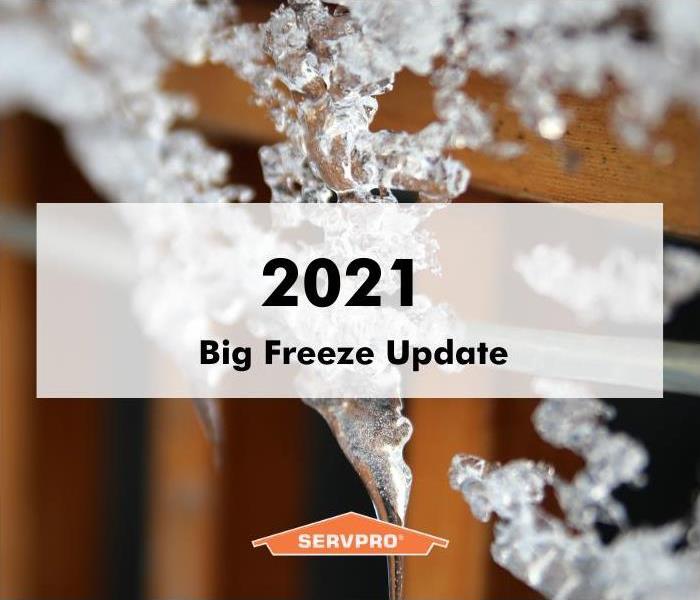 No matter the size or quantity, SERVPRO is here to help.
No matter the size or quantity, SERVPRO is here to help.
The phones started ringing on Feb. 17, and they didn’t stop for almost two weeks.
After a mostly mild winter, the temperatures plunging well below freezing temperatures in mid-February caused many households and businesses to be negatively impacted.
SERVPRO of Franklin County served 25 different customers over the two-week span. Five of the losses were commercial, while the other 20 were residential.
In total, over 75,000 square feet of property was affected.
Our crews stepped up to help serve the community and restore homes and businesses. They ended up logging over 100 hours in overtime over the two weeks, while still able to do their jobs, and do them well.
It wasn’t just our franchise that was put to the test, however. Feb. 17 created the most leads in SERVPRO history, with 3,826. In the areas that were most impacted (Texas, Oklahoma and Arkansas), over 300 crews were called in to deal with more than 26,000 leads.
The big freeze showed that SERVPRO is capable of handling any losses that come our way.
No matter the size or quantity, SERVPRO is here to help.
Common Water Damage Questions
3/16/2021 (Permalink)
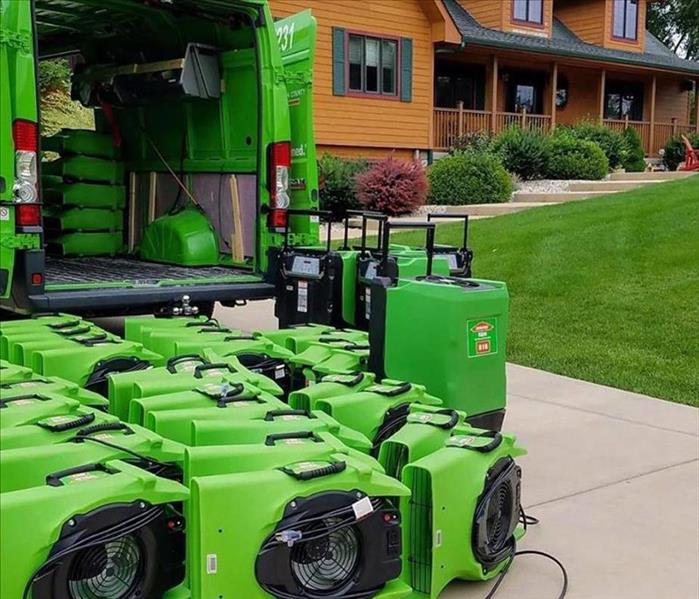 Water damage? Give us a call! We are here to help!
Water damage? Give us a call! We are here to help!
We've been in the water damage restoration business for quite some time now. Here are some of the most common questions we receive out on the job.
How does drying work?
We are trained and IICRC certified and we follow the science of drying. The basic science is that air movers drive the moisture out of the material and into the air, the dehumidifiers than remove the moisture from the air. We need both to make it worth. We use moisture meters to verify that materials are drying and dry.
Do you have to tear everything out?
That's a common thought, but no. Normally depending on the type of water, we can dry everything in place. It’s much less costly and quicker for you to dry everything in place rather than removing everything than having to have a contractor replace everything.
If we end up having to do some tear out: we are having trouble drying this area. Normally we are successful. We are going to do a limited amount of removal to speed the drying up and the repairs will be minimal.
How do I know is drying?
We use moisture meters to determine what is wet and how wet it is. With the moisture meter we get a reading on unaffected material and that reading tells us what the affected material should be dried down to. We check daily until the material has reached its goal.
I'm really worried about mold.
Most people have that fear, probably because it’s really hyped on the news. Mold cannot set in until after 72 hours of the water loss. If professional drying begins before 72 hours you risk of mold is minimal. We are highly trained to avoid mold growth. The good news is you called us right away, professional drying has begun, you have no worries.
How do I know there is not mold in the walls?
Mold is everywhere. There for sure is mold in the walls, on the floor, etc. We want to avoid is a lot of mold. My training assures me that there is no new mold growth from this water event.
How much electric does it take to run all this equipment?
You would be surprised how little electric everything draws. For example, this air mover draws 1.5 amps, this dehumidifier draws 7 amps. Normally the total additional electric used is under $50. If you have additional concerns about this, make sure you talk to your adjuster.
This equipment is too noisy, can I turn it off?
The only way the drying process works is to have all of the air movers and dehumidifiers on. Turning them off could delay the drying process and it could also cause mold to develop. You really need to keep everything on so we can get the house dried out. If you have additional concerns about the noise, make sure to talk to your adjuster.
How much is all of this going to cost?
Charges are based on how much equipment we use and what functions we have to perform so every job is different. Our charges are approved up front by the insurance company, that's why we can respond so quickly and get started. When we are done, our invoice will audited by our staff and then the insurance company to insure 100% accuracy.
Have a question we haven't answered here? Feel free to give us a call 636-583-5200. We're here to help!
Customer Spotlight: Stephen Skaggs
3/16/2021 (Permalink)
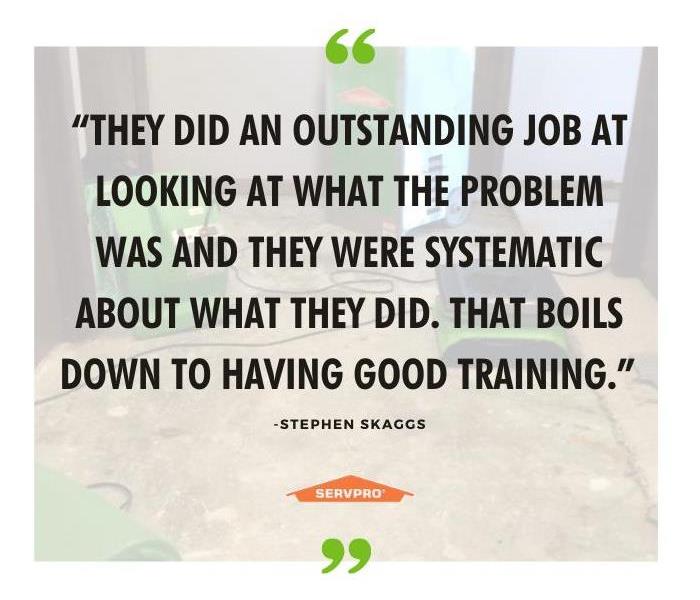 Sewage backup? Give SERVPRO of Franklin County a call.
Sewage backup? Give SERVPRO of Franklin County a call.
While most of the losses we dealt with this winter came from frozen pipes, the cold weather also resulted in some sewer backups.
Stephen Skaggs of St. Clair had his home affected by this in late February.
“That was right after we had that really bad cold snap,” Skaggs explained. “Evidently the tree roots were suppressing any materials from getting through since they were so frozen.”
Although Skaggs was able to get help to clear the roots, the backup led to water damage in his home, causing five rooms to be affected. The water saturated the carpets, walls and linoleum flooring in the basement.
SERVPRO of Franklin County was called in to mitigate the damage. Due to the unsanitary water, it required a lot to be torn out. Drywall, shelving, carpet and a vanity all had to be removed.
After that was completed and antimicrobial was sprayed, the drying process began. The job required five air movers in the basement family room, along with two dehumidifiers. It also called for three air movers in the bedroom, three in the workout room, three in the bathroom, three in the utility room and two in the storage room.
Naturally, all the fans made Skaggs’ house noisy for a few days.
“I’m retired from the Army and I used to fly a lot on C-130s,” he said. “I just kept thinking this is just like being on a C-130, except you just don’t have the vibration.”
After about four days of drying, the job was complete.
“The folks that came out were very professional,” Skaggs said. “They did an outstanding job at looking at what the problem was and they were systematic about what they did. That boils down to having good training.”
Skaggs was also impressed by SERVPRO’s leadership throughout the job, especially by production manager Nate Gillespey and crew chief Cody Forsee.
“Nate knew specifically how to handle this because he’s had to deal with many like this. He did an outstanding job,” Skaggs said. “The crew members who I interacted with, especially Cody, were very knowledgeable about what was going on and how to fix it. They were able to accomplish everything that they needed to get done.”
But Skaggs was most pleased with how the SERVPRO of Franklin County workers went above and beyond for him after some of his door handles were accidentally removed.
“I needed the door handles back because they were unique to the house, and they went the extra mile to retrieve all them,” he said. “I’m in business myself, and you always look for people who go the extra mile. These guys go the extra mile.”
Hidden Water, Hidden Mold
3/11/2021 (Permalink)
 Spring rains can bring water damage. Be careful not to let hidden water damage happen.
Spring rains can bring water damage. Be careful not to let hidden water damage happen.
If water is not quickly and properly mitigated, it can cause significant damage to a home and cause interruption for businesses. While water damage can be costly to repair, there is one issue that should be of your greatest concern – mold. Nearly all building materials, like wood, drywall, and flooring materials, are porous and therefore retain water. This retained water can cause the materials to break down, warp, or cause mold damage.
It can only take a few days after water damage for mold to form. Therefore, it is important to take the proper steps to begin the cleanup process. We recommend starting the process between as soon as possible, but after 48 hours, it can become more difficult to salvage property.
The most effective way to prevent mold from forming is by calling SERVPRO of Franklin County as soon as you experience water damage. Once we receive a call, we are onsite within four hours to begin the cleanup process.
After our technicians do an inspection and damage assessment, the water extraction process begins. This step removes most of the water. We use powerful pumps and truck-mounted vacuum units to quickly remove hundreds or thousands of gallons of water from your property. Once the excess water has been removed, the floors and walls may appear dry, but a quick inspection will reveal they are wet to the touch. You can learn more about our entire process by clicking here.
We use air movers, dehumidifiers and monitor the drying process so you know that your home or business has been properly dried and will not suffer any secondary damage.
We are available 24/7, 7 days a week. If you experience water damage, give us a call. We’ll be there fast with the help you need.
How to Protect Your Home Against Flooding
1/29/2021 (Permalink)
 Water damage? Call SERVPRO of Franklin County
Water damage? Call SERVPRO of Franklin County
Franklin County has experienced many flooding incidents in recent years. Since most homeowner’s insurance doesn’t cover flooding, it’s important to know how to protect your home and your finances in the event of a flood.
If your home is located in a floodplain, your lender should have already mandated you to purchase flood insurance. If you are not in a floodplain but still believe your home is susceptible to flooding, you should purchase additional coverage.
Regardless of your coverage, there are many things you can do to help protect your house from flooding and reduce potential damage.
- Seal Any Cracks in Foundation
Masonry caulk or mortar can be used to seal any gaps in your house’s foundation that allows water to get in.
- Apply Coatings And Sealants
Sealants can be used on your foundation, doorways, ceilings and walls to keep water from penetrating your home.
Sump pumps can be great ways to drain water from your house. However, in the case of a power outage, it’s better to get a battery-powered sump pump so you can use it whenever you need it.
Many home security systems offer flood sensors as add-ons. These can be vital in detecting small leaks before they turn into huge problems that cost you loads of money.
- Install Sewer/Septic Line Check Valves
These valves cause waste to only flow one way, protecting against sewage flooding your home.
- Have Your Lawn Graded Away From Your Home
If your lawn is tilted toward your house, rain water can pool around the house and potentially seep in. By grading your lawn away from your house, you can ensure that water doesn’t flow inside.
- Move Important Items to Higher Ground
Keeping your prized possessions in the basement or on the first floor may turn out to be a costly mistake. Move your most expensive or sentimental items to a higher story or the attic to prevent them from being damaged in a flood.
Customer Spotlight: Mary Helen Lemerck
1/28/2021 (Permalink)
 If your home has water damage from flooding, a leaking pipe, or other source, you need the company that can respond immediately and has the expertise
If your home has water damage from flooding, a leaking pipe, or other source, you need the company that can respond immediately and has the expertise
When Mary Helen Lemerck’s St. Clair home was impacted by water damage, she enlisted the professionals at SERVPRO of Franklin County to help restore her home.
“We had a leak in the air conditioner that we didn’t know about,” Lemerck explained. “It had seeped through the unit and it had softened the particle board underneath.”
The drain line in the air conditioner had clogged, causing Lemerck’s floor and subfloor to be damaged.
Mary called her agent, Bill Chase of State Farm in St. Clair, for assistance. Chase recommended she use SERVPRO of Franklin County to perform the restoration.
“I was so glad that we’ve got a good insurance man that went to bat for us,” Lemerck said.
SERVPRO cleaned the mold in the flooring that had grown from the water damage, then put in a new vinyl plank floor. Some of the wood subfloor also had to be replaced.
“The floor was getting ready to fall out from underneath us,” Lemerk said. “To do the job properly, they had to take out the particle board underneath the unit and replace underneath the heating unit and in the hallway. They did a perfect job on that.”
The SERVPRO crew made it a point to make sure none of the drying equipment caused any trip hazards for Lemerck, who has had health problems in the past.
“I really appreciated that,” Lemerck said.
Lemerck said she would recommend others to use SERVPRO if they were in need of restoration service.
“You guys did a great, great job,” she said.
If your home has water damage from flooding, a leaking pipe, or other source, you need the company that can respond immediately and has the expertise and equipment to properly restore your property. We use advanced water damage inspection and extraction equipment to help find the moisture and to remove it as quickly as possible. Our highly trained technicians will monitor and document the drying process so that you know your property is back to normal.
Have Water or Flood Damage?
Call Us Today – (636) 583-5200
How to Prevent Ice Dams
1/11/2021 (Permalink)
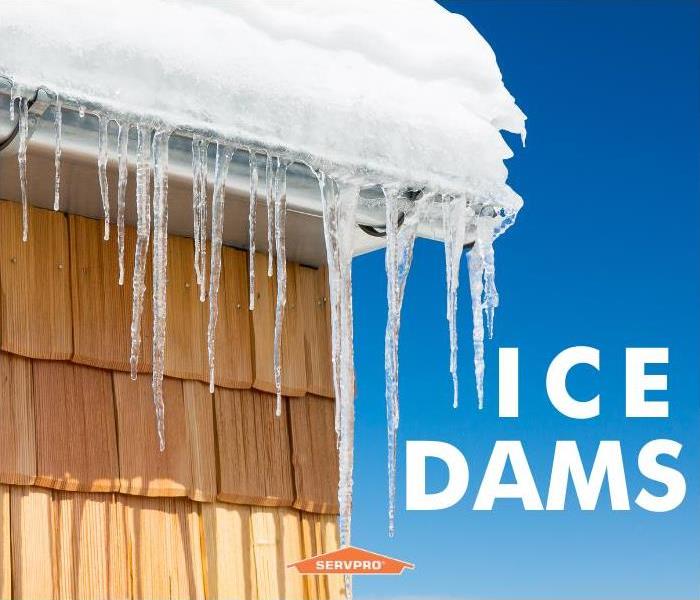 Does your home have water damage from an ice dam or another source? Give SERVPRO of Franklin County a call.
Does your home have water damage from an ice dam or another source? Give SERVPRO of Franklin County a call.
Icicles hanging off the eaves of the roof can create beautiful scenery on a winter day, but those frozen crystals can cause some ugly problems for your home.
Icicles are formed by the combination of snow-covered roofs and freezing weather. These conditions are what leads to ice dams—ridges of ice that form at the edge of the roof which prevent melting snow/water from draining.
Dams can be a real pain in the ice.
They can tear off gutters, loosen shingles and cause water to back up, resulting in water pouring into the house. This can lead to paint peeling, floors warping and ceilings getting stained or sagged.
Moisture entering the home from ice dams can also cause respiratory issues for your family, resulting from mold and mildew growth.
So what can be done to prevent these damn...err..dams?
Instead of waiting for warm weather to solve the problem, you can take matters into your own hands.
The first short-term move is to stop any leaking.
You can set up a box fan in the attic and aim it at the bottom of the roof where water is leaking in. This will freeze the water and stop the leak.
Another effective option is taking a long-handled aluminum roof rake to scrape off snow.
You can also de-ice your roof with pantyhose.
Seriously.
By filling the leg of a pair of panty hose with a calcium chloride ice melter, you can melt through the ice and snow to create water flow. Lay the hose so it crosses the ice dam and overhangs the gutter.
- Uniform Roof Temperatures
Ice dams are caused by nonuniform roof surface temperatures.
For dams to form, the top of the roof must be above 32 degrees, while lower surfaces are below freezing.
When the snow on the top of the roof melts, water flows down to the bottom of the roof and freezes, creating the dam.
In most cases, the reason for the lack of uniform roof temperatures is due to heat from the house warming the roof.
One way to reduce heat escaping is by adding insulation. This will make the top surface temperature of the roof closer to surrounding attic temperatures, creating more uniformity.
This step should come after making the ceiling air tight so that no warm, moist air can flow from the house into the attic. For an unsealed attic hatch or whole-house fan, you can use weather-stripped caps made from foil-faced foam board held together with aluminum tape to seal.
Heating cables can also create uniform roof temperatures. By heating the roof from the outside instead of blowing in cold air from the inside this tactic can equalize your roof’s temperature.
There are several additional tactics you can take to solve your ice dam issue.
Double check that the ducts in your house connected to the kitchen, bathroom and dryer vents all lead outdoors through the roof or walls, but not through the soffit.
Seal and insulate ducts by spreading fiber-reinforced mastic on the joints of HVAC ducts and exhaust ducts, and cover them with R-5 or R-6 foil-faced fiberglass.
Recessed lights should be replaced with insulated contact (IC) rated fixtures, as old-style lights can’t be insulated without creating a fire hazard.
Use caulk to seal around electrical cables and vent pipes with a fire-stop sealant. You should also look for spots where light shines up from below or the insulation is stained black by dirt.
Bridging the gap between the chimney and house framing with L-shaped steel flashing that’s kept in place with unbroken beads of a fire-stop sealant is another possible remedy.
How to Deal With Frozen Pipes
1/9/2021 (Permalink)
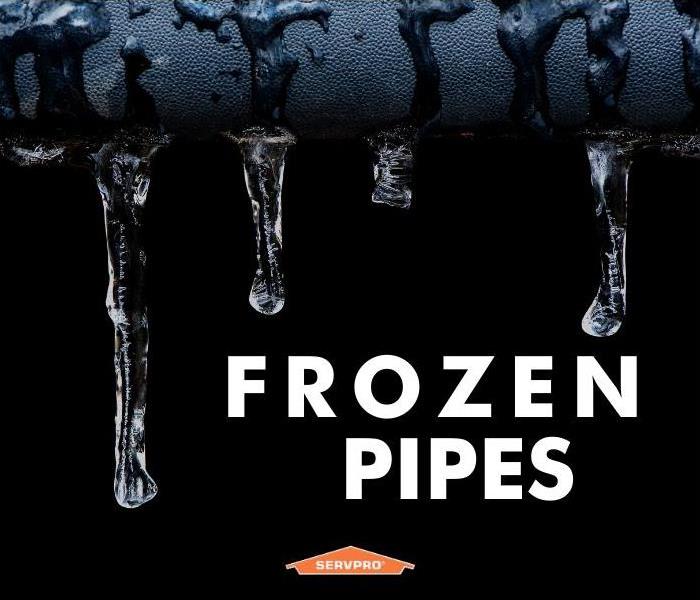 Frozen pipes? Call SERVPRO of Franklin County
Frozen pipes? Call SERVPRO of Franklin County
At SERVPRO of Franklin County, we often see an increase in water losses during the winter. A major culprit of these losses are frozen pipes.
When the water inside the pipes freeze, its molecules expand, which causes a blockage of ice that prevents unfrozen water from passing through. When the frozen pipe begins to thaw, the pressure from the water can cause the pipe to burst.
How Can I Tell My Pipes Are Frozen?
One of the most common signs that you are dealing with frozen pipes is when you turn on your faucet and no water comes out (similarly, if you flush your toilet and it doesn’t refill). If this happens, you should check your water source to make sure it’s still turned on and that a leak isn’t occurring.
Another tell-tale sign of frozen pipes is when your water line is coated in frost or is bulging.
If you know that your pipes are frozen, you can either choose to address the issue yourself or call in professionals.
How to Prevent Frozen Pipes
Frozen pipes cause an estimated $400-$500 million in damage annually. To avoid adding to that total, there are several steps you can take.
When the weather gets cold, you should drain water from pipes that are likely to freeze, such as sprinkler and swimming pool water supply lines. Outside hoses should also be disconnected and drained, and indoor valves supplying these access points must be closed.
On frigid days, let your faucets drip cold water. Having the water drip out will make it harder for the water in the pipes to freeze. Your thermostat should also be kept around the same temperature at all times, and your house temperature should never fall below 55 degrees. Garage doors should also be kept shut to protect water lines.
If you are worried about your pipes freezing, you can also place a 60-watt bulb in the areas you’re concerned with. Just make sure none of the materials near the bulb are combustible.
What If My Pipes Are Already Frozen?
If you realize your pipes have frozen, the first step is to keep your faucet open. This will help with thawing and allow for moving water to flow through the pipe.
You can also apply heat to the specific area of the pipe that is frozen. You can do this by wrapping an electronic heating pad around the pipe or heating the area with a hair dryer. Using towels soaked in hot water can help, too.
Keep applying heat until water flow returns to normal. After the pipe has been thawed, turn on other faucets around the house to make sure you don’t have any more frozen pipes.
If the pipe is inside an exterior wall, you should immediately call a professional contractor. It is likely that a hole will need to be cut in the wall toward the inside of the house to allow the pipes to be exposed to warmer air.
Frozen pipes can be a catastrophic problem for your home, but taking proactive measures can help you address the problem before it even starts.
Customer Spotlight: Gary Dixon
12/21/2020 (Permalink)
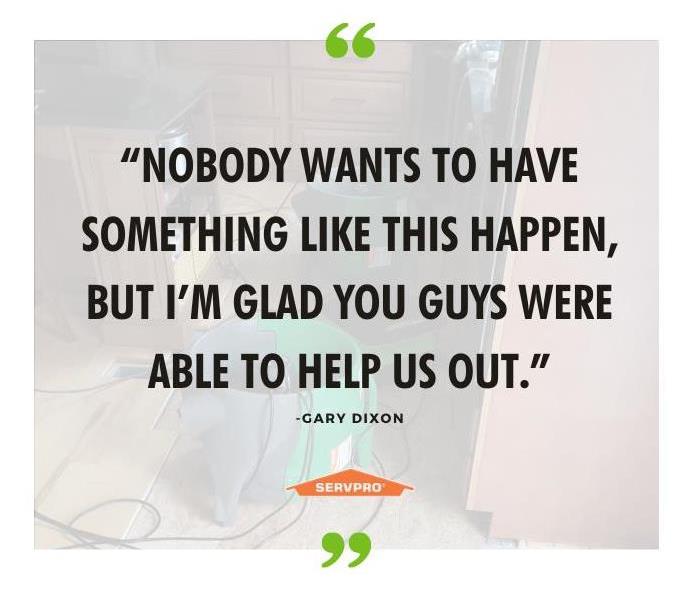 SERVPRO of Franklin County is "Here to Help" with your water and fire damage emergencies 24/7, 7 days a week. Give us a call.
SERVPRO of Franklin County is "Here to Help" with your water and fire damage emergencies 24/7, 7 days a week. Give us a call.
Going on vacation is supposed to be a relaxing time to get away.
But relaxation can quickly turn to stress when finding out something is going wrong back at home.
Unfortunately for Marthasville native Gary Dixon, that’s exactly what happened when he got word his house had sustained water damage.
His new dishwasher had been leaking for several days.
“It all started from a supply line going through my new dishwasher,” Dixon said. “It was installed two weeks before we went on vacation. Who knows why it started leaking.”
Fortunately, his daughter was checking in on the house when she noticed the leak and shut off the water.
But the damage was still significant.
The hardwood floor in the kitchen buckled and the cabinets were damaged. The basement workshop was also affected, as the insulation had to be replaced.
The kitchen required a dehumidifier, an air scrubber and some air movers for drying. The basement workshop wasn’t as badly affected, but still required a dehumidifier, an air scrubber and a few fans.
The job took five days from start to finish.
“(SERVPRO of Franklin County owner) Jerry (Alvey) had his people work fast,” Dixon said. They finished quicker than he estimated.”
Dixon was pleased with how SERVPRO of Franklin County was able to help restore his home.
“I would definitely recommend others to use you guys,” he said. “Nobody wants to have something like this happen, but I’m glad you guys were able to help us out.”
Whether you’re at home or on vacation, SERVPRO is here to help restore your house when things go awry.
Have Water Damage In Your Franklin County, MO Home?
12/10/2020 (Permalink)
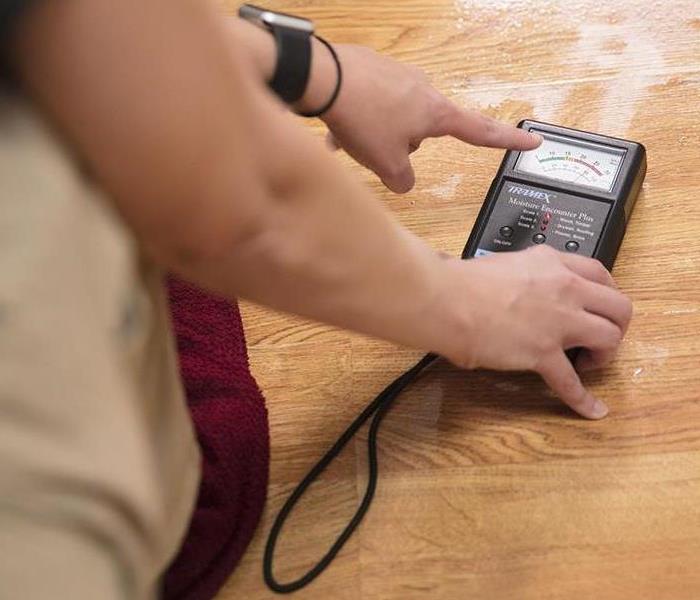 It is our goal to be "Here to Help" when our neighbors here in Franklin County, MO need us. Whether it be the next great flood or simply an overflowed
It is our goal to be "Here to Help" when our neighbors here in Franklin County, MO need us. Whether it be the next great flood or simply an overflowed
A water damage restoration service is the kind of professional that no one wants to call, but when they are needed, it is important not to delay. Homeowners know that moisture is often the enemy, capable of penetrating into just about any space, and taking advantage of every little crack and structural problem. No matter how moisture gets into the building, the response should be the same. Bring in a certified firm as soon as possible to clean the home, dry it, and ensure there are no lingering health threats once the moisture is gone.
If water has entered the home through a contaminated source, don’t try to handle it on your own. Floods and sewage backflows contain a cocktail of deadly bacteria, viruses and fungi, and even momentary skin contact can leave a person seriously ill. A certified water damage restoration service not only has the tools to eliminate the moisture, they have the protective equipment to remain free from harm.
Restoration technicians have a lot of technology at their disposal. These include powerful vacuums and pumping systems, high volume air movers, dehumidifiers, heat injectors, moisture meters, and several detergents formulated for destroying fungi and other microbial threats. While the technicians work on the building, disposing of compromised materials, and drying the rest, they will also destroy all mold and microbial colonies. This is the only way to ensure a home is safe to live, and a business safe to work in; any other cleaning method is a dangerous gamble.
The Institute of Inspection Cleaning and Restoration Certification (IICRC) sets practical standards for restoration and cleaning. The IICRC S500 Water Damage Guide is a specific set of practical standards that incorporate the field of psychometry, which involves the manipulation of temperature and relative humidity to remove moisture and dry a property quickly and effectively.
We are water damage restoration specialists and are ready to restore your Union home back to pre-water damage condition. We quickly extract the water and then dry your property using state-of-the-art equipment. SERVPRO of Franklin County uses moisture monitoring equipment to effectively measure and document the drying process to ensure your property is dry.
Please refer to our Water Damage Tips—Until Help Arrives Guide and follow these tips to protect yourself and your property.
The Science of Drying
10/14/2020 (Permalink)
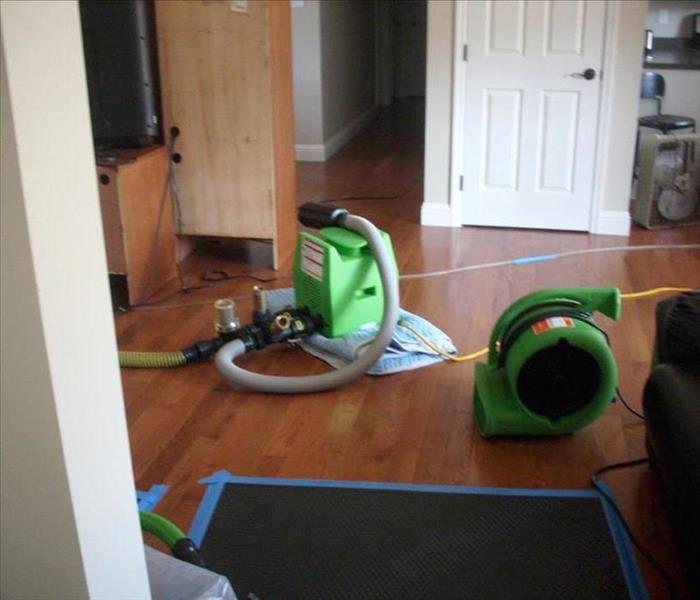 SERVPRO of Franklin County has the training and equipment to help make it “Like it never even happened.”
SERVPRO of Franklin County has the training and equipment to help make it “Like it never even happened.”
Did you know there is a science behind the process of drying?
The knowledge of psychrometrics is essential to restoring a water damaged structure to its preloss condition. While your initial reaction may be to grab a few towels to mop up the mess and place a fan or two around the damaged area, SERVPRO of Franklin County is trained in the science of drying and follow strict industry-approved standards to help lower the chances of any secondary damages.
If your business suffers a water damage, SERVPRO of Franklin County will:
- Inspect the building to detect every component that is wet, to help prevent secondary damage from happening.
- Measure how much moisture is in wet materials and monitor whether the materials are drying properly.
- Speed up Mother Nature by using professional drying equipment.
What exactly does “speed up Mother Nature” mean? A wet building can often dry naturally because the environment always seeks equilibrium. When materials are wet, moisture will naturally move to drier air at the surface of the material–but only if the air is, indeed, drier. The only problem is nature often takes too long and secondary damages may occur while the building is drying out. For this reason, SERVPRO of Franklin County has been trained to use professional equipment to help Mother Nature along, including equipment to help dry hardwood floors, tough-to-reach spaces inside walls, and much more.
DRYBOOK™ DOCUMENTATION
SERVPRO of Franklin County uses the latest technology to help ensure your property is dried quickly and efficiently. DryBook™ is a proprietary tool that:
- Manages industry drying requirements. n Provides real-time documentation on the drying process.
- Validates that services are executed to standard.
- Reports to all stakeholders involved.
- Allows real-time updates through DryBook™ Mobile integration. This improves results and restores your property at a faster rate, getting you back in your home or business sooner.
SERVPRO® also uses state-of-the-artmonitoring equipment and a proven scientific process to help speed the drying of your home or business.
The bottom line? SERVPRO of Franklin County has the training and equipment to help make it “Like it never even happened.”
Have Questions? Call Us Today – (636) 583-5200
A Small Disaster
7/30/2020 (Permalink)
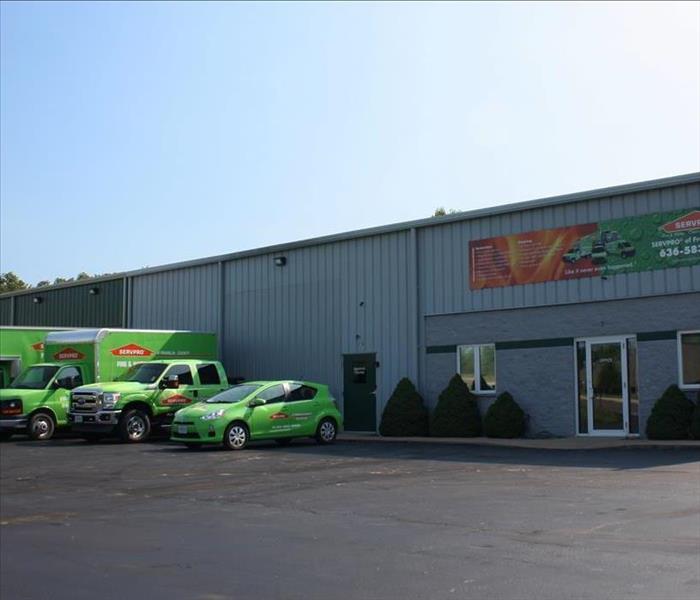 Water damage? Call the Professionals at SERVPRO of Franklin County
Water damage? Call the Professionals at SERVPRO of Franklin County
There is no such thing as a small disaster—especially when a small leak now could blossom into a big claim later. Unseen water can soak through walls, seep through carpet and pool on sub floors, causing major problems over time. You need help—fast.
No matter what time of day or night, contact SERVPRO of Franklin County to begin emergency mitigation. Emergency mitigation means under normal circumstances, SERVPRO can be on-site within four hours to begin drying your building and restoring contents. The faster the water is removed, the less chance of serious damage to your facility.
We are trained and understands how to manage the drying process. By utilizing state-of-the-art equipment and the latest technology, your structure will be quickly and thoroughly dried, which helps prevent secondary water damages. SERVPRO will remove moisture and any contaminants by disinfecting and deodorizing to safely clean and dry your building and contents. Help ensure the value of your property by calling SERVPRO of Franklin County today.
As the #1 choice in cleanup and restoration, we stand on over 50 years of experience and expertise to help ensure your business is taken care of as the economy begins to reopen.
Within Minutes....
6/17/2020 (Permalink)
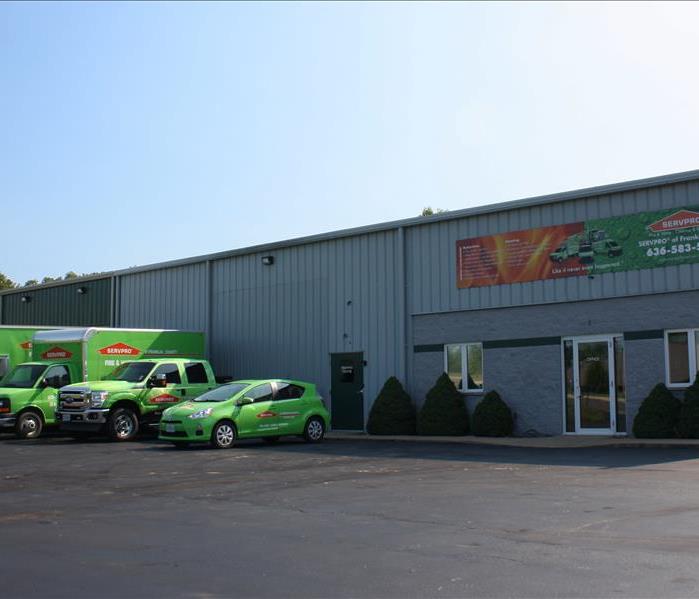 SERVPRO of Franklin County is READY to help when your home or business suffers water damage.
SERVPRO of Franklin County is READY to help when your home or business suffers water damage.
Within minutes of a water leak in your home, water quickly spreads throughout your property, saturating everything in its path. The water is absorbed into walls, floors, upholstery, and belongings, your furniture finishes may bleed, causing permanent staining on carpets. Your photographs, books, and other paper goods will start to swell and warp. Within 24 hours, your drywall will begin to swell and break down, you may even notice a musty odor. Therefore, when you have water damage, you want to call someone that arrives quickly to get started.
Not only does SERVPRO offer 24/7 response time 7 days a week, our goal is to be on site within 4 hours of loss notification. Usually, our response time is even less. For example, at a recent loss in Union, MO, we were on site within 20 minutes. This loss was in the basement of the home with most of the rooms 100% saturated. Drywall had to be removed as it was falling and to find the source. Non-salvageable materials were removed, and a power distribution box was required. There were also some contents that needed to be moved for the drying process. We used our moisture monitoring equipment to effectively measure and document the drying process to ensure the home was properly dried. This home was dry within 4 days with our state-of-the-art equipment.
If you have water damage in your home, please refer to our Water Damage Tips—Until Help Arrives Guide and follow these tips to protect yourself and your property.
You should call the water damage restoration specialists at SERVPRO of Franklin County for your water loss. We are always “Here to Help”!
Hidden Refrigerator Water Damage
2/14/2020 (Permalink)
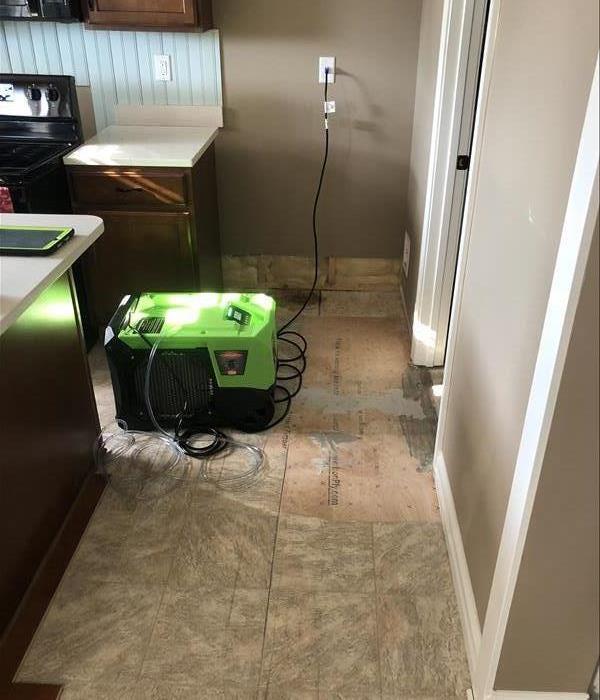 Water damage from a refrigerator line required the hardwood flooring to be removed in this Washington, MO home.
Water damage from a refrigerator line required the hardwood flooring to be removed in this Washington, MO home.
You don’t think about your refrigerator causing water damage to your home, but it’s possible. Take it from a customer (who requested to remain anonymous) and his wife, who didn’t realize their ice maker line had a slow drip that caused much more damage than it appeared. The customer states, “We noticed the hardwood floors buckling in front of the fridge, so we pulled it out and saw it had been leaking behind.” He says it didn’t appear to be too much damage at first adding, “We had some extra floorboards and thought we could just replace the boards under the refrigerator.” But they soon discovered it was a bigger task.
The customer called his insurance, who then contacted SERVPRO of Franklin County. It was discovered that the hardwood had been laid over vinyl flooring, which kept the water from going through to the subfloor, but trapped it between the two layers of flooring and caused damaged to the remaining hardwoods, where the customer thought was dry. He says, “We didn’t expect it to be anywhere else. They had to take up the hardwoods to get to it all. It was about ten foot across the floor.”
SERVPRO of Franklin County was prepared, however, and immediately began the drying process for this Washington, Missouri home. The customer was very happy with how quickly the work began and the communication to him and his wife through the process. “This happened over the Christmas holidays and we were needing to travel out of town. Nate had a key to the house, and we trusted that the job would get done. Everything worked out great! They did a wonderful job!”
Once the water damage was no longer a problem, SERVPRO of Franklin County also completed the reconstruction and laid new flooring. The customer says, “We had to replace flooring and the one we have now is better than before I think.” He states that the process was so smooth, and they felt that SERVPRO did great at keeping them in the loop, educating them, and completing the job. He included, “Nate and the crew did amazing work- over the top! I couldn’t be more please! My wife, who worried a bit, couldn’t be happier! Nate did an excellent job and we both felt reassured.”
He and his wife both feel that their home was in great hands and are quite happy with the work of SERVPRO of Franklin County. They will recommend us to friends and family and keep us in mind for future problems and cleanings.
Do you have a cleaning and restoration company that makes you feel this secure? Contact SERVPRO of Franklin County to see how we can help!
Everything is wonderful!
2/4/2020 (Permalink)
 Mold can form in as little as 48 hours. Don't wait, give SERVPRO of Franklin County a call if you experience water damage in your home or business.
Mold can form in as little as 48 hours. Don't wait, give SERVPRO of Franklin County a call if you experience water damage in your home or business.
Water damage can be stressful alone, but when you add in mold growth it can be a nightmare!
That’s how Doris Malone felt when she realized what was happening in her home in Union, MO. They had an upstairs toilet seal that had broken and caused water damage to the upstairs bathroom. They didn’t normally go in the upstairs bathroom, so they had no idea of the issue, nor how long it had been happening.
“We didn’t use that bathroom and there really wasn’t a reason for us to go in there.” This water finally managed to leak down into the main level, which is when they were made aware of the situation. They also discovered mold growth in their basement bathroom. Malone remembers, “I thought ‘oh no!’, I didn’t really know what to think.”
Malone called her insurance agent and they sent an adjuster to her house, who recommended Doris give SERVPRO of Franklin County a call. Malone says that once the crew was on the job she felt much more at ease with the situation, especially since Nate- SERVPRO of Franklin County’s production manager- was able to reassure her. “Nate was on top of it, he was awesome. I could tell they knew what they were doing.”
When asked about the process of drying and reconstruction in their home, Malone states, “It was wonderful. The drying process upstairs took a little longer than I’d hoped, but that was because of how long the leaking had been going on.” She also added that she felt included throughout the whole project and says, “Nate talked to us about everything and was very knowledgeable in leading us through it. And then we used your contractor, Jerry Bosson, and he was great and respectful.”
Doris Malone is quite happy with her home and the finished product. When asked how she felt about it, she said, “Everything is wonderful! We don’t have to worry about it anymore and if it happens again, I know what to do. I know to call you guys! I felt very taken care of.” She also says they recommend us to family and friends after seeing firsthand what we do.
If you have water damage or mold in your home, give SERVPRO of Franklin County a call! We are here to help make it “Like it never even happened.”
Impressive Water Damage Repair by SERVPRO
1/16/2020 (Permalink)
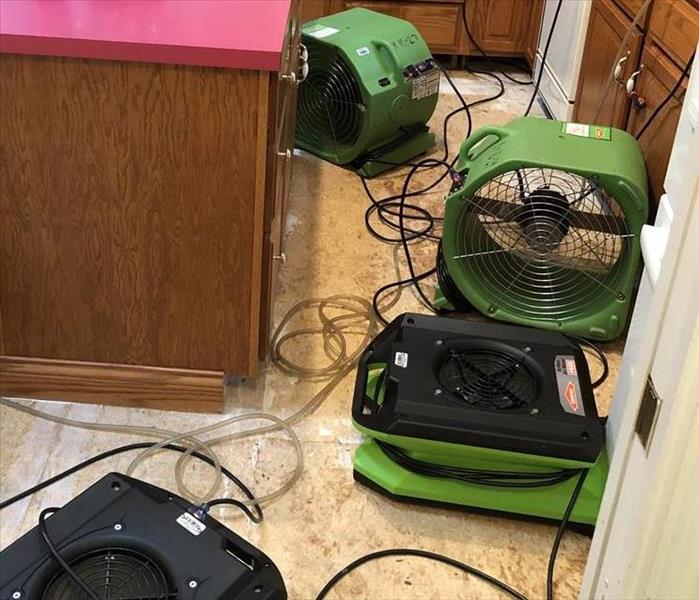 When water damage strikes, a fast response is critical. SERVPRO is "Here to Help" 24/7.
When water damage strikes, a fast response is critical. SERVPRO is "Here to Help" 24/7.
After a few days away from his home, William Fambrough came home to see inches of water all over his kitchen floor and leaking into the adjacent rooms. Fambrough said it was “very unnerving” to come home to that. The water had come from a faulty ice maker line to the refrigerator that had broken and been leaking some of the days he’d been away.
Having never dealt with something like this before, he cleaned up as much water off the floors as he could himself. “I wasn’t really sure what to do, but I got the bulk of the water up.” Then he contacted his insurance company- Beth Bowers Shelter Insurance in Pacific, MO. Fambrough says his agent recommended he contact SERVPRO of Franklin County right away, so he did. “The SERVPRO crew was out quickly the same day I contacted them, and they started the drying process. I was impressed that they made it out so quickly.”
Fambrough said the process was quick and easy. “The crew worked fast and knew what they were doing.” He also added, “The head of production was very kind and was willing to work with us on everything we needed, and he was very informative.”
When asked if he’d use SERVPRO of Franklin County again, Fambrough stated, “Of course. They did a great job and made it a painless experience.”
Knowing that we were able to create such a great customer experience for William Fambrough brings us pride. If YOU have water damage in your home, give SERVPRO of Franklin County a call!
Call Us 24/7 – (636) 583-5200
Flood Damage Restoration Recommendations for Uninsured Losses
10/29/2019 (Permalink)
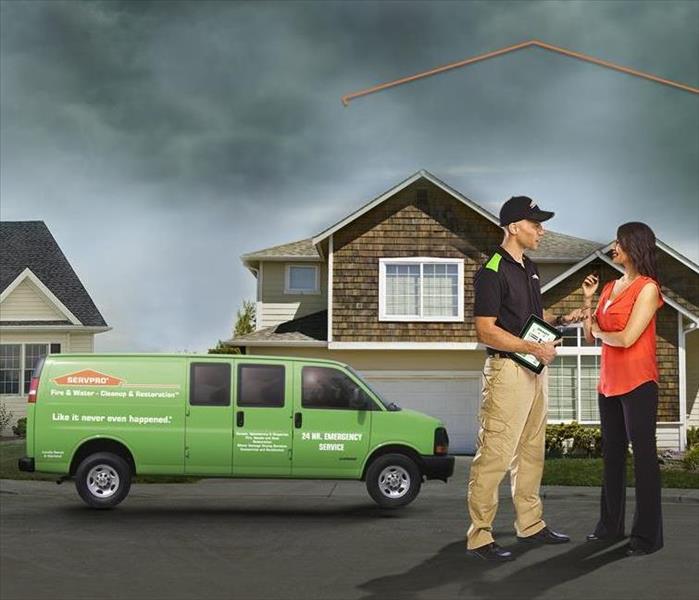 SERVPRO of Franklin County is here to help with your water damage, please give us a call 24/7.
SERVPRO of Franklin County is here to help with your water damage, please give us a call 24/7.
It is never too soon to start to consider what steps need to be taken especially when you don’t have adequate insurance for water damage.
The following recommendations assume a flooding situation with horizontally traveling Category 3 (unsanitary) water containing silt and other contaminants have infiltrated into homes and businesses to a depth of a few inches or feet and remained for multiple days. When structures are completely submerged or remain substantially flooded for several weeks, more elaborate procedures may be required.
- Foremost, consider safety:
- Evacuatepotentially respiratory or immune-compromised, or non-essential persons (e.g., children, the elderly, pregnant women; those recovering from extended illness or surgery, or those on regimens of prescription drugs or chemotherapy). When medical questions arise, consult with public health professionals.
- Before entering a heavily flood-damaged structure, open windows and doors and air it out thoroughly. Ventilation must be maintained during and following the restoration effort. This reduces but does not eliminate, the potential for inhaling pathogenic (disease causing) microorganisms. Also, allow as much sunlight into the structure as practical, since fresh air and ultraviolet light help inhibit microorganism growth.
- Consider the structural integrity of a damaged building before entering. Wear protective clothing, boots with steel or fiberglass shanks, and a hard hat. Have the building checked by a qualified builder or structural engineer when in doubt.
- Ensure that electrical shock hazards have been eliminated. Consult a licensed and qualified electrician when questions arise.
- Protect yourself from pathogenic microorganisms.Wear protective gloves before handling contaminated materials. Splash goggles should be worn to protect and prevent microorganism entry through the eyes. A vapor respirator (paint respirator) should be worn to prevent inhalation of most microorganisms or spores.
- Remove quantities of debris(silt, vegetation, floating objects) with shovels, rakes or any safe means practical. Clean and sanitize all tools when complete.
- Remove and dispose of drywall (Sheetrock®), paneling or other wall materialsup to a point 15-24″ inches above the visible water line. If practical, stay within four feet of the floor to salvage as much wall material as practical since drywall is usually installed horizontally in 4’x8’ or 4’x12’ panels.
- Remove and dispose of insulation materialsexposed during wall removal. Look for evidence of moisture wicking up insulation materials. Leave only materials that are durable, dry and minimally porous, and which can be cleaned and decontaminated with relative ease.
- Remove and dispose of carpet, cushion, pad, felt and sheet vinyl, or laminate flooring materials. Porous materials may absorb considerable quantities of water and contaminant, and non-porous materials may trap moisture to prolong drying. The inevitable result will be rapid microbial growth, along with associated odor and potential health hazards. Solid wood flooring should be removed since contaminants and moisture collect underneath in hollow areas between the wood and subfloor. The following procedures may require the assistance of a professional water-damage restorer, who has specialized biocides, and application and extraction equipment, if available.
- While maintaining ventilation and respiratory protection, liberally spray durable salvageable materials (e.g., studs, decking, joists) with appropriate biocides.Household chlorine bleach (e.g., Clorox®) mixed 1 part bleach to 11 parts water (½%) may be used on durable, colorfast surfaces. Never mix chlorine bleach with ammonia or strong acids!
- Following application of properly diluted biocides, brush agitate all areasto remove visible soils and to encourage biocide penetration into cracks and crevices. Professional restorers use pressurized spraying to accomplish this step.
- When fresh water is restored within the structure, flush contaminants from salvageable surfaces with a water hose or pressure washer.Work from top to bottom and from walls to flooring.
- Wet vacuum or mop up excess rinse water from flooring materials immediately.Thoroughly flush all contamination from wall frames. Pressure washing, if available, is specifically recommended to flush contaminants from hard-to-access areas, following contaminated water removal with industrial wet vacuuming equipment.
- Repeat steps 6-9 as necessary, until all surfaces are clean and contamination is physically removed.
- Lightly spray a final application of an approved non-chlorinated disinfectant to all salvageable surfaces.
- Dry structural components with plenty of air circulation, while maintaining constant ventilation (weather conditions permitting). If practical, take advantage of low outside humidity (check local weather reports). Use oscillating or box fans, moving them around the structure every few hours. Avoid temperature extremes that might slow drying or promote microorganism growth (68-86oF/20-30oC is ideal for growth). Rent high-volume professional drying equipment (airmovers and dehumidifiers) if available, especially in areas where ventilation is not possible (sealed buildings, security issues). All electrical components that were below the water line should be checked for operational safety by a qualified contractor.
- Leave cleaned structural surfaces exposed for several days or even weeks, or until you are sure that they have returned to within four percentage points of normal moisture content (generally the normal moisture content of structural wood is around 10%). Otherwise, subsequent structural damage and health hazards can result after wall and flooring materials have been replaced or painted.
- Durable, colorfast contents (e.g., washable clothing, dishes, glassware, furniture) might be salvageable if washed in warm detergent solutions. Common sense and caution should be used in determining contents salvageability.
Where financial resources permit, comprehensive restoration should be accomplished by trained, Institute of Inspection, Cleaning and Restoration Certification (IICRC) Water Damage Restoration Technicians. To prevent mold growth on structural materials, property owners should consider hiring a professional restorer to evaluate moisture levels in structural materials before reconstruction.
From initial and ongoing training at SERVPRO’s Corporate Training Facility to regular IICRC industry certifications, rest assured our staff is equipped with the knowledge to restore your property. Our training program includes the following:
- IICRC Training
- Employee Certification Training
- Initial Franchise Training
- e-Learnings
Please call us for more information regarding floor or water damage cleanup.
What is Dry Rot?
10/2/2019 (Permalink)
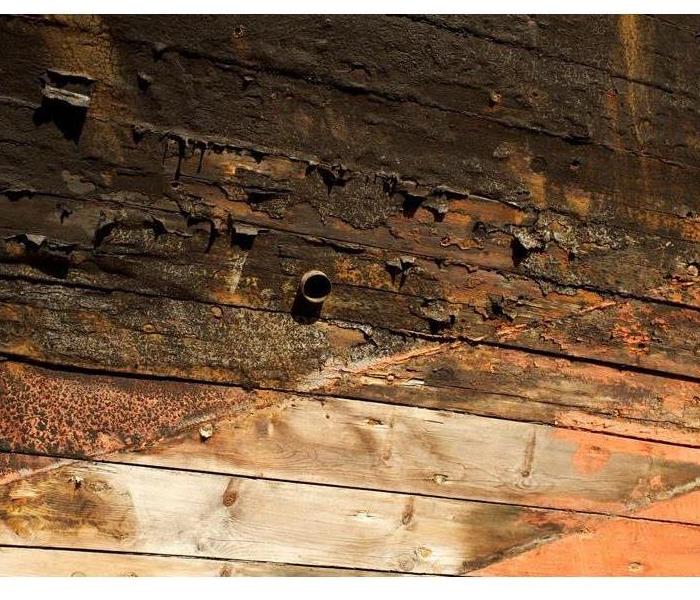 Do you have dry rot in your home?
Do you have dry rot in your home?
Would you know if your home had dry rot?
Dry rot can happen to any time or wood and in any climate. It can ruin the structure of your home, and is most commonly found in attics, basements, and under sinks.
What causes dry rot?
Despite the word “dry” in its name the fungus that causes dry rot grows when the moisture in the wood exceeds 20% or when the wood is exposed to sitting water and extreme humidity. Dry rot can leave wood weak and brittle.
The primary clues to look for in dry rot:
- Yellow tinge to the surface
- Deep cracks in the wood
- Wood will crumble
Since moisture is necessary for the fungus to grow, you can typically find dry rot when:
- After a flood or natural disaster
- After a plumbing accident or water damage
- In humid climates
- When wood is not properly dried
How can I protect my home from dry rot?
- Have a roofing company inspect your roof annually to check for leaks or holes that can let water in and cause dry rot.
- Make sure your gutters are installed properly and are directing water away from your home.
- Check your plumbing to make sure you don’t have any noticed leaks.
- Make sure your ventilation in bathrooms, kitchen and attics is working properly and can remove excess moisture from your home.
Why Choose SERVPRO of Franklin County?
Properly restoring your home after a water damage event requires specialized equipment and products. This advanced equipment helps us to remove the water, even hidden moisture, quickly and efficiently. We then dry the structure with powerful dehumidifiers. We provide emergency cleaning and restoration services 24 hours a day, 7 days a week—including all holidays.
Need Emergency Service? Call Us 24/7 – (636) 583-5200
Where is my Water Shut-off Valve Located?
9/18/2019 (Permalink)
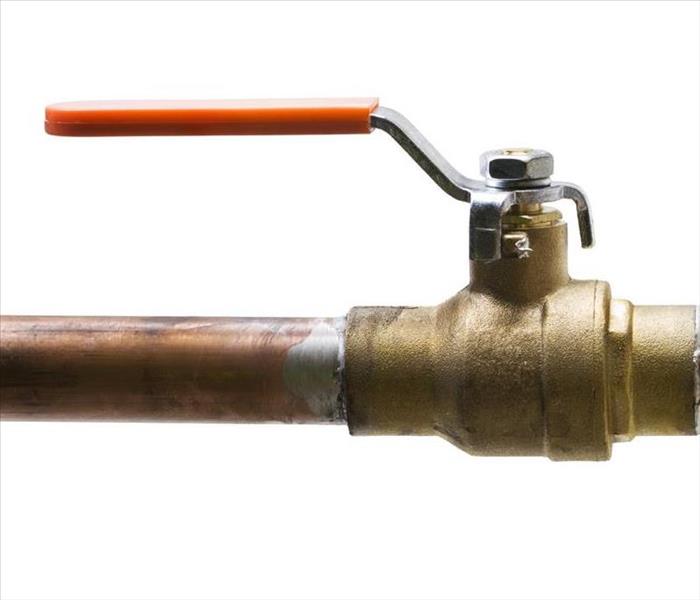 Do you know where your water shut-off valve is located?
Do you know where your water shut-off valve is located?
Do you know where your main water shut-off valve is located?
It’s important to know where it is in case of an emergency. If a pipe bursts or a toilet overflows, shutting off the water can help reduce water damage. Sometimes homeowners will shut off their water if they are leaving town or replacing plumbing as a precaution.
The location of your water shut-offs can vary, depending on location, water source and type of residence. Shut-off valves can be hard to find, so grab a flashlight.
More Than One Shut-Off Valve
There are usually more than one shut-off valve in your home – once for each appliance that uses water and a main shut-off for the entire home.
Shut-off valves are usually located near the item that needs the water supply, for instance your valves for your toilet, sink, or washing machine are usually behind the units or under the sink.
For example, if your toilet is going to overflow, don’t waste time running to the main shut-off, use the knob behind the toilet.
Main Valve Locations
If you have well water, you may have two main shut-off valves, one that goes from the well to the pressure tank and another from the tank to your plumbing. If you need to shut off the well quickly, you can trip the circuit breaker to the well to deactivate the well pump.
If you have city water, your valve may be located in your homes utility room, along with the furnace or water heater. It may also be located in a plastic or utility box in the ground in front of your home.
Too late for the shut-off valve?
If your home or business has experienced water damage, SERVPRO of Franklin County can help.
If your home has water damage from flooding, a leaking pipe, or other source, you need the company that can respond immediately and has the expertise and equipment to properly restore your property. We use advanced water damage inspection and extraction equipment to help find the moisture and to remove it as quickly as possible. Our highly trained technicians will monitor and document the drying process so that you know your property is back to normal.
Please refer to our Water Damage Tips—Until Help Arrives Guide and follow these tips to protect yourself and your property.
If you have water damage, give us a call 24/7, 7 days a week. We are “Here to help”. (636) 583-5200.
Three Categories of Water Damage
8/27/2019 (Permalink)
When you were little, did you ever play in puddles of water around drains or ditches? While it may have been fun, water such as this can be contaminated with sewage, chemicals, and bacteria that can transmit dangerous diseases. For the same reason, caution must be used when handling water damage.
Category of Water Determines Restoration Process
Water that invades your home or business can be harmful. Did you know there are there categories of water? The type of water determines how the restoration process is preformed and what precautions need to be taken. Obviously, a sewer backup versus a leaky pipe would be handled very differently.
Category 1: "Clean Water"
This is water from a clean source, such as a broken clean water supply line or faucet. If left untreated, category 1 water can quickly degrade into category 2 or 3 water depending upon such factors as time, temperature, and contact with contaminants.
- Water from a clean source like a broken water line
- If left untreated, can degrade into category 2 or 3
Category 2: "Gray Water"
This water has a significant level of contamination that could cause discomfort or illness if ingested. Sources for category 2 water may include washing machine overflow; toilet overflow with some urine, but no feces; or dishwasher overflow.
- May contain bacteria and viruses
- Can quickly degrade into category 3 if left untreated
Category 3: "Black Water"
This water is grossly unsanitary and could cause severe illness or death if ingested, and any contact should be avoided. Sources for category 3 water could include flooding from rivers or streams, water from beyond the toilet trap, water from the toilet bowl with feces, or standing water that has begun to support microbial growth.
- May contain untreated sewage, harsh chemicals, and microbes
- Water from flooding rivers or sewer backup
Trust the Professionals at SERVPRO of Franklin County
You can rest assured that our staff is highly trained in property damage restoration. From initial and ongoing training at SERVPRO’s Corporate Training Facility to regular IICRC industry certifications, to weekly training in our training center located at our office in Union, MO, you can count on our stuff being equipped with the knowledge to restore your property.
Our training program includes the following:
- IICRC Training
- Employee Certification Training
- Initial Franchise Training
- e-Learnings
- Continuing Education Classes
- Weekly training in our training center
If you have questions about recent water damage for your Franklin County, MO home or business, please give us a call (636) 583-5200. We are “Here to Help” 24/7, 7 days a week.
A Small Disaster
8/5/2019 (Permalink)
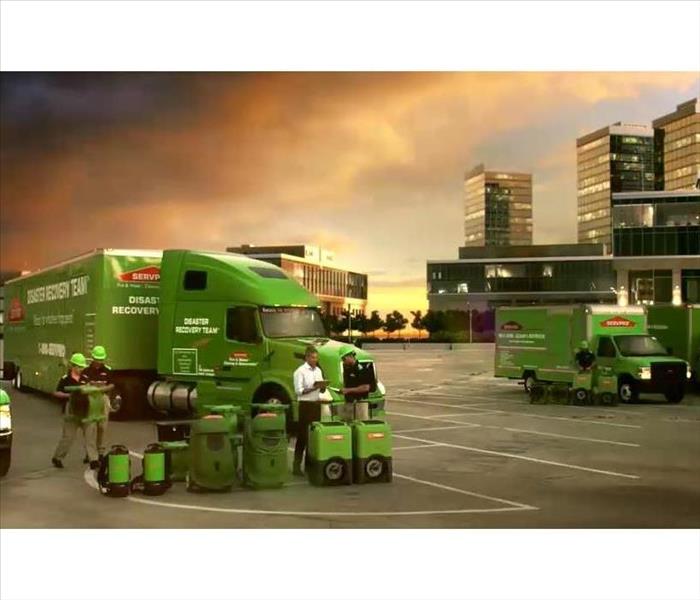 Water damage? No matter the size of your disaster, we are here to help.
Water damage? No matter the size of your disaster, we are here to help.
A little water is no big deal - right?
Not exactly.
There’s no such thing as a small disaster—especially when the water you don’t see contains bacteria or can cause mold, rot, and other unseen damage.
Water damage can affect the value of your property. Before you get out the mop bucket and try to clean it yourself, consider how the damage can affect your residential & commercial property.
SERVPRO of Franklin County knows how disruptive water damage can be for your business.
We are trained and equipped to manage the drying process from start to finish. By utilizing the proper equipment and moisture measuring devices, your home or business will be quickly and thoroughly dried to industry standards, which will help prevent secondary damages!
With rapid response time and a full line of water cleanup and restoration services, SERVPRO® of Franklin County can help you regain control quickly, by helping to ensure your facility and its contents are properly dried, deodorized and protected.
Before you risk further damaging the value of your residential or commercial facility by attempting to clean the mess yourself, call your Franklin County, MO water damage cleanup and restoration professionals at SERVPRO®.
Water in your basement?
6/24/2019 (Permalink)
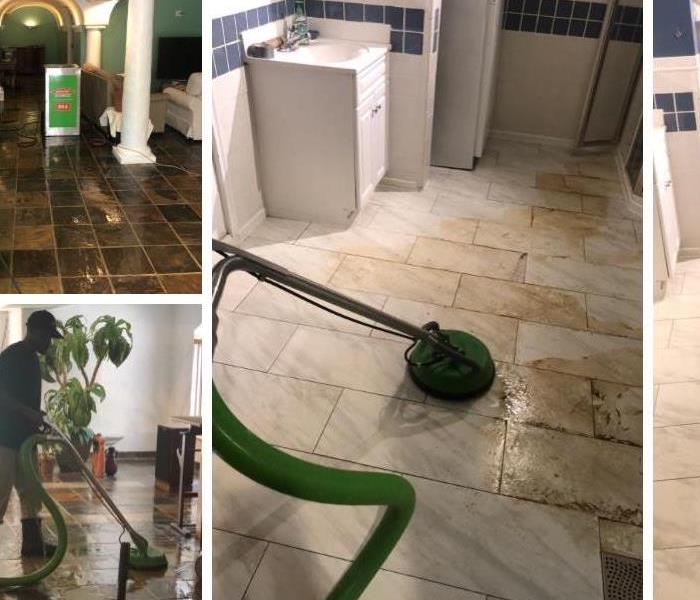 Basement Water Damage
Basement Water Damage
One of the worst nightmares for any homeowner is finding water in the basement, and in most cases, the only way to deal with such a situation is to bring in a professional. Excess water, especially when it is contaminated, has the potential to cause a great deal of damage, and if the problem is not dealt with properly, the situation can quickly get out of hand. This is especially true when water is pooling in the home and coming in contact with organic materials like drywall or fabric.Water in the basement can be caused by a lot of factors. The room may sit under the water table, which will slowly push water into the home. A disaster like a flood can quickly fill the room with fluid, as well as a burst pipe or other plumbing mishap. No matter what causes the water to build up in the home, it will take a certified team to remove it and restore the basement effectively.
There are a couple steps, though, that a homeowner can take to minimize damage and make the home safe to navigate through. If a pipe burst or is leaking, then cutting off the supply line into the home can halt the problem. Also, switching off the home’s power may be necessary, as an electrical discharge can make walking through water exceedingly dangerous and cause a fire.
Safety is the primary concern when contending with excess moisture, and a certified crew will be able to get the home restored in while avoiding any dangerous situations.
SERVPRO of Franklin County is water damage restoration specialists and are ready to restore your home or business back to pre-water damage condition. We quickly extract the water and then dry your property using state-of-the-art equipment. SERVPRO of Franklin County uses moisture monitoring equipment to effectively measure and document the drying process to ensure your property is dry.
Please refer to our Water Damage Tips—Until Help Arrives Guide and follow these tips to protect yourself and your property.
Need Water Damage or Flood Cleanup Services?
Call Us Today – (636) 583-5200
Within Minutes of a Water Leak
6/18/2019 (Permalink)
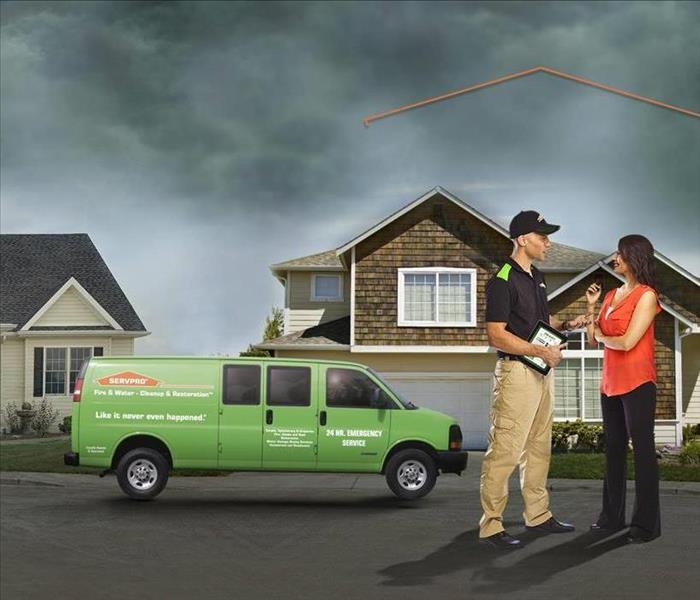 Water Damage Franklin County, MO
Water Damage Franklin County, MO
Within minutes of a water leak in your home, water quickly spreads throughout your property, saturating everything in its path. The water is absorbed into walls, floors, upholstery, and belongings, your furniture finishes may bleed, causing permanent staining on carpets. Your photographs, books, and other paper goods will start to swell and warp. Within 24 hours, your drywall will begin to swell and break down, you may even notice a musty odor. Therefore, when you have water damage, you want to call someone that arrives quickly to get started.
Not only does SERVPRO offer 24/7 response time 7 days a week, our goal is to be on site within 4 hours of loss notification. Usually, our response time is even less. For example, at a recent loss in Union, MO, we were on site within 20 minutes. This loss was in the basement of the home with most of the rooms 100% saturated. Drywall had to be removed as it was falling and to find the source. Non-salvageable materials were removed, and a power distribution box was required. There were also some contents that needed to be moved for the drying process. We used our moisture monitoring equipment to effectively measure and document the drying process to ensure the home was properly dried. This home was dry within 4 days with our state-of-the-art equipment.
If you have water damage in your home, please refer to our Water Damage Tips—Until Help Arrives Guide and follow these tips to protect yourself and your property.
You should call the water damage restoration specialists at SERVPRO of Franklin County for your water loss. We are always “here to help”!
Washington, MO - Water Damage
5/11/2019 (Permalink)
Nobody wants to come home and find their house soaked with water. But unfortunately for Derrick Sullivan, that’s exactly the situation he walked into.
Sullivan’s home in Washington, MO was one of many that experienced a water loss this year due to burst pipes. Sullivan came home around 6 p.m. one night, and found his living room, dining room and kitchen soaked.
“I was in a panic,” Sullivan said. “We had a lake in our house. I had my son with me that night. I put him upstairs, I shut off the water and tried to get everything together.”
Sullivan quickly called his insurance company, and SERVPRO of Franklin County was dispatched to the scene. Sullivan was one of many jobs SERVPRO of Franklin County received that day, but it was still able to respond quickly.
SERVPRO of Franklin County extracted the water and dried the structure, as multiple levels were affected. SERVPRO of Franklin County also removed the baseboards and the flooring underlayment. The house took about five days to get completely dried.
“I would have never thought that it would be done that quick,” Sullivan said.
After getting the house dried, SERVPRO of Franklin County began reconstruction. They also handled all the reconstruction except for flooring, including painting and installing new cabinets.
Sullivan was pleased with how quickly SERVPRO of Franklin County worked.
“I was very excited about the process,” he said. “It was very fast, that's the key. It was great working with you guys. I was a complete stranger and I had no problems trusting you guys.”
Sullivan said he would tell others to use SERVPRO if they had a water loss.
“I would definitely recommend you guys,” he said. “You guys were there on time, you worked fast. I couldn't have been happier.”
SERVPRO of Franklin County is located in Union, MO and serves the entire Franklin County, Missouri area. As leaders in the water damage industry, we have advanced training and expertise, not to mention a tremendous amount of hands-on experience.
Have Water or Flood Damage?
Call Us Today – (636) 583-5200
Repairing Mold Damage in Your Home
5/6/2019 (Permalink)
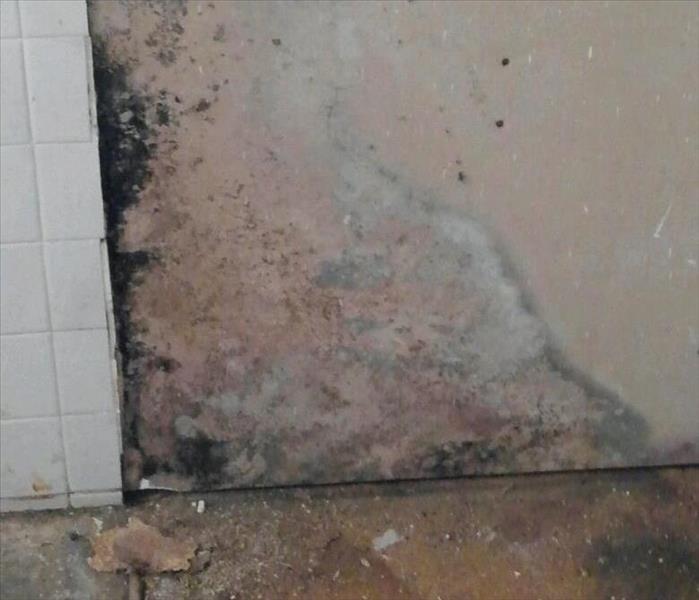 Mold Damage Franklin County, MO
Mold Damage Franklin County, MO
The Institute of Inspection, Cleaning and Restoration Certification (IICRC) shares below five steps a mold-removal specialist takes when conducting mold remediation.
Five steps each mold-removal specialist takes when conducting mold remediation include:
- Determine the degree of contamination
The first step for a mold remediation specialist may be to bring in an Indoor Environmental Professional (IEP) to determine the extent of the mold damage and test for contamination within the facility.
Because mold spores and other microscopic contaminants can travel easily throughout a building, the IEP may collect and analyze samples from affected, as well as unaffected, areas of the building. Once the IEP has finished the inspection they will develop a remediation plan for the mold-removal specialist with steps to return the home to its preloss condition (Condition 1).
- Set up and verify the containment
To make sure mold contamination does not spread to other areas of a facility, the mold-remediation specialist will set up containment by creating isolation barriers.
Once the barriers are set up, the specialist will need to verify the containment with a lower partial pressure differential (negative pressure) to ensure there is no air leakage between containment zones.
Exit chambers will then be used to serve as a transition between the containment and the unaffected area of the building. Once the containment is verified and the correct amount of pressure is achieved, the removal process can begin.
- Remove unsalvageable materials
Porous materials and items that cannot be restored or cleaned effectively must be carefully discarded. Unsalvageable items include, but are not limited to, drywall, insulation and other items with visible mold growth.
It is important for the specialist to wear the appropriate personal protective equipment (PPE), which may include a full-face respirator equipped with a P100/OV cartridge, disposable coveralls and nitrile gloves.
- Clean surfaces with a high attention to detail
A mold-remediation specialist will likely begin the cleaning process by thoroughly vacuuming the contaminated areas using a HEPA vacuum with a high efficiency filter to catch mold spores. He or she will then begin a detailed cleaning process involving mold removal tools such as a HEPA-filtered sander followed by the damp wiping of surfaces with an effective cleaning solution.
- Verify remediation
Once cleaning is complete, the IEP will return to verify the remediation was successful. The area must be returned to the dry standard and should be visually dust free with no malodors.
In addition, an IEP may perform surface or air sampling as part of the verification that the area is back to normal fungal ecology (Condition 1).
“Mold remediation requires mold removal specialists to perform techniques that promote source removal rather than relying on chemicals, paints and coatings as a replacement,” said Rachel Adams, President of Indoor Environmental Management Inc. “Understanding and managing air flow is also critical to the success of a mold remediation project. Working with qualified IEP can also help to reduce the liability for the technician as well as provide a final determination if the remediation was successful.”
Source: http://www.IICRC.org
Does Your Union, MO Home Have Water Damage?
3/19/2019 (Permalink)
 Union, MO Water Damage
Union, MO Water Damage
When your Union, MO home or business has water damage, you need to call a water damage restoration service. This is the kind of professional that no one wants to call, but when they are needed, it is important not to delay. You know that moisture is often the enemy. It is capable of penetrating into just about any space, and taking advantage of every little crack and structural problem. No matter how moisture gets into the building, the response should be the same. Bring in a certified firm, such as SERVPRO of Franklin County, as soon as possible to clean the home, dry it, and ensure there are no lingering health threats once the moisture is gone.
If water has entered the home through a contaminated source, don’t try to handle it on your own!
Floods and sewage backflows contain a cocktail of deadly bacteria, viruses and fungi, and even momentary skin contact can leave a person seriously ill. A certified water damage restoration service not only has the tools to eliminate the moisture, they have the personal protective equipment (PPE) to remain free from harm.
Restoration technicians have a lot of technology at their disposal. These include powerful vacuums and pumping systems, high volume air movers, dehumidifiers, heat injectors, moisture meters, and a number of detergents formulated for destroying fungi and other microbial threats.
While the technicians work on the building, disposing of compromised materials, and drying the rest, they will also destroy all mold and microbial colonies. This is the only way to ensure a home is safe to live, and a business safe to work in; any other cleaning method is a dangerous gamble.
The Institute of Inspection Cleaning and Restoration Certification (IICRC) sets practical standards for restoration and cleaning. The IICRC S500 Water Damage Guide is a specific set of practical standards that incorporate the field of psychometry, which involves the manipulation of temperature and relative humidity to remove moisture and dry a property quickly and effectively.
Call SERVPRO of Franklin County. We are water damage restoration specialists and are ready to restore your Union, MO home back to pre-water damage condition. We quickly extract the water and then dry your property using state-of-the-art equipment.
Please refer to our Water Damage Tips—Until Help Arrives Guide and follow these tips to protect yourself and your property.
Call SERVPRO of Franklin County 24/7 - (636) 583-5200
Be Flood SMART
3/12/2019 (Permalink)
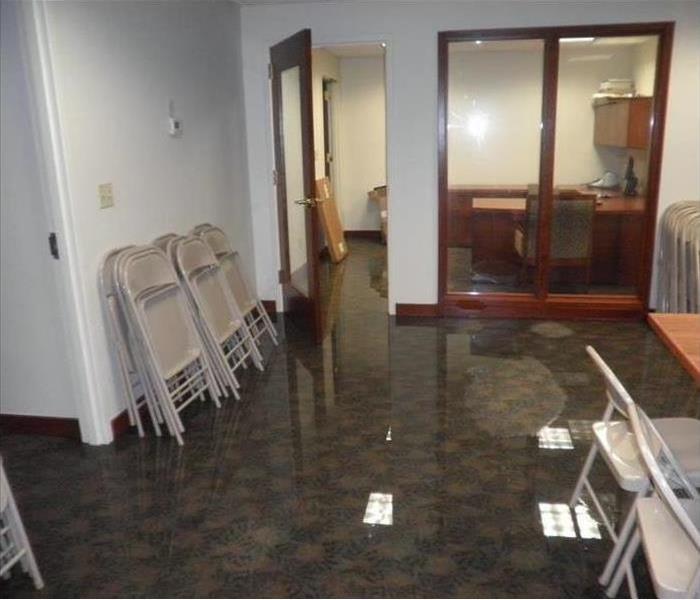 Flooding Damage Union MO
Flooding Damage Union MO
Floods are one of the most common and widespread natural disasters in the United States. Whether your home or business is near a coastline, along city streets, in the mountains, near a river or even in the desert-there is always potential for flood damage.
Floodsmart.gov reports, in the last five years, all 50 states have experienced floods or flash floods. According to the American Red Cross (ARC), floods cause more damage in the U.S. every year than any other weather-related disaster.
The ARC offers the following flood safety tips.
- Stay away from floodwaters. If you come up on a flowing stream where water is above your ankles, stop, turn around and go another way. Six inches of swiftly moving water can sweep you off your feet.
- If you approach a flooded road while driving, turn around and go another way. If you are caught on a flooded road and waters are rising rapidly around you, get out of the car quickly and move to higher ground. Most cars can be swept away by less than two feet of moving water.
- Keep children out of the water. They are curious and often lack judgment about running water or contaminated water.
If a flood does strike your home or business, contact SERVPRO of Franklin County. Even minor floods have the potential to cause major damage to a structure when not treated quickly and properly, and the cleanup is often an overwhelming task. The SERVPRO® System is prepared to handle any size disaster.
When fire and water take control of your life, SERVPRO of Franklin County will help you take it back.
Flooding Can Happen Anywhere
2/27/2019 (Permalink)
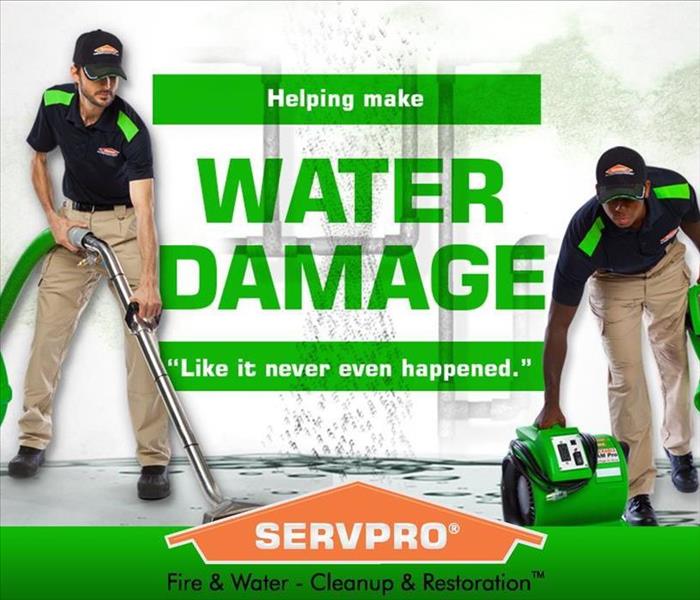 Water Damage Restoration
Water Damage Restoration
According to the National Weather Service (NOAA), “Approximately seventy-five percent of all Presidential disaster declarations are associated with flooding.”
NOAA lists the most common flood hazards in the United States as:
- Flash Flooding
- River Flooding
- Storm Surge and Coastal Inundation from Tropical and Non-Tropical Systems
- Burn Scars/Debris Flows (Caused by Wildfires)
- Ice/Debris Jams
- Snowmelt
- Dry Wash (Caused by heavy rainfall in dry areas)
- Dam Breaks/Levee Failure
Just because you haven’t experienced a flood doesn’t mean you won’t in the future.
In fact, 20% of all claims paid by the National Flood Insurance Program (NFIP) were for policies in low-risk communities. On average, floods cost $3.5 billion in annual losses in the U.S., and commercial flood claims average more than $75,000 (NFIP).
When catastrophic water damage happens to you, SERVPRO® of Franklin County can help. We can help you prepare ahead of time with an Emergency Ready Profile® (ERP) or respond to any size disaster to begin cleanup and restoration to get you back in business as soon as possible.
SERVPRO of Franklin County is ready to help make it “Like it never even happened.”
Understanding Water Types
2/27/2019 (Permalink)
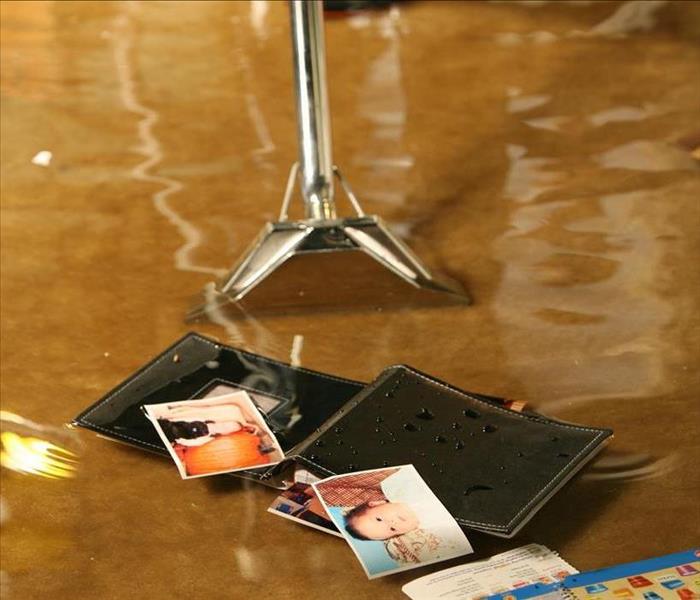 Types of Water Damage - Union, MO
Types of Water Damage - Union, MO
When your home or business suffers a water damage, understanding what type of water you are dealing with is critical to ensuring proper cleanup.
There are three types of water:
Clean water is water from a broken pipe, or other water source; rainwater is also considered clean.
Gray water is used to classify slightly contaminated water. Clean water becomes gray water when it is left untreated allowing bacteria and other contaminants to begin growing, making the water hazardous.
Black water is highly contaminated and filled with fungi, bacteria, chemicals and more. Black water is typically caused by sewage damage, flooding or any type of natural disaster. Black water should always be handled by trained professionals.
Consider taking the following precautions to help minimize damage or prevent further damage while waiting for help to arrive.
Damage from Clean Water
- Shut off the water source if possible or contact a qualified professional to do so.
- Turn off circuit breakers for wet areas of the building if access to the power distribution panel is safe from potential electrical shock. Do not enter rooms with standing water, as electrical shock hazards may exist.
- Remove as much excess water as possible by mopping and blotting. Wipe excess water from wood furniture after removing lamps and tabletop items.
- Remove and prop up wet upholstery cushions to allow more even drying.
- Move any paintings, art objects, computers, documents and other valuable items that may be sensitive to moisture to a safe place.
- Do not leave books, newspapers, magazines or other colored items on wet carpets or floors as they may cause staining.
- Do not use your household vacuum cleaner to remove water as there is potential for electrical shock or causing damage to the vacuum cleaner.
- Do not turn on ceiling fixtures if ceiling is wet; do not enter rooms where ceilings are sagging from retained water.
Damage from Contaminated Water
- Avoid all contact with sewage and items contaminated by sewage. Wash your hands thoroughly if you come in contact with contaminated items.
- Do not walk through contaminated areas, as you could spread damage to unaffected areas.
- Do not turn on the HVAC system if there is a possibility of spreading contaminated air.
- Do not use household fans to dry the structure; air flow could spread contaminants.
- Discard any food and/or products for personal hygiene and cleanliness if exposed to the contaminated areas.
When you have a water damage, don’t leave your property to chance. Call SERVPRO of Franklin County.
Water Damage in your Union, MO Home?
2/18/2019 (Permalink)
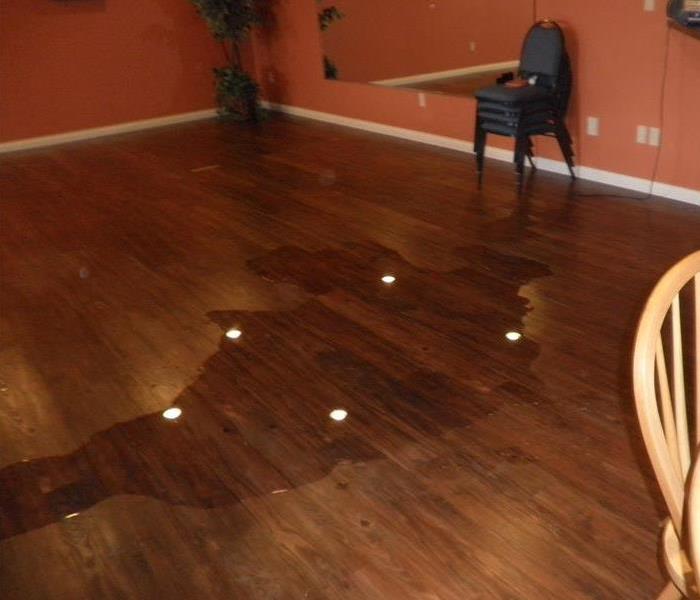 Union, MO Water Damage
Union, MO Water Damage
A water damage restoration service is the kind of professional that no one wants to call, but when they are needed, it is important not to delay. Homeowners know that moisture is often the enemy, capable of penetrating into just about any space, and taking advantage of every little crack and structural problem. No matter how moisture gets into the building, the response should be the same. Bring in a certified firm as soon as possible to clean the home, dry it, and ensure there are no lingering health threats once the moisture is gone.If water has entered the home through a contaminated source, don’t try to handle it on your own. Floods and sewage backflows contain a cocktail of deadly bacteria, viruses and fungi, and even momentary skin contact can leave a person seriously ill. A certified water damage restoration service not only has the tools to eliminate the moisture, they have the protective equipment to remain free from harm.
Restoration technicians have a lot of technology at their disposal. These include powerful vacuums and pumping systems, high volume air movers, dehumidifiers, heat injectors, moisture meters, and a number of detergents formulated for destroying fungi and other microbial threats. While the technicians work on the building, disposing of compromised materials, and drying the rest, they will also destroy all mold and microbial colonies. This is the only way to ensure a home is safe to live, and a business safe to work in; any other cleaning method is a dangerous gamble.
The Institute of Inspection Cleaning and Restoration Certification (IICRC) sets practical standards for restoration and cleaning. The IICRC S500 Water Damage Guide is a specific set of practical standards that incorporate the field of psychometry, which involves the manipulation of temperature and relative humidity to remove moisture and dry a property quickly and effectively.
We are water damage restoration specialists and are ready to restore your Union home back to pre-water damage condition. We quickly extract the water and then dry your property using state-of-the-art equipment. SERVPRO of Franklin County uses moisture monitoring equipment to effectively measure and document the drying process to ensure your property is dry.
Please refer to our Water Damage Tips—Until Help Arrives Guide and follow these tips to protect yourself and your property.
Keep Your Pipes from Bursting
1/21/2019 (Permalink)
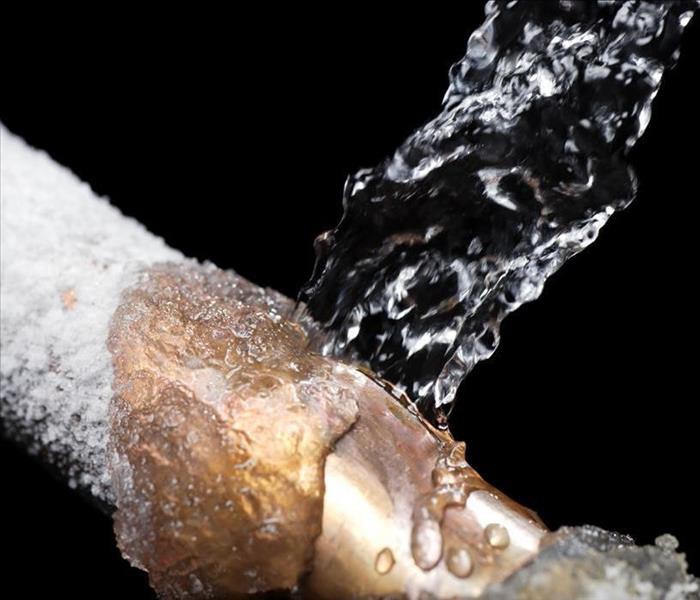 If your pipes burst, call SERVPRO of Franklin County
If your pipes burst, call SERVPRO of Franklin County
The cold weather is here! When the temperatures go below freezing, your property is at risk for freezing pipes. This can create a major disaster in your home or business.
Be Prepared
- Know where your water shut off is located, in case of a frozen water pipe burst.
- Insulate exposed pipes in your home or business, especially if they are in unheated rooms.
- Open bathroom and kitchen cabinet doors during cold spells to allow warmer air to circulate around the plumbing.
- During extremely cold weather, keep a slow trickle of water flowing through faucets. Running water is less likely to freeze.
- Consider shutting off outdoor faucets and open the outdoor faucet to help ensure it completely drains and the inner valve is shut off.
- Keep your heat set to the same temperature both day and night.
- If you plan on being away from your property for an extended period of time, leave the heat on and set the thermostat to at least 55°F.
Discovered Frozen Pipe
- First sign of freezing is reduced water flow from a faucet.
- Keep the faucet open when treating frozen pipes.
- Apply heat to the frozen sections using a heating pad, hair drier, or another safe heat source. Do not use an open flame device.
- Check additional pipes and faucets for freezing.
When a Pipe Bursts
- Shut off the water at the main valve.
- Call your local restoration professionals, SERVPRO® of Franklin County.
A burst pipe can cause considerable damage to your property if not addressed quickly.
If winter weather causes water damage to your home or business, call SERVPRO® of Franklin County.
We are available 24/7/365 in Franklin County, MO and ready to restore to preloss condition.
Weather WORRIES
12/31/2018 (Permalink)
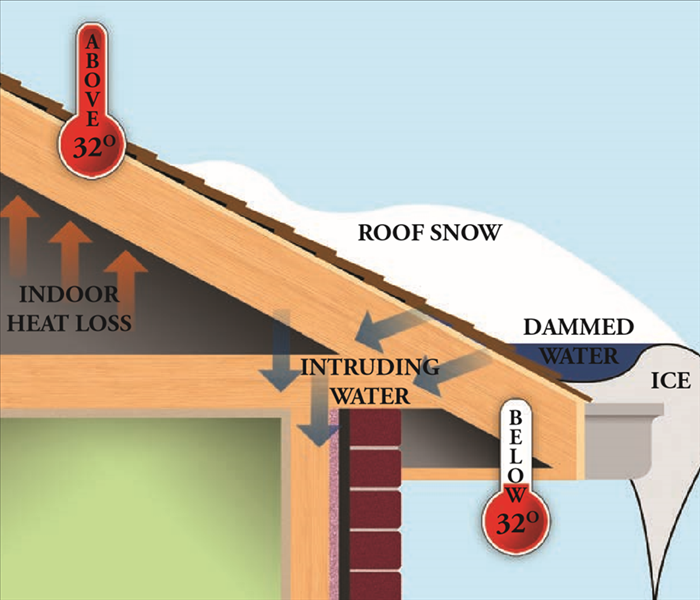 This image shows the circumstances in which ice dams form on a roofline.
This image shows the circumstances in which ice dams form on a roofline.
Winter weather can bring about more issues than just slippery roads and a sidewalk to shovel. If you live where temperatures sink below freezing level, you are also at risk for frozen pipes and ice dams, which can create a major disaster at your home or property.
FROZEN PIPES
Frozen pipes are often those exposed to the cold weather, such as those outside your house, or in cold areas such as basements, attics, garages, or kitchen cabinets.
A frozen pipe can burst at the point where the ice blockage inside the pipe is located, but typically the rupture is caused by the backflow pressure between the water source and the blockage.
A burst pipe can cause considerable damage to your property if not addressed quickly.
To prevent pipes from freezing, here are a few steps you can take, according to The American Red Cross:
- Be sure to completely drain water from swimming pool and sprinkler lines, as well as outside hoses.
- Open kitchen cabinets to let warm air circulate near the plumbing.
- When the weather is extremely cold, let water drip from faucets that may come from exposed pipes.
- Keep your heat set to the same temperature both day and night.
ICE DAMS
Ice dams can be a little-known, but major problem during the snowy season.
They form when heated air melts roof snow downward into water dammed behind still-frozen ice. When the trapped water cannot safely flow or run into the gutter system, it can backflow under the roof ’s shingles and into the structure’s interior areas, as well as causing gutters and shingles to move or fall.
Icicles can be an initial sign of an ice dam, according to Travelers.com. To spot ice dams inside, “check for water stains or moisture in your attic or along the ceiling of exterior walls of your house.
Water stains or moisture may be an indication that an ice dam has formed and water has penetrated the roof membrane.”
Removing an ice dam as soon as it is found is vital to helping prevent damage to your property and can be done using heated cables, a roof shovel, or calcium chloride ice melter.
If winter weather causes water damage to your property, SERVPRO of Franklin County Professionals are only a call away, 24/7, ready to restore to preloss condition.
Source: redcross.org, Travelers.com
Why Should You Choose an IICRC Certified Restoration Company?
12/18/2018 (Permalink)
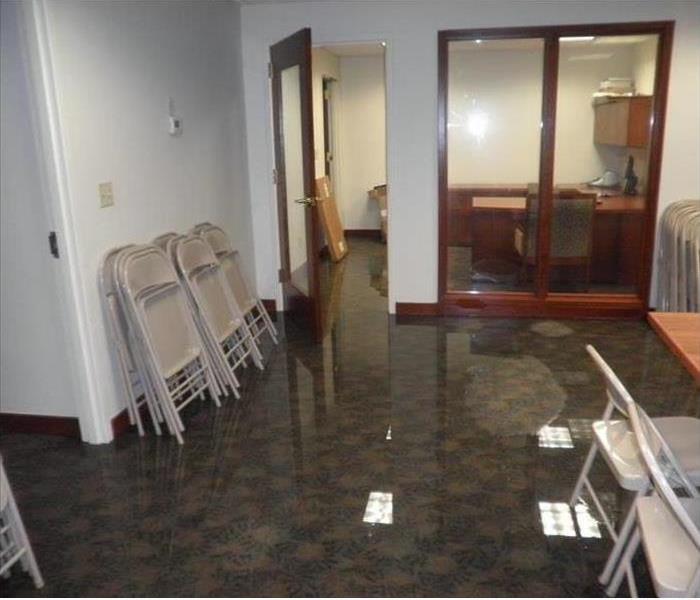 Water Restoration IICRC Union, MO
Water Restoration IICRC Union, MO
When your home or business is damaged by water from a broken pipe, flood, sewage backup, or overflowing appliances you want a professional that is certified by the IICRC and will dry your property back to preloss condition.
The IICRC is an acronym for the Institute of Inspection, Cleaning and Restoration Certification, an organization developed in 1972 to set standards for the inspection, cleaning, and restoration service industries.
To obtain certification, future technicians must take a serious of classes in specialized areas of cleaning, inspection and restoration and pass a standardized exam. The IICRC certifications indicates the amount of knowledge in remediation and restoration needed to safely restore a home or business. Although it is not a requirement to function, you can expect a degree of confidence by having an IICRC certified company perform remediation.
If your home is damaged by water and not properly restored, it can cause mold to form which increases the cost of the remediation. Mold can form in as little as 48 hours, so timely restoration is key in properly restoring your home.
You know that by hiring an IICRC Certified company you are hiring a team of professionals that have been trained to the highest standards to restore your home. SERVPRO of Franklin County is IICRC Certified and in operation in Union, MO for over 10 years.
It is our goal to be "Here to Help" when our neighbors here in Franklin County, MO need us. Whether it be the next great flood or simply an overflowed toilet, we will make your disaster “Like it never even happened.”
The Science of Drying
12/10/2018 (Permalink)
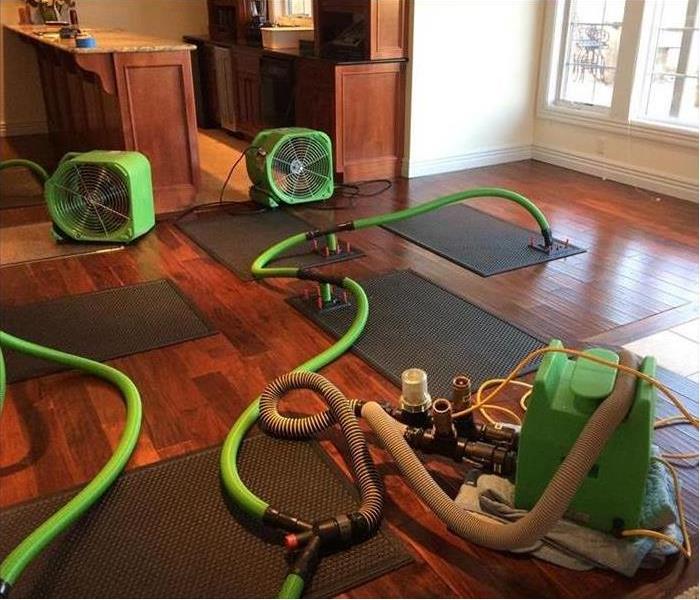 The science of drying
The science of drying
Did you know there is actually a science behind the process of drying?
The knowledge of psychrometrics is essential to restoring a water damaged structure to its preloss condition. While your initial reaction may be to grab a few towels to mop up the mess and place a fan or two around the damaged area, SERVPRO of Franklin County is trained in the science of drying and follow strict industry-approved standards to help lower the chances of any secondary damages.
If your business suffers a water damage, SERVPRO of Franklin County will:
- Inspect the building to detect every component that is wet, to help prevent secondary damage from happening.
- Measure how much moisture is in wet materials and monitor whether the materials are drying properly.
- Speed up Mother Nature by using professional drying equipment.
What exactly does “speed up Mother Nature” mean? A wet building can often dry naturally because the environment always seeks equilibrium. When materials are wet, moisture will naturally move to drier air at the surface of the material–but only if the air is, indeed, drier. The only problem is, nature often takes too long and secondary damages may occur while the building is drying out. For this reason, SERVPRO of Franklin County has been trained to use top-of-the line equipment to help Mother Nature along, including equipment to help dry hardwood floors, tough-to-reach spaces inside walls, and much more.
DRYBOOK™ DOCUMENTATION
SERVPRO of Franklin County uses the latest technology to help ensure your property is dried quickly and efficiently. DryBook™ is a proprietary tool that:
- Manages industry drying requirements. n Provides real-time documentation on the drying process.
- Validates that services are executed to standard.
- Reports to all stakeholders involved.
- Allows real-time updates through DryBook™ Mobile integration. This improves results and restores your property at a faster rate, getting you back in your home or business sooner.
SERVPRO® also uses state-of-the-art
monitoring equipment and a proven scientific process to help speed the drying of your home or business.
The bottom line? SERVPRO of Franklin County has the training and equipment to help make it “Like it never even happened.”
Have Questions? Call Us Today – (636) 583-5200
Does your Sullivan, MO home have water damage?
7/18/2018 (Permalink)
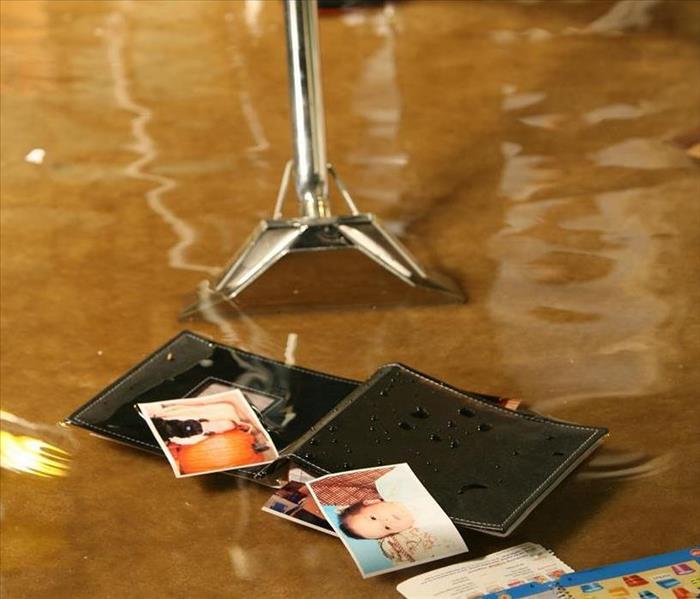 Water Damage Sullivan. MO
Water Damage Sullivan. MO
Whether a storm passes or the upstairs toilet overflows, your home may suffer water damage that is difficult to repair. There are many things you can do to begin repairing any destruction, but a professional will likely be needed to get rid of any serious health or structural threats.
Floods can carry pathogens and water damage left alone long enough may become a breeding ground for mold.
Sewage backups should be considered very dangerous. The water is grossly unsanitary and may contain bacteria and viruses that could cause serious illness. Special training and equipment is necessary to safely clean this type of contamination.
The main reason why a building is sensitive to water damage is because moisture can be difficult to detect. Standing liquids can encourage microbial growth within 24 hours and can saturate all kinds of textiles and seep through drywall.
Moisture may collect behind the walls, where mold and bacteria may multiply out of sight. Reacting quickly enough, clothes and furniture may be saved. However, there can be electrical and other hazards when entering a building that has recently been flooded.
SERVPRO of Franklin County can quickly identify what items in the home are compromised by water damage.
Normally, anything that is porous may need to be discarded if it has come in contact with contaminated fluids. (For example, black water losses like sewage backups or flood damage.) These porous items, like mattresses, box springs, pillows and particle board, trap more moisture than other materials and foster the growth of microbes.
Our technicians can locate hidden pockets of moisture using specialized equipment. There are some materials that may not feel wet on the outside.
When these moisture pockets are found, our technicians will expose them to air by removing any drywall or other materials in the way. Our technicians will monitor and document the drying process to ensure your property is back to normal.
Read more about the typical restoration process.
Our highly trained technicians are ready to respond immediately to flood or water damage at your Union, MO or Franklin County, MO property. We also offer Commercial Services to our local businesses.
Please follow our tips outlined in the Water Damage Tips—Until Help Arrives Guide to protect yourself and your property.
Do You Have Water or Flood Damage? Give us a call for a free estimate – (636) 583-5200
Toilet Overflow?
7/6/2018 (Permalink)
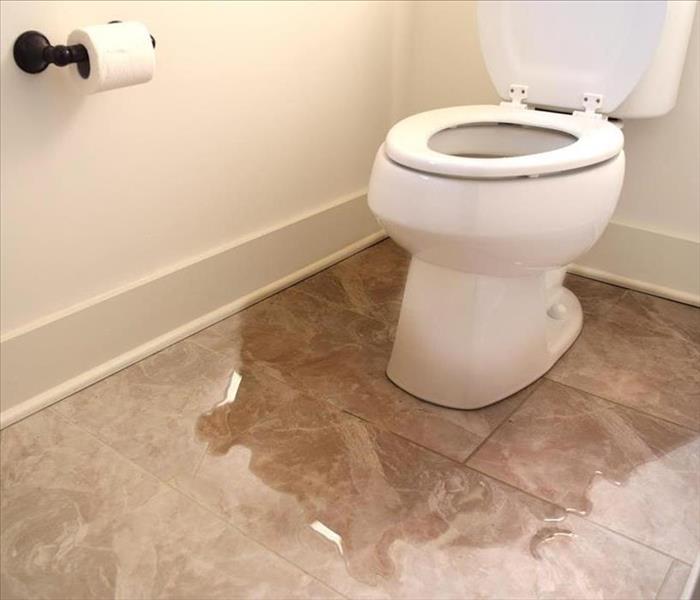 Toilet overflow; Water Damage Restoration; Call the professionals at SERVPRO of Franklin County.
Toilet overflow; Water Damage Restoration; Call the professionals at SERVPRO of Franklin County.
Sewage Cleanup and Restoration
Water from sewer system backups should be considered very dangerous. The water is grossly unsanitary and may contain bacteria and viruses that could cause serious illness. Special training and equipment is necessary to safely clean this type of contamination.
Sewage Backup or Toilet Overflow? Call Us Today – (636) 583-5200
There are three major types of contaminated water. SERVPRO of Franklin County will inspect that contaminated water to determine the type of water and then plan the appropriate response to safely restore your home or business.
The three types of contaminated water:
Category 1: "Clean Water"
- This is water from a clean source, such as a broken clean water supply line or faucet. If left untreated, category 1 water can quickly degrade into category 2 or 3 water depending upon such factors as time, temperature, and contact with contaminants.
- Water from a clean source like a broken water line
- If left untreated, can degrade into category 2 or 3
Category 2: "Gray Water"
- This water has a significant level of contamination that could cause discomfort or illness if ingested. Sources for category 2 water may include washing machine overflow; toilet overflow with some urine, but no feces; or dishwasher overflow.
- May contain bacteria and viruses
- Can quickly degrade into category 3 if left untreated
Category 3: "Black Water"
- This water is grossly unsanitary and could cause severe illness or death if ingested, and any contact should be avoided. Sources for category 3 water could include flooding from rivers or streams, water from beyond the toilet trap, water from the toilet bowl with feces, or standing water that has begun to support microbial growth.
- May contain untreated sewage, harsh chemicals, and microbes
- Water from flooding rivers or sewer backup
24 Emergency Service
Sewage backup should be considered an emergency and dealt with as quickly as possible. We are the water damage restoration specialists with specific training and expertise to safely restore your home or business. You can contact us 24/7 for your commercial and residential emergency water restoration.
Locally Owned Company with National Resources
We live and work in this community too; we might even be neighbors. As a locally owned and operated business, SERVPRO of Franklin County is close by and ready to respond to your flood or water damage emergency. We are proud to be an active member of the Franklin County, MO community and want to do our part to make our community the best it can be.
Within Minutes of a Water Leak
6/22/2018 (Permalink)
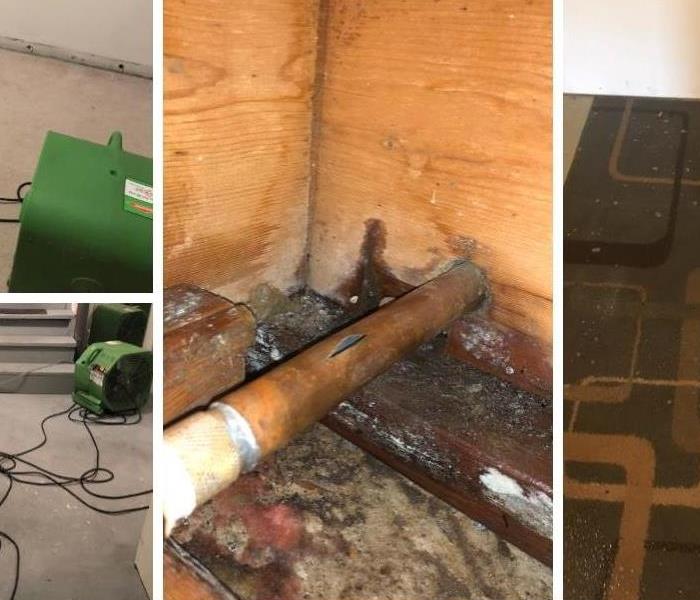 Water Damage in Union, MO
Water Damage in Union, MO
Within Minutes
Within minutes of a water leak in your home, water quickly spreads throughout your property, saturating everything in its path. The water is absorbed into walls, floors, upholstery, and belongings, your furniture finishes may bleed, causing permanent staining on carpets. Your photographs, books, and other paper goods will start to swell and warp. Within 24 hours, your drywall will begin to swell and break down, you may even notice a musty odor. Therefore, when you have water damage, you want to call someone that arrives quickly to get started.
Not only does SERVPRO offer 24/7 response time 7 days a week, our goal is to be on site within 4 hours of loss notification. Usually, our response time is even less. For example, at a recent loss in Union, MO, we were on site within 20 minutes. This loss was in the basement of the home with most of the rooms 100% saturated. Drywall had to be removed as it was falling and to find the source. Non-salvageable materials were removed, and a power distribution box was required. There were also some contents that needed to be moved for the drying process. We used our moisture monitoring equipment to effectively measure and document the drying process to ensure the home was properly dried. This home was dry within 4 days with our state-of-the-art equipment.
If you have water damage in your home, please refer to our Water Damage Tips—Until Help Arrives Guide and follow these tips to protect yourself and your property.
You should call the water damage restoration specialists at SERVPRO of Franklin County for your water loss. We are always “here to help”!
Call Us Today – (636) 583-5200
What To Do If You Find Water In The Basement?
6/20/2018 (Permalink)
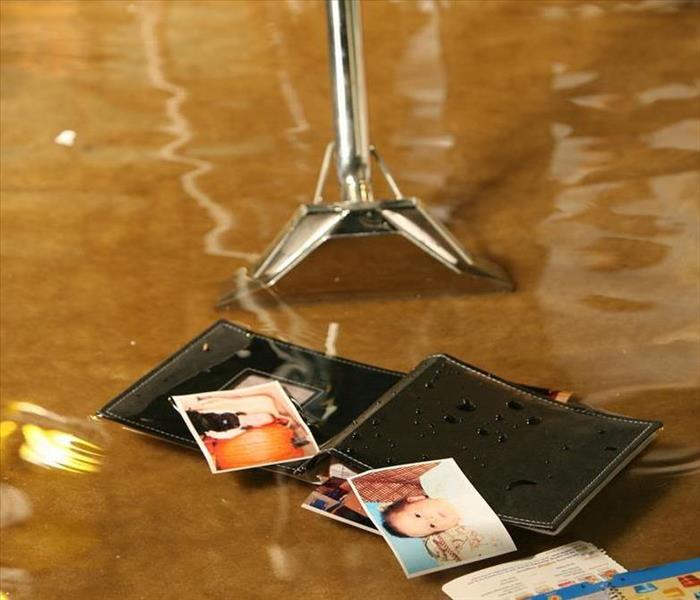 Water in your Union, MO basement?
Water in your Union, MO basement?
One of the worst nightmares for any homeowner is finding water in the basement, and in most cases, the only way to deal with such a situation is to bring in a professional. Excess water, especially when it is contaminated, has the potential to cause a great deal of damage, and if the problem is not dealt with properly, the situation can quickly get out of hand. This is especially true when water is pooling in the home and coming in contact with organic materials like drywall or fabric.Water in the basement can be caused by a lot of factors. The room may sit under the water table, which will slowly push water into the home. A disaster like a flood can quickly fill the room with fluid, as well as a burst pipe or other plumbing mishap. No matter what causes the water to build up in the home, it will take a certified team to remove it and restore the basement effectively.
There are a couple steps, though, that a homeowner can take to minimize damage and make the home safe to navigate through. If a pipe burst or is leaking, then cutting off the supply line into the home can halt the problem. Also, switching off the home’s power may be necessary, as an electrical discharge can make walking through water exceedingly dangerous and cause a fire.
Safety is the primary concern when contending with excess moisture, and a certified crew will be able to get the home restored in while avoiding any dangerous situations.
SERVPRO of Franklin County is water damage restoration specialists and are ready to restore your home or business back to pre-water damage condition. We quickly extract the water and then dry your property using state-of-the-art equipment. SERVPRO of Franklin County uses moisture monitoring equipment to effectively measure and document the drying process to ensure your property is dry.
Please refer to our Water Damage Tips—Until Help Arrives Guide and follow these tips to protect yourself and your property.
Need Water Damage or Flood Cleanup Services?
Call Us Today – (636) 583-5200
SERVPRO will handle your Commercial Water Damage
6/7/2018 (Permalink)
 Commercial Water Damage
Commercial Water Damage
Handle Your Franklin County, MO Commercial Water Damage with SERVPRO
If you have recently become a victim of commercial water damage in Franklin County, MO, you may be wondering what you can do to mitigate your damages. There is a critical period in which certain actions must be taken to preserve as much of your property as possible and to decrease any health risks when water damage has occurred in a commercial space.
Preparing a Space for Water Damage Restoration
Before you enter your commercial space or any flooded building, you will need to make sure the electrical power to the structure is shut off. You should also be aware that during a flooding event, small animals or reptiles tend to seek shelter inside of buildings. Be prepared to deal with the discovery of wild animals in your space.
Protect yourself from entering any flooded building by wearing an organic vapor respirator. You can purchase these at any local paint and building supply stores. You also want to have rubber gloves, protective clothing, and eye protection. The first thing you should do is ventilate the affected areas by opening the windows and placing fans where possible.
Unfortunately, there likely will be items that you need to throw away. Any items that are porous and have absorbed contaminated floodwater cannot be restored. If your commercial space has drywall, mattresses, pillows, box springs, particle board, carpets or carpet pads, these will need to be discarded if they have become saturated. However, there is good news: If you have clothing or household fabrics that can be machine-washed, you may be able to salvage them. Use your washing machine to clean these items with a 10-minute soak at the minimum in hot water with detergent. The soap and normal wash should remove most of the contamination and any staining that is present.
Be aware that your commercial space will need a thorough professional inspection, cleaning and possibly restructuring. Water damaged walls and installations must be removed and repaired, and pockets of saturation should be exposed for drying and sanitizing. Always remember that mold growth could take a few days to appear as it thrives in a moist environment with organic-type materials such as paper or particle board and in temperatures that range between 60 and 86 degrees Fahrenheit. Keep good airflow throughout the interior environment, and maintain moderate temperatures to decrease the risk of any mold growth. It is also important that you let your space dry out before any rebuilding occurs.
Services You Can Count On in Franklin County, MO
You can depend on SERVPRO to provide reasonable prices for commercial water damage and other services in the Franklin County, MO area. Our restoration services include cleanup after water damage, fire damage, and storm damage. We also assist with mold remediation, and we're qualified to provide cleaning and building services. Our trained and certified IICRC technicians are available 24 hours a day, seven days a week to begin your restoration. Whether you require cleanup after Franklin County, MO commercial water damage or simply need a carpet cleaning, call us at 636-583-5200.
Water Damage in Washington, MO
5/21/2018 (Permalink)
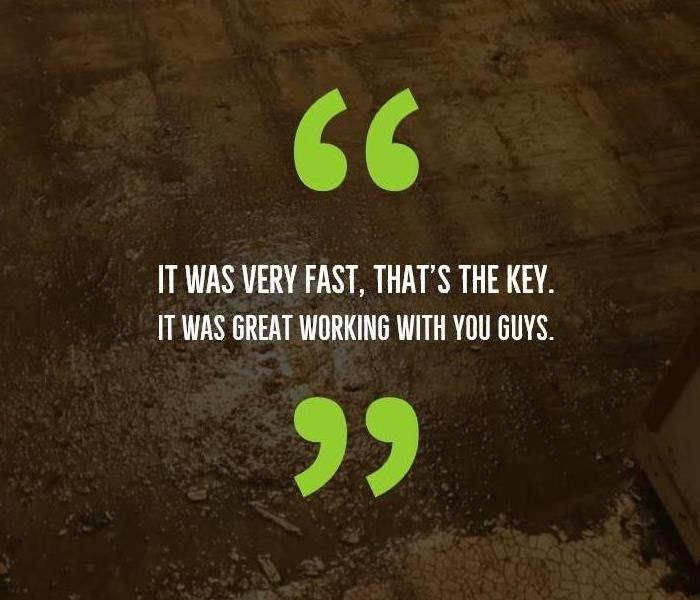 Water Damage Restoration Washington, MO SERVPRO
Water Damage Restoration Washington, MO SERVPRO
Nobody wants to come home and find their house soaked with water. But unfortunately for Derrick Sullivan, that’s exactly the situation he walked into.
Sullivan’s home in Washington, MO was one of many that experienced a water loss this year due to burst pipes. Sullivan came home around 6 p.m. one night, and found his living room, dining room and kitchen soaked.
“I was in a panic,” Sullivan said. “We had a lake in our house. I had my son with me that night. I put him upstairs, I shut off the water and tried to get everything together.”
Sullivan quickly called his insurance company, and SERVPRO of Franklin County was dispatched to the scene. Sullivan was one of many jobs SERVPRO of Franklin County received that day, but it was still able to respond quickly.
SERVPRO of Franklin County extracted the water and dried the structure, as multiple levels were affected. SERVPRO of Franklin County also removed the baseboards and the flooring underlayment. The house took about five days to get completely dried.
“I would have never thought that it would be done that quick,” Sullivan said.
After getting the house dried, SERVPRO of Franklin County began reconstruction. They also handled all the reconstruction except for flooring, including painting and installing new cabinets.
Sullivan was pleased with how quickly SERVPRO of Franklin County worked.
“I was very excited about the process,” he said. “It was very fast, that's the key. It was great working with you guys. I was a complete stranger and I had no problems trusting you guys.”
Sullivan said he would tell others to use SERVPRO if they had a water loss.
“I would definitely recommend you guys,” he said. “You guys were there on time, you worked fast. I couldn't have been happier.”
SERVPRO of Franklin County is located in Union, MO and serves the entire Franklin County, Missouri area. As leaders in the water damage industry, we have advanced training and expertise, not to mention a tremendous amount of hands-on experience.
Have Water or Flood Damage?
Call Us Today – (636) 583-5200
Does your Union, MO home have water damage?
4/10/2018 (Permalink)
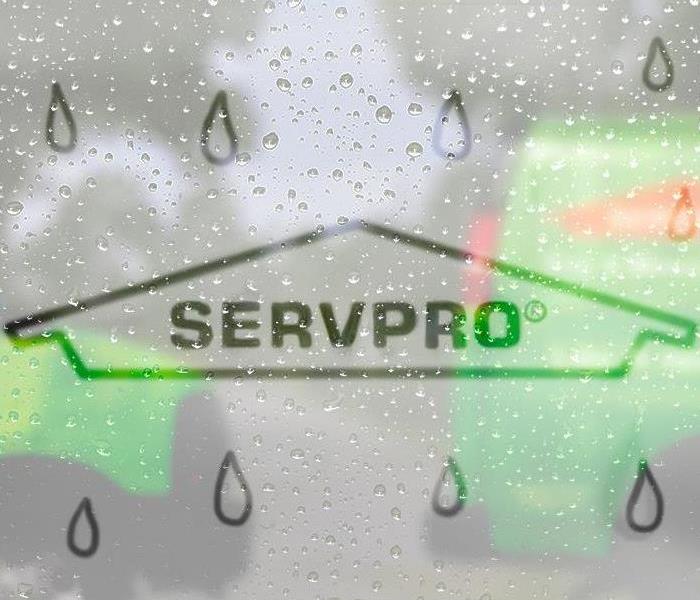 Water Damage, Flood Damage, Sewage Backups - Union, MO - Water Restoration - Commercial and Residential
Water Damage, Flood Damage, Sewage Backups - Union, MO - Water Restoration - Commercial and Residential
Whether a storm passes or the upstairs toilet overflows, your home may suffer water damage that is difficult to repair. There are many things you can do to begin repairing any destruction, but a professional will likely be needed to get rid of any serious health or structural threats.
Floods can carry pathogens and water damage left alone long enough may become a breeding ground for mold.
Sewage backups should be considered very dangerous. The water is grossly unsanitary and may contain bacteria and viruses that could cause serious illness. Special training and equipment is necessary to safely clean this type of contamination.
The main reason why a building is sensitive to water damage is because moisture can be difficult to detect. Standing liquids can encourage microbial growth within 24 hours and can saturate all kinds of textiles and seep through drywall.
Moisture may collect behind the walls, where mold and bacteria may multiply out of sight. Reacting quickly enough, clothes and furniture may be saved. However, there can be electrical and other hazards when entering a building that has recently been flooded.
SERVPRO of Franklin County can quickly identify what items in the home are compromised by water damage.
Normally, anything that is porous may need to be discarded if it has come in contact with contaminated fluids. (For example, black water losses like sewage backups or flood damage.) These porous items, like mattresses, box springs, pillows and particle board, trap more moisture than other materials and foster the growth of microbes.
Our technicians can locate hidden pockets of moisture using specialized equipment. There are some materials that may not feel wet on the outside.
When these moisture pockets are found, our technicians will expose them to air by removing any drywall or other materials in the way. Our technicians will monitor and document the drying process to ensure your property is back to normal.
Read more about the typical restoration process.
Our highly trained technicians are ready to respond immediately to flood or water damage at your Union, MO or Franklin County, MO property. We also offer Commercial Services to our local businesses.
Please follow our tips outlined in the Water Damage Tips—Until Help Arrives Guide to protect yourself and your property.
Do You Have Water or Flood Damage? Give us a call for a free estimate – (636) 583-5200
Fast Response to Flooded Basements in Franklin County, MO
3/16/2018 (Permalink)
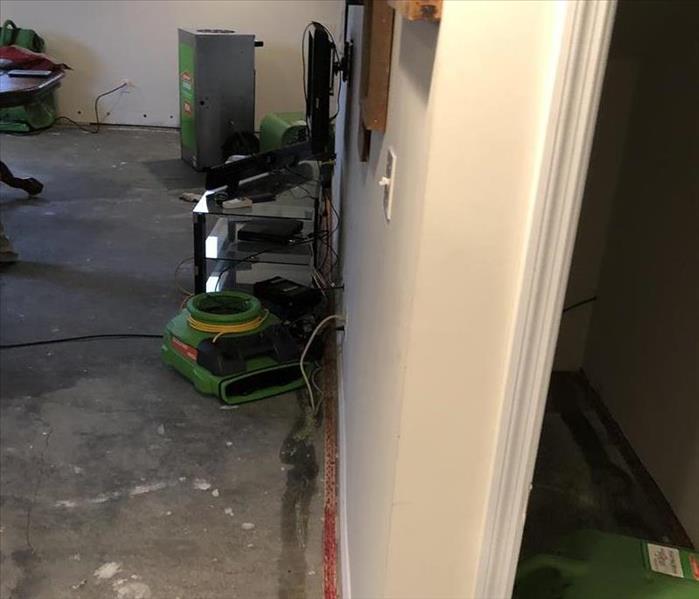 Water Damage in Franklin County, MO Basement
Water Damage in Franklin County, MO Basement
A basement can flood at any time, although flooding most often occurs during heavy rainfall. Basements are inherently prone to flooding because they are the lowest level of a building and are normally built partly or entirely below ground level. There are a number of reasons why your Union, MO basement could flood, including:
- A blocked or failed sewer lateral pipe
- Heavy rain causes surface water to pool around your home
- Storm sewer backup
- Sanitary sewer backup
- Foundation drainage failure
- Water supply-line break or hot-water tank failure
- And many more
Have Questions about Basement Flooding?
Call Today - 636-583-5200
If flood water is not handled quickly and properly, it can jeopardize your health and safety, and cause severe damage to your home’s structure. Remember, the longer you wait, the worse the problem will get.
The bottom line: a flooded basement can jeopardize your health, safety, and your home’s integrity. It’s worth making a call to SERVPRO of Franklin County and let our trained, professional crews handle the situation safely and correctly. We have earned the trust of hundreds of homeowners, business owners, and property professionals.
We are Flooded Basement Specialists:
- We are Available 24/7
- We’re a Preferred Vendor to many National Insurance Companies
- We Bill The Insurance Directly – One Less Thing For You To Worry About
- Our Technicians are Highly-Trained in Water Restoration Techniques
- We use s500 IICRC Restoration Standards
- Advanced Inspection and Extraction Equipment
Have Water or Flood Damage?
Call Us Today – (636) 583-5200
Water Damage In Your Franklin County, MO Home?
3/8/2018 (Permalink)
A water damage restoration service is the kind of professional that no one wants to call, but when they are needed, it is important not to delay. Homeowners know that moisture is often the enemy, capable of penetrating into just about any space, and taking advantage of every little crack and structural problem. No matter how moisture gets into the building, the response should be the same. Bring in a certified firm as soon as possible to clean the home, dry it, and ensure there are no lingering health threats once the moisture is gone.
If water has entered the home through a contaminated source, don’t try to handle it on your own. Floods and sewage backflows contain a cocktail of deadly bacteria, viruses and fungi, and even momentary skin contact can leave a person seriously ill. A certified water damage restoration service not only has the tools to eliminate the moisture, they have the protective equipment to remain free from harm.
Restoration technicians have a lot of technology at their disposal. These include powerful vacuums and pumping systems, high volume air movers, dehumidifiers, heat injectors, moisture meters, and a number of detergents formulated for destroying fungi and other microbial threats. While the technicians work on the building, disposing of compromised materials, and drying the rest, they will also destroy all mold and microbial colonies. This is the only way to ensure a home is safe to live, and a business safe to work in; any other cleaning method is a dangerous gamble.
The Institute of Inspection Cleaning and Restoration Certification (IICRC) sets practical standards for restoration and cleaning. The IICRC S500 Water Damage Guide is a specific set of practical standards that incorporate the field of psychometry, which involves the manipulation of temperature and relative humidity to remove moisture and dry a property quickly and effectively.
We are water damage restoration specialists and are ready to restore your Union home back to pre-water damage condition. We quickly extract the water and then dry your property using state-of-the-art equipment. SERVPRO of Franklin County uses moisture monitoring equipment to effectively measure and document the drying process to ensure your property is dry.
Please refer to our Water Damage Tips—Until Help Arrives Guide and follow these tips to protect yourself and your property.
Protect Your Home From Water Damage
2/1/2018 (Permalink)
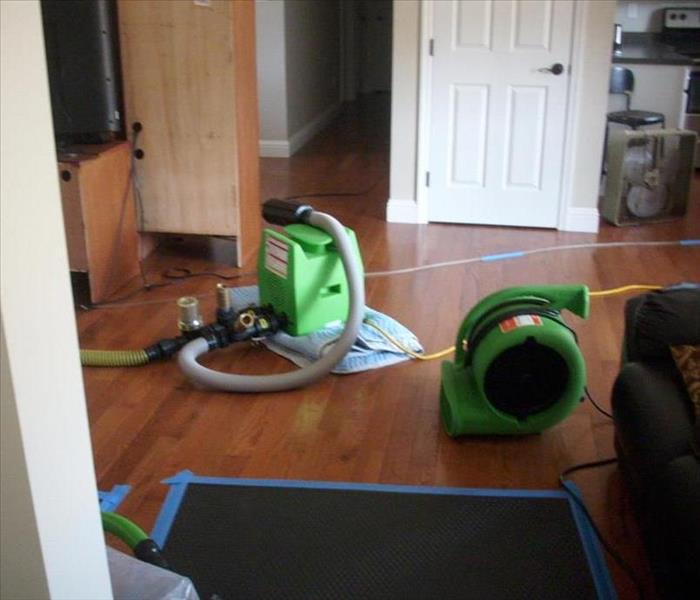 Water Damage Franklin County, MO
Water Damage Franklin County, MO
Water damage is one of the most common and costly disasters affecting residences, accounting for billions of dollars in losses annually. Individuals protect themselves from repairs by having insurance. However, do you have the right type of insurance to protect your property?
Generally speaking, standard homeowners and renters insurance cover water that comes from the top down. For example, burst pipes, wind driven rain and damage from ice dams. Some polices cover sewer and drain back up, but many do not. You can sometimes add this coverage to your insurance plan for an additional fee.
Water intrusion from a river or creek is covered by flood insurance. Flood insurance can be purchased from the federal governments National Flood Insurance Program and from some private insurers. The average flood insurance policy costs $540 a year.
Maintaining a home is one of the best ways to prevent damage.
Inside Your Home
- Inspect hoses and faucets. Check hoses leading to water heaters, dishwashers, washing machines and refrigerator ice makers annually. Replace those with cracks or leaks, and replace them all every five to seven years.
- Inspect showers and tubs. Check the seal and caulking around showers and tubs to make sure they are watertight.
- Shut off the water supply to the washing machine while away on vacation, and never leave the house while the washer or dishwasher is running.
- Know the location of the main water shut off valve in your home. A damaged hose or a burst pipe can send water racing into your home. By knowing where this valve is located and how to shut off the main water supply, you can save yourself time and money.
- Install an emergency pressure release valve in your plumbing system. This will protect against the increased pressure caused by freezing pipes and can help prevent your pipes from bursting.
- Check pipes. Look closely for cracks and leaks and have the pipes repaired immediately.
Outside Your Home
- Caulk and seal windows. Preventive maintenance will guard against water seepage.
- Inspect your roof. Look for missing, damaged, and aging shingles.
- Check your downspouts. Remove debris that may have accumulated in downspouts and rain gutters. Position downspouts so that they direct water away from the house.
- Check sprinklers and irrigation systems. Be sure sprinklers and irrigation systems are not damaging the walls and foundations of the house; turn off and drain outside faucets to protect against frozen pipes.
- Install gutter guards. Gutter guards are the device used to protect the clogging of the roof gutter so that the water from the roof may flow easily and accumulation of water does not take place on the roof but away from the house.
If you do have a water loss, we are water damage restoration specialists and are ready to restore your Franklin County, MO home back to pre-water damage condition. We quickly extract the water and then dry your property using state-of-the-art equipment. SERVPRO of Franklin County uses moisture monitoring equipment to effectively measure and document the drying process to ensure your property is dry.
Have Water or Flood Damage?
Call Us 24/7 – (636) 583-5200
A RIDE ON THE POLAR PLUNGE
1/22/2018 (Permalink)
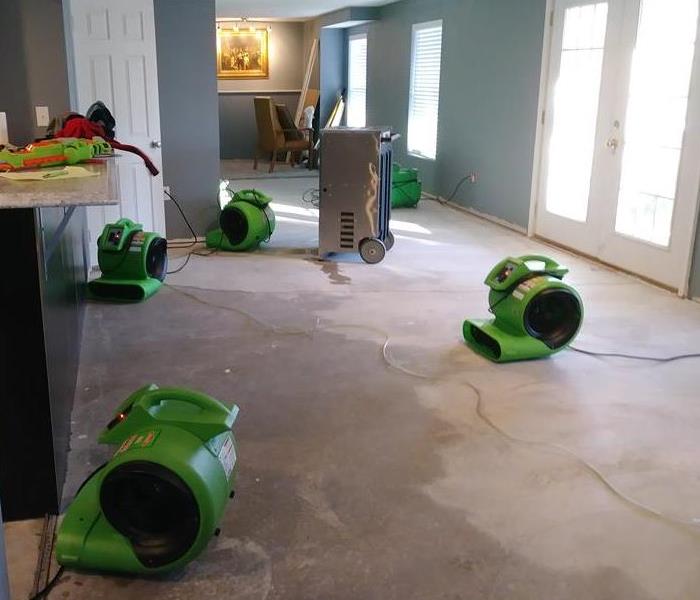 Polar Plunge bring many water losses
Polar Plunge bring many water losses
This article is not about the newest ride at Six Flags or even a recent dive into frigid water. It’s a real-time follow of our work as it relates to the recent downturn in temperatures. News media have referred to it as the “Polar Plunge” and it has gripped most of the country.
The weather had been cold from time to time this winter but it was New Year’s Eve when temperatures dropped to single digits. The low was four degrees that day with a high of 14. New Year’s day was worse with a low of -4 and a high of 10. The temperatures stayed dangerously low until Jan. 7 when the high was 40.
It was so cold on New Year’s Eve that a lot fewer people went out to celebrate. One could easily get a table at favorite restaurants that are usually packed this time of the year. Fox news reported that in St. Louis events such as Winterfest, Six Flags, and activities at Westport and the City of Kirkwood all canceled due to the bitter cold.
Most of us settled in at our homes, staying as warm as possible and waiting out the frigid temperatures. Being the owner of a mitigation company, my mind was on frozen pipes. Most of you don’t dream about frozen pipes when it gets cold, but when you’re in the business, that’s what you do. I knew that we would get calls about frozen pipes, the problem is you just can’t gauge how many calls you will get. How many people will be in need of your services? Will we be able to serve everyone? Do we have enough equipment? Do we have enough staff?
Those questions would soon be tested, because on New Year’s Day at about 1 p.m. we received our first call. The loss notes read, “Pipe burst in bathroom, affected basement below. Carpet ceramic and drywall affected.” I got the crew moving and they were on-site in a little over an hour’s time. The crew was ready. We had all discussed our readiness, we have prepared for this and we knew the upcoming week should be very busy. A normal water loss takes about four hours to complete from start to finish, and this one was no exception. Just as the crew got back to their homes and started to settle in, we received our second call at 5:46 p.m. The loss notes read, “Pipe burst under sink. 2” of water in main level and water ran to the partially finished basement.” I hated to make the call to our on-call crew, but they were willing and ready to go. On this one I told them I’d meet them there, I’d get the paperwork going and figure out what’s needed hoping that would save them some time. I arrived in under an hour and did just that. Met with the customer, walked through the loss. Went over how we are going to handle things, got authorizations signed and diagramed and took pictures. A little later my crew arrived and a few hours later we had gotten everything taken care of. Back at home and in bed by 10:30pm!
Nothing more that night, but the morning of Jan. 2 we received our first job of the day. 2” of water in a commercial restaurant in Union. Commercial jobs are a little different than residential. Typically a homeowner can stay in their home while drying is going on. It tends to be a little uncomfortable at times with the noise and heat, but it’s doable. On commercial jobs, the biggest concern is loss of business. Our job is to get that business back in business as soon as possible. We were there in 10 minutes from dispatch and quickly started extracting water and setting drying equipment. If needed, the restaurant could stay open during the drying process with little distraction. While still working on this one, two more new losses got called in. I peeled a couple people off the current job and got them going on the newest one. The other crew was to finish up and head to the other one. Everything worked well and both customers were taken care of. We finished both jobs around 3:30 and just in time for another job. This one was in Leslie and required a total gut of an apartment. At this point, equipment was getting scarce and the crews were getting tired. Myself and Mike, our marketing rep, headed to the Leslie job to see what all it entailed. We did all of the upfront work and waited on the crew to get there, explaining what should be done and handing them off to the customer. Mike and I still had water checks (monitoring) to do on yesterday’s jobs! When we are this busy, it’s all hands on deck. Even marketing reps get dirty!
We all finished up at around 9:00 p.m. that night and thankfully no new jobs were called in. Get some rest, I’m sure there will be no relief tomorrow! On Jan. 3 we had a couple new jobs called in but plenty of time to get to them. When you’re used to doing four jobs in a day, two seems pretty easy. We pitched in to get the water checks done for all of the jobs. Except there was one big problem. We were out of equipment and so were all of our neighboring franchises. No one to borrow equipment from, so knowing that this even is not over, I put a call into corporate and ordered more. If all went right, it would be here by noon tomorrow. We are so lucky to have the backing of SERVPRO Corporate. Who else could get equipment mobilized that quickly in the middle of a crisis like this?
Jan. 4 we had a residential loss called in. The good news is some of the earlier jobs were dry so we could move equipment to this one. Approximately 9:30 a.m. a church in Pacific called. “I know you guys are busy, but we need help. A main in our attic burst and we literally had 6 inches of water in our entire facility.” I instantly redirected myself and headed to the church. Volunteers had worked all night with multiple shop vacuums to get the standing water up. What a great job they did. Now it’s up to us to complete any demolition needed and set drying equipment. Drying equipment, what drying equipment I said to myself? I hope corporate comes through with the new equipment that I just bought! We immediately got going on the needed demolition, removing drywall and insulation that was falling, removed cove base and set the little bit of equipment we had. Just as we finished Anita in the office called and said, “You have some shiny new equipment here!”
We ran to the office, uncrated everything. We entered it into our tracking system and off to the church it went. On Jan. 5 we received a couple more losses but were able to move equipment from other jobs as they dried. Jan. 6 started a warm up that got us to 40 degrees by Jan. 7. The Polar Plunge was over and we had survived!
The most important takeaway from this is that we are ready and able to handle anything that comes our way. All of our customers were taken care of and are able to get on with their lives. We couldn’t have been able to flawlessly handle the Polar Plunge without our great group of employees and the backing of SERVPRO Corporate.
That was our one event for the winter, I guess we can just slide into spring now.
How A Water Restoration Technician Can Your Restore Home or Business
1/10/2018 (Permalink)
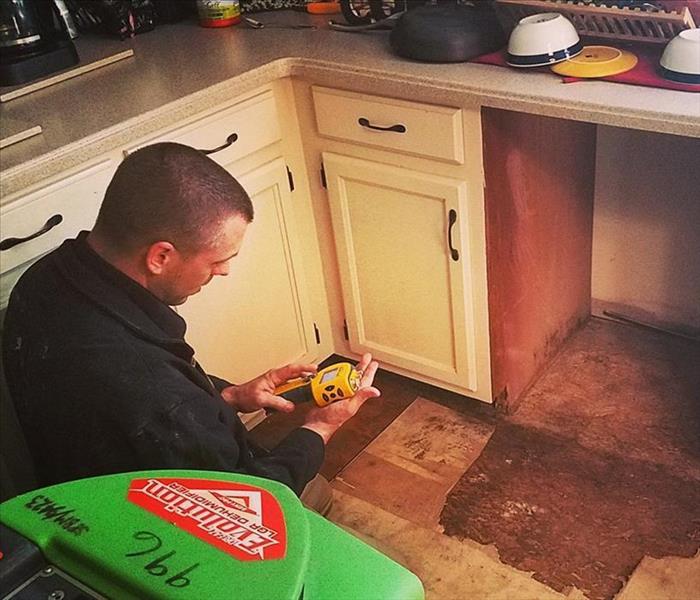 How Water Restoration Technicians Will Restore Your Franklin County, MO Home or Business
How Water Restoration Technicians Will Restore Your Franklin County, MO Home or Business
A water restoration technician has an extremely important job when a home is affected by excess moisture or fluid. Water restoration technicians can quickly reverse the extensive damage that water damage can cause. And when dealing with contaminated fluids, especially when it has pooled in the home, it's best to let the professionals manage the cleanup. Attempting to perform cleanup efforts without expert assistance can lead to injury or illness, both of which can be severe.
Our certified water restoration technicians are call around the clock. As soon as water restoration technicians are on site, they will assess the situation and determine what items need immediate rescuing. We determine the scope of your water damage at this stage. We inspect and test to determine the extent of damage and how far the moisture has traveled to ensure proper and complete restoration.
The home will be dried using a configuration of heavy duty air movers and dehumidifiers. The water removal process begins almost immediately and removes the majority of the water. We use powerful pumps and vacuum units to quickly remove hundreds or thousands of gallons from your property, which helps prevent secondary water damage and mold growth. We use specialized equipment to remove the remaining water that is harder to access. Our Professionals will use room measurements, temperature, and relative humidity to determine the optimal number of air movers and dehumidifiers needed to dry your home or business. We clean all of the restorable items and structures damaged by the water. We are adept at cleaning contents using a number of techniques. Our professionals are trained to provide sanitizing treatments and to remove odors and deodorize your property.
All of these steps will ensure the home is safe to return to, and with concerted drying efforts, the building will be back to preloss condition once work has been completed. Restoration may involve minor repairs, such as replacing drywall and installing new carpet, or may entail major repairs, such as the reconstruction of various areas or rooms in a home or business.
Of course, every water damage event is a little different and requires a unique solution and a trained technician knows the best solution.
Give SERVPRO of Franklin County a call, we are "Here to Help" restore your Franklin County, MO home or business to preloss condition. 636-583-5200
Winter Tips to Prevent Frozen Pipes Bursting
1/1/2018 (Permalink)
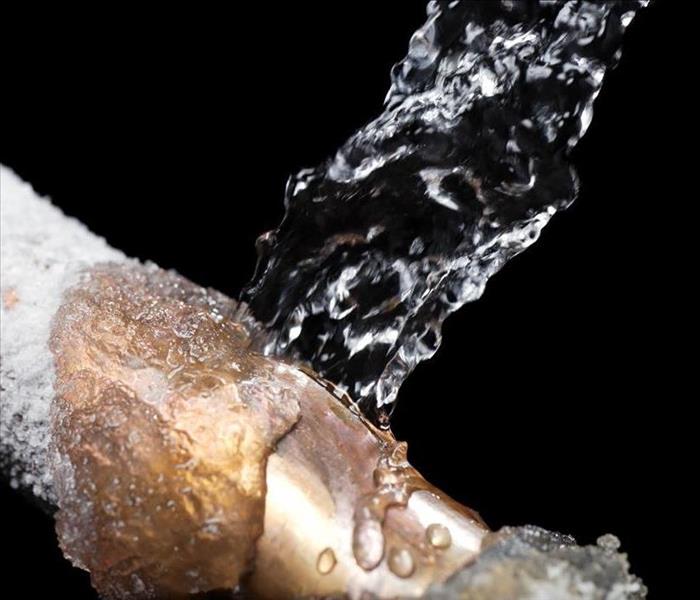 Frozen pipes? Call SERVPRO of Franklin County
Frozen pipes? Call SERVPRO of Franklin County
The temperatures have been dropping and the winter weather is here. When the temperatures go below freezing level, your property is at risk for frozen pipes, which can create a major disaster in your home or business.
Be Prepared
- Know where your water shut off is located, in case of a frozen water pipe burst.
- Insulate exposed pipes in your home or business, especially if they are in unheated rooms.
- Open bathroom and kitchen cabinet doors during cold spells to allow warmer air to circulate around the plumbing.
- During extremely cold weather, keep a slow trickle of water flowing through faucets. Running water is less likely to freeze.
- Consider shutting off outdoor faucets and open the outdoor faucet to help ensure it completely drains and the inner valve is shut off.
- Keep your heat set to the same temperature both day and night.
- If you plan on being away from your property for an extended period of time, leave the heat on and set the thermostat to at least 55°F.
Discovered Frozen Pipe
- First sign of freezing is reduced water flow from a faucet.
- Keep the faucet open when treating frozen pipes.
- Apply heat to the frozen sections using a heating pad, hair drier, or another safe heat source. Do not use an open flame device.
- Check additional pipes and faucets for freezing.
When a Pipe Bursts
- Shut off the water at the main valve.
- Call your local restoration professionals, SERVPRO® of Franklin County.
A burst pipe can cause considerable damage to your property if not addressed quickly. If winter weather causes water damage to your home or business, call SERVPRO® of Franklin County. We are available 24/7/365 in Franklin County, MO and ready to restore to preloss condition.
The Science of Drying
12/27/2017 (Permalink)
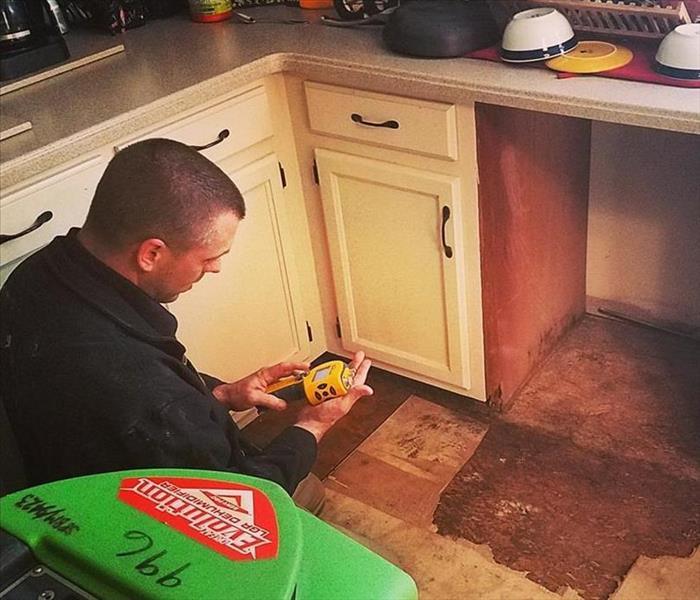 Franklin County, MO Water Damage Restoration
Franklin County, MO Water Damage Restoration
Did you know there is actually a science behind the process of drying?
The knowledge of psychrometrics is essential to restoring a water damaged structure to its preloss condition. While your initial reaction may be to grab a few towels to mop up the mess and place a fan or two around the damaged area, SERVPRO of Franklin County is trained in the science of drying and follow strict industry-approved standards to help lower the chances of any secondary damages.
If your business suffers a water damage, SERVPRO of Franklin County will:
- Inspect the building to detect every component that is wet, to help prevent secondary damage from happening.
- Measure how much moisture is in wet materials and monitor whether the materials are drying properly.
- Speed up Mother Nature by using professional drying equipment.
What exactly does “speed up Mother Nature” mean? A wet building can often dry naturally because the environment always seeks equilibrium. When materials are wet, moisture will naturally move to drier air at the surface of the material–but only if the air is, indeed, drier. The only problem is, nature often takes too long and secondary damages may occur while the building is drying out. For this reason, SERVPRO of Franklin County has been trained to use top-of-theline equipment to help Mother Nature along, including equipment to help dry hardwood floors, tough-to-reach spaces inside walls, and much more.
DRYBOOK™ DOCUMENTATION
SERVPRO of Franklin County uses the latest technology to help ensure your property is dried quickly and efficiently. DryBook™ is a proprietary tool that:
- Manages industry drying requirements. n Provides real-time documentation on the drying process.
- Validates that services are executed to standard.
- Reports to all stakeholders involved.
- Allows real-time updates through DryBook™ Mobile integration. This improves results and restores your property at a faster rate, getting you back in your home or business sooner.
SERVPRO® also uses state-of-the-art
monitoring equipment and a proven scientific process to help speed the drying of your home or business.
The bottom line? SERVPRO of Franklin County has the training and equipment to help make it “Like it never even happened.”
Have Questions? Call Us Today – (636) 583-5200
Water In Your Union, MO Home's Basement?
11/9/2017 (Permalink)
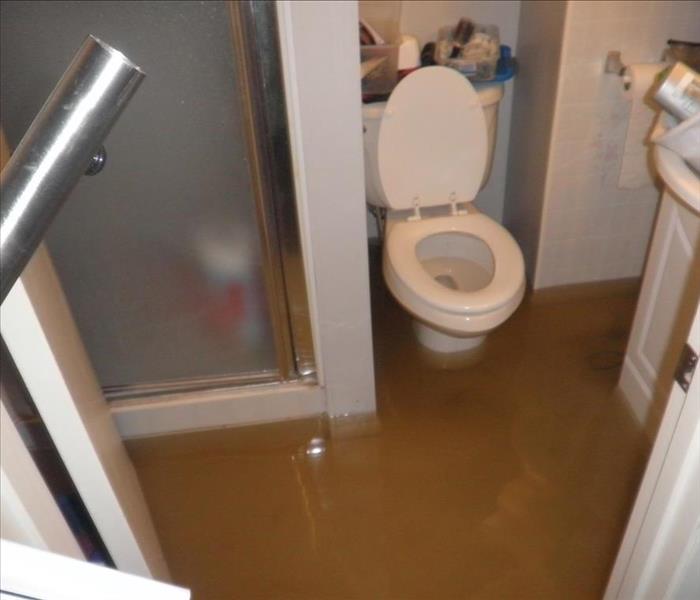 Water Damage in basement Franklin County, MO
Water Damage in basement Franklin County, MO
What To Do If You Find Water In The Basement
One of the worst nightmares for any Union, MO homeowner is finding water in the basement, and in most cases, the only way to deal with such a situation is to bring in a professional. Excess water, especially when it is contaminated, has the potential to cause a great deal of damage, and if the problem is not dealt with properly, the situation can quickly get out of hand. This is especially true when water is pooling in the home and coming in contact with organic materials like drywall or fabric.
Water in the basement can be caused by a lot of factors. The room may sit under the water table, which will slowly push water into the home. A disaster like a flood can quickly fill the room with fluid, as well as a burst pipe or other plumbing mishap. No matter what causes the water to build up in the home, it will take a certified team to remove it and restore the basement effectively.
There are a couple steps, though, that a homeowner can take to minimize damage and make the home safe to navigate through. If a pipe burst or is leaking, then cutting off the supply line into the home can halt the problem. Also, switching off the home’s power may be necessary, as an electrical discharge can make walking through water exceedingly dangerous and cause a fire.
Safety is the primary concern when contending with excess moisture, and a certified crew will be able to get the home restored in while avoiding any dangerous situations.
Learn more about SERVPRO of Franklin County's water damage restoration specialists here, or contact us for immediate help 24/7.
Flood Damage Restoration Recommendations for Uninsured Losses
10/26/2017 (Permalink)
It is never too soon to start to consider what steps need to be taken especially when you don’t have adequate insurance for water damage.
The following recommendations assume a flooding situation with horizontally traveling Category 3 (unsanitary) water containing silt and other contaminants have infiltrated into homes and businesses to a depth of a few inches or feet and remained for multiple days. When structures are completely submerged or remain substantially flooded for several weeks, more elaborate procedures may be required.
- Foremost, consider safety:
- Evacuatepotentially respiratory or immune-compromised, or non-essential persons (e.g., children, the elderly, pregnant women; those recovering from extended illness or surgery, or those on regimens of prescription drugs or chemotherapy). When medical questions arise, consult with public health professionals.
- Before entering a heavily flood-damaged structure, open windows and doors and air it out thoroughly. Ventilation must be maintained during and following the restoration effort. This reduces but does not eliminate, the potential for inhaling pathogenic (disease causing) microorganisms. Also, allow as much sunlight into the structure as practical, since fresh air and ultraviolet light help inhibit microorganism growth.
- Consider the structural integrity of a damaged building before entering. Wear protective clothing, boots with steel or fiberglass shanks, and a hard hat. Have the building checked by a qualified builder or structural engineer when in doubt.
- Ensure that electrical shock hazards have been eliminated. Consult a licensed and qualified electrician when questions arise.
- Protect yourself from pathogenic microorganisms.Wear protective gloves before handling contaminated materials. Splash goggles should be worn to protect and prevent microorganism entry through the eyes. A vapor respirator (paint respirator) should be worn to prevent inhalation of most microorganisms or spores.
- Remove quantities of debris(silt, vegetation, floating objects) with shovels, rakes or any safe means practical. Clean and sanitize all tools when complete.
- Remove and dispose of drywall (Sheetrock®), paneling or other wall materialsup to a point 15-24″ inches above the visible water line. If practical, stay within four feet of the floor to salvage as much wall material as practical since drywall is usually installed horizontally in 4’x8’ or 4’x12’ panels.
- Remove and dispose of insulation materialsexposed during wall removal. Look for evidence of moisture wicking up insulation materials. Leave only materials that are durable, dry and minimally porous, and which can be cleaned and decontaminated with relative ease.
- Remove and dispose of carpet, cushion, pad, felt and sheet vinyl, or laminate flooring materials. Porous materials may absorb considerable quantities of water and contaminant, and non-porous materials may trap moisture to prolong drying. The inevitable result will be rapid microbial growth, along with associated odor and potential health hazards. Solid wood flooring should be removed since contaminants and moisture collect underneath in hollow areas between the wood and subfloor. The following procedures may require the assistance of a professional water-damage restorer, who has specialized biocides, and application and extraction equipment, if available.
- While maintaining ventilation and respiratory protection, liberally spray durable salvageable materials (e.g., studs, decking, joists) with appropriate biocides.Household chlorine bleach (e.g., Clorox®) mixed 1 part bleach to 11 parts water (½%) may be used on durable, colorfast surfaces. Never mix chlorine bleach with ammonia or strong acids!
- Following application of properly diluted biocides, brush agitate all areasto remove visible soils and to encourage biocide penetration into cracks and crevices. Professional restorers use pressurized spraying to accomplish this step.
- When fresh water is restored within the structure, flush contaminants from salvageable surfaces with a water hose or pressure washer.Work from top to bottom and from walls to flooring.
- Wet vacuum or mop up excess rinse water from flooring materials immediately.Thoroughly flush all contamination from wall frames. Pressure washing, if available, is specifically recommended to flush contaminants from hard-to-access areas, following contaminated water removal with industrial wet vacuuming equipment.
- Repeat steps 6-9 as necessary, until all surfaces are clean and contamination is physically removed.
- Lightly spray a final application of an approved non-chlorinated disinfectant to all salvageable surfaces.
- Dry structural components with plenty of air circulation, while maintaining constant ventilation (weather conditions permitting). If practical, take advantage of low outside humidity (check local weather reports). Use oscillating or box fans, moving them around the structure every few hours. Avoid temperature extremes that might slow drying or promote microorganism growth (68-86oF/20-30oC is ideal for growth). Rent high-volume professional drying equipment (airmovers and dehumidifiers) if available, especially in areas where ventilation is not possible (sealed buildings, security issues). All electrical components that were below the water line should be checked for operational safety by a qualified contractor.
- Leave cleaned structural surfaces exposed for several days or even weeks, or until you are sure that they have returned to within four percentage points of normal moisture content (generally the normal moisture content of structural wood is around 10%). Otherwise, subsequent structural damage and health hazards can result after wall and flooring materials have been replaced or painted.
- Durable, colorfast contents (e.g., washable clothing, dishes, glassware, furniture) might be salvageable if washed in warm detergent solutions. Common sense and caution should be used in determining contents salvageability.
Where financial resources permit, comprehensive restoration should be accomplished by trained, Institute of Inspection, Cleaning and Restoration Certification (IICRC) Water Damage Restoration Technicians. To prevent mold growth on structural materials, property owners should consider hiring a professional restorer to evaluate moisture levels in structural materials before reconstruction.
From initial and ongoing training at SERVPRO’s Corporate Training Facility to regular IICRC industry certifications, rest assured our staff is equipped with the knowledge to restore your property. Our training program includes the following:
- IICRC Training
- Employee Certification Training
- Initial Franchise Training
- e-Learnings
Please call us for more information regarding floor or water damage cleanup.
Handle Your Franklin County, MO Commercial Water Damage with SERVPRO
8/24/2017 (Permalink)
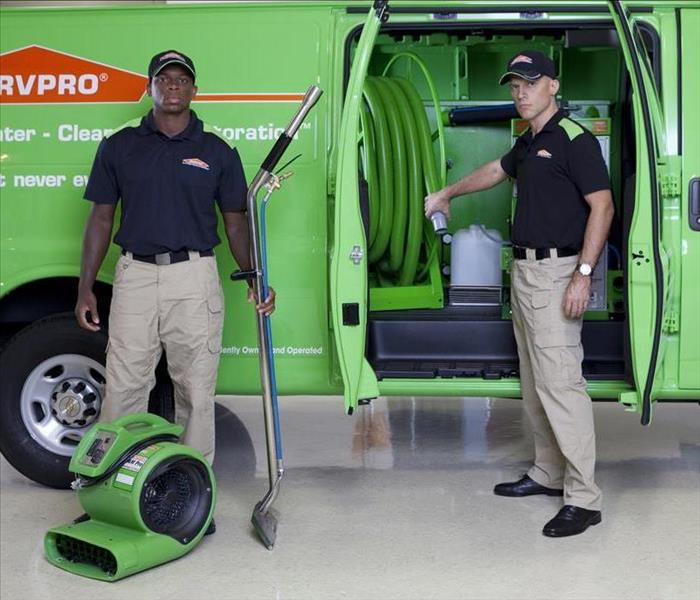 Water Damage in Franklin County, MO
Water Damage in Franklin County, MO
If you have recently become a victim of commercial water damage in Franklin County, MO, you may be wondering what you can do to mitigate your damages. There is a critical period in which certain actions must be taken to preserve as much of your property as possible and to decrease any health risks when water damage has occurred in a commercial space.
Preparing a Space for Water Damage Restoration
Before you enter your commercial space or any flooded building, you will need to make sure the electrical power to the structure is shut off. You should also be aware that during a flooding event, small animals or reptiles tend to seek shelter inside of buildings. Be prepared to deal with the discovery of wild animals in your space.
Protect yourself from entering any flooded building by wearing an organic vapor respirator. You can purchase these at any local paint and building supply stores. You also want to have rubber gloves, protective clothing, and eye protection. The first thing you should do is ventilate the affected areas by opening the windows and placing fans where possible.
Unfortunately, there likely will be items that you need to throw away. Any items that are porous and have absorbed contaminated floodwater cannot be restored. If your commercial space has drywall, mattresses, pillows, box springs, particle board, carpets or carpet pads, these will need to be discarded if they have become saturated. However, there is good news: If you have clothing or household fabrics that can be machine-washed, you may be able to salvage them. Use your washing machine to clean these items with a 10-minute soak at the minimum in hot water with detergent. The soap and normal wash should remove most of the contamination and any staining that is present.
Be aware that your commercial space will need a thorough professional inspection, cleaning and possibly restructuring. Water damaged walls and installations must be removed and repaired, and pockets of saturation should be exposed for drying and sanitizing. Always remember that mold growth could take a few days to appear as it thrives in a moist environment with organic-type materials such as paper or particle board and in temperatures that range between 60 and 86 degrees Fahrenheit. Keep good airflow throughout the interior environment, and maintain moderate temperatures to decrease the risk of any mold growth. It is also important that you let your space dry out before any rebuilding occurs.
Services You Can Count On in Franklin County, MO
You can depend on SERVPRO to provide reasonable prices for commercial water damage and other services in the Franklin County, MO area. Our restoration services include cleanup after water damage, fire damage, and storm damage. We also assist with mold remediation, and we're qualified to provide cleaning and building services. Our trained and certified IICRC technicians are available 24 hours a day, seven days a week to begin your restoration. Whether you require cleanup after Franklin County, MO commercial water damage or simply need a carpet cleaning, call us at 636-583-5200.
Water Damage In Your Franklin County, MO Home?
7/25/2017 (Permalink)
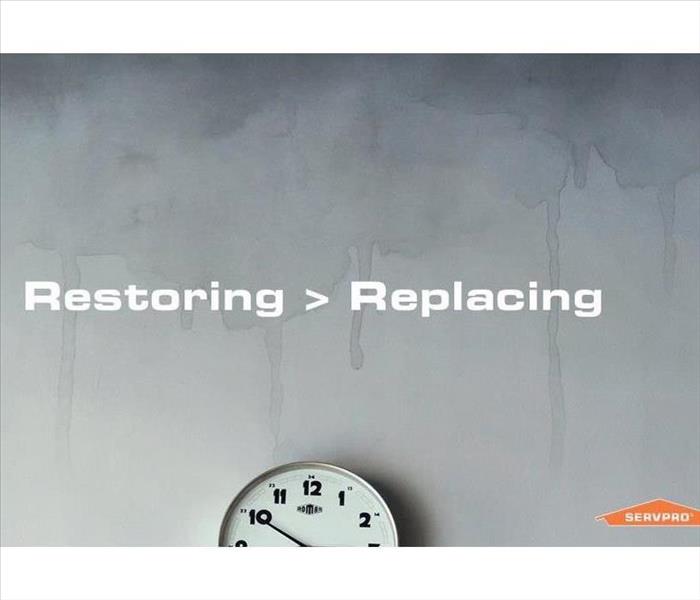 Water Damage Franklin County, MO
Water Damage Franklin County, MO
A water damage restoration service is the kind of professional that no one wants to call, but when they are needed, it is important not to delay. Homeowners know that moisture is often the enemy, capable of penetrating into just about any space, and taking advantage of every little crack and structural problem. No matter how moisture gets into the building, the response should be the same. Bring in a certified firm as soon as possible to clean the home, dry it, and ensure there are no lingering health threats once the moisture is gone.
If water has entered the home through a contaminated source, don’t try to handle it on your own. Floods and sewage backflows contain a cocktail of deadly bacteria, viruses and fungi, and even momentary skin contact can leave a person seriously ill. A certified water damage restoration service not only has the tools to eliminate the moisture, they have the protective equipment to remain free from harm.
Restoration technicians have a lot of technology at their disposal. These include powerful vacuums and pumping systems, high volume air movers, dehumidifiers, heat injectors, moisture meters, and a number of detergents formulated for destroying fungi and other microbial threats. While the technicians work on the building, disposing of compromised materials, and drying the rest, they will also destroy all mold and microbial colonies. This is the only way to ensure a home is safe to live, and a business safe to work in; any other cleaning method is a dangerous gamble.
The Institute of Inspection Cleaning and Restoration Certification (IICRC) sets practical standards for restoration and cleaning. The IICRC S500 Water Damage Guide is a specific set of practical standards that incorporate the field of psychometry, which involves the manipulation of temperature and relative humidity to remove moisture and dry a property quickly and effectively.
We are water damage restoration specialists and are ready to restore your Union home back to pre-water damage condition. We quickly extract the water and then dry your property using state-of-the-art equipment. SERVPRO of Franklin County uses moisture monitoring equipment to effectively measure and document the drying process to ensure your property is dry.
Please refer to our Water Damage Tips—Until Help Arrives Guide and follow these tips to protect yourself and your property.
SERVPRO – Faster to Any-Sized Disaster.
6/29/2017 (Permalink)
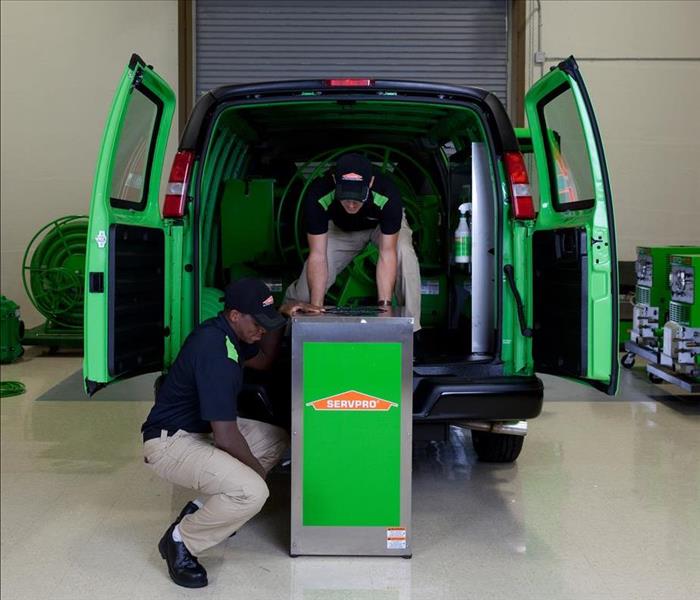 SERVPRO – Faster to Any-Sized Disaster
SERVPRO – Faster to Any-Sized Disaster
Kim and Dan Akers had dealt with flooding before, but they had never seen anything like this. The Akers family’s St. Clair property had flooded before in 2008 and again in 2015, but both of those times they were able to deal with the damage themselves.
After the Meramec River flooded April 29, the Akers family found their residence with close to 6 feet of water. This time, they had to call in outside help to get their home back in order.
“It was pretty devastating, I wasn’t real sure if it was all going to come back together or not,” Kim Akers said about her flooded home. “It was a record flood. Before the most we had was about two, maybe three feet in the living room. This time it was way above my head.”
The Akers family called SERVPRO Franklin County for help. SERVPRO gutted the house, cleaned and sanitized the structure, removed mold, dried out the house and cleaned the air ducts.
Akers said that the mold could have been a result of not properly cleaning after the previous floods.
“My husband and I both have had issues with our sinuses running while we’re in the house, and after seeing what we saw, there was probably mold in the house that we didn’t know was there,” she said.
Though the Akers aren’t back in their house yet, they believe that their decision to use SERVPRO will get them home faster.
“I’d definitely recommend SERVPRO,” Kim said. “You guys did a good job and took a lot of the workload off of us. In the flood of 2008 it took 13 months for us to get back in the house because we did everything ourselves. It’s going to take a little while to get back in this time, but I don’t think it’s going to take near as long.”
SERVPRO – Faster to Any-Sized Disaster.
Handle Your Franklin County, MO Commercial Water Damage with SERVPRO
5/5/2017 (Permalink)
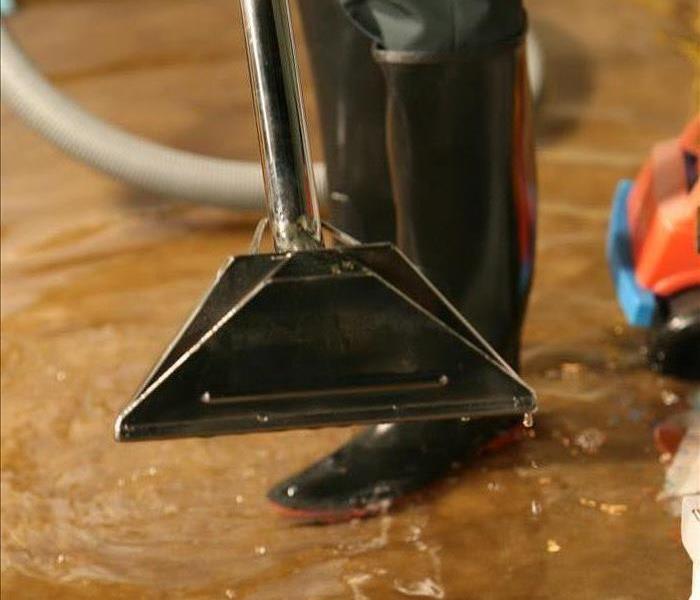 Franklin County, MO Water Damage
Franklin County, MO Water Damage
If you have recently become a victim of commercial water damage in Franklin County, MO, you may be wondering what you can do to mitigate your damages. There is a critical period in which certain actions must be taken to preserve as much of your property as possible and to decrease any health risks when water damage has occurred in a commercial space.
Preparing a Space for Water Damage Restoration
Before you enter your commercial space or any flooded building, you will need to make sure the electrical power to the structure is shut off. You should also be aware that during a flooding event, small animals or reptiles tend to seek shelter inside of buildings. Be prepared to deal with the discovery of wild animals in your space.
Protect yourself from entering any flooded building by wearing an organic vapor respirator. You can purchase these at any local paint and building supply stores. You also want to have rubber gloves, protective clothing, and eye protection. The first thing you should do is ventilate the affected areas by opening the windows and placing fans where possible.
Unfortunately, there likely will be items that you need to throw away. Any items that are porous and have absorbed contaminated floodwater cannot be restored. If your commercial space has drywall, mattresses, pillows, box springs, particle board, carpets or carpet pads, these will need to be discarded if they have become saturated. However, there is good news: If you have clothing or household fabrics that can be machine-washed, you may be able to salvage them. Use your washing machine to clean these items with a 10-minute soak at the minimum in hot water with detergent. The soap and normal wash should remove most of the contamination and any staining that is present.
Be aware that your commercial space will need a thorough professional inspection, cleaning and possibly restructuring. Water damaged walls and installations must be removed and repaired, and pockets of saturation should be exposed for drying and sanitizing. Always remember that mold growth could take a few days to appear as it thrives in a moist environment with organic-type materials such as paper or particle board and in temperatures that range between 60 and 86 degrees Fahrenheit. Keep good airflow throughout the interior environment, and maintain moderate temperatures to decrease the risk of any mold growth. It is also important that you let your space dry out before any rebuilding occurs.
Services You Can Count On in Franklin County, MO
You can depend on SERVPRO to provide reasonable prices for commercial water damage and other services in the Franklin County, MO area. Our restoration services include cleanup after water damage, fire damage, and storm damage. We also assist with mold remediation, and we're qualified to provide cleaning and building services. Our trained and certified IICRC technicians are available 24 hours a day, seven days a week to begin your restoration. Whether you require cleanup after Franklin County, MO commercial water damage or simply need a carpet cleaning, call us at 636-583-5200.
What To Do If You Find Water In The Basement?
5/5/2017 (Permalink)
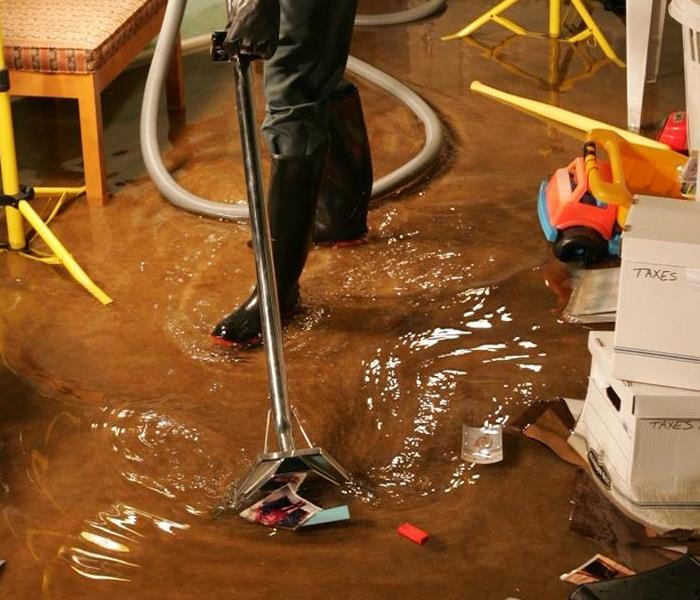 Water Damage Restoration Union, MO
Water Damage Restoration Union, MO
One of the worst nightmares for any homeowner is finding water in the basement, and in most cases, the only way to deal with such a situation is to bring in a professional. Excess water, especially when it is contaminated, has the potential to cause a great deal of damage, and if the problem is not dealt with properly, the situation can quickly get out of hand. This is especially true when water is pooling in the home and coming in contact with organic materials like drywall or fabric.
Water in the basement can be caused by a lot of factors. The room may sit under the water table, which will slowly push water into the home. A disaster like a flood can quickly fill the room with fluid, as well as a burst pipe or other plumbing mishap. No matter what causes the water to build up in the home, it will take a certified team to remove it and restore the basement effectively.
There are a couple steps, though, that a homeowner can take to minimize damage and make the home safe to navigate through. If a pipe burst or is leaking, then cutting off the supply line into the home can halt the problem. Also, switching off the home’s power may be necessary, as an electrical discharge can make walking through water exceedingly dangerous and cause a fire.
Safety is the primary concern when contending with excess moisture, and a certified crew will be able to get the home restored in while avoiding any dangerous situations.
SERVPRO of Franklin County is water damage restoration specialists and are ready to restore your home or business back to pre-water damage condition. We quickly extract the water and then dry your property using state-of-the-art equipment. SERVPRO of Franklin County uses moisture monitoring equipment to effectively measure and document the drying process to ensure your property is dry.
Please refer to our Water Damage Tips—Until Help Arrives Guide and follow these tips to protect yourself and your property.
Need Water Damage or Flood Cleanup Services?
Call Us Today – (636) 583-5200
What To Do When Your Franklin County, MO Home Suffers From Water Damage
2/20/2017 (Permalink)
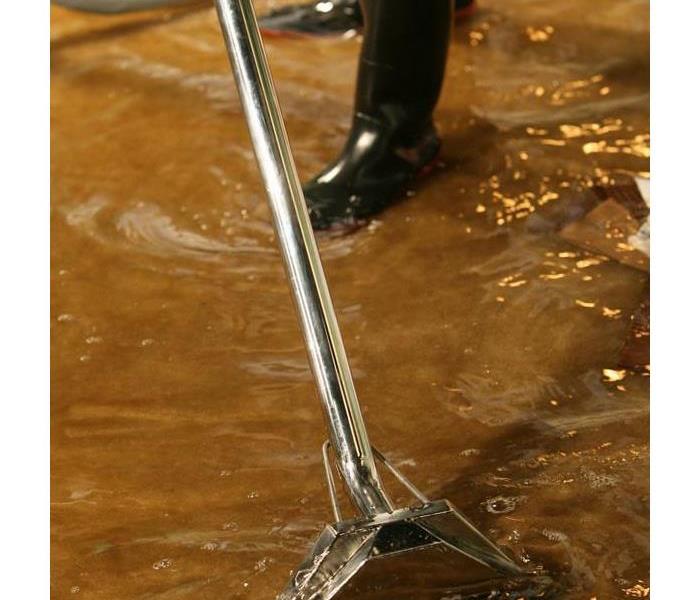 Franklin County, MO Water Damage
Franklin County, MO Water Damage
When a major storm passes close to the house, the home may suffer water damage that is difficult to repair. There are many things a family can do to begin repairing any destruction, but a certified professional will likely be needed to get rid of any serious health or structural threats. Contaminated storm surges or floods can carry pathogens and become a breeding ground for mold
The main reason why a home is sensitive to water damage is because moisture is difficult to detect once the floods recede. Standing liquids can encourage microbial growth within 24 hours and can saturate all kinds of textiles and seep through drywall. Moisture may collect behind the walls, where mold and bacteria may multiply out of sight. If a family reacts quickly enough, clothes and furniture may be saved. However, people must be careful when entering a building that has recently been flooded. Exposure to wildlife and contaminated liquids can result in serious injury.
Before entering a home affected by water damage, make sure the electrical power is shut off. Snakes, reptiles or rodents may be hiding under debris and could lash out and bite suddenly. To protect against wildlife and airborne contaminants, wear protective clothing from head to toe, including a vapor respirator, rubber gloves and eye protection. Also, wear thick boots that can withstand puncturing and animal bites.
SERVPRO of Franklin County can quickly identify what items in the home are compromised by water damage. Normally, anything that is porous may need to be discarded if it has come in contact with contaminated fluids. These items, like mattresses, box springs, pillows and particle board, trap more moisture than other materials and foster the growth of microbes. We will be able to track down any pockets of excess moisture and remove them. Technicians can locate these pockets of moisture using equipment that measures the moisture in hidden pockets and behind tile and other materials that may not feel wet on the outside. When these moisture pockets are found, the technicians will expose them to air by removing any drywall or other materials in the way.
Our highly trained technicians are ready to respond immediately to flood or water damage at your Union property. We have the experience, expertise, and training to restore your home or business quickly and properly. We use advanced inspection and extraction equipment to find the water and remove it as quickly as possible. Our technicians will monitor and document the drying process to ensure your property is back to normal.
Please follow our tips outlined in the Water Damage Tips—Until Help Arrives Guide to protect yourself and your property.
Do You Have Water or Flood Damage?
Call Us Today – (636) 583-5200
What To Do When A Home Suffers From Flooding
1/19/2017 (Permalink)
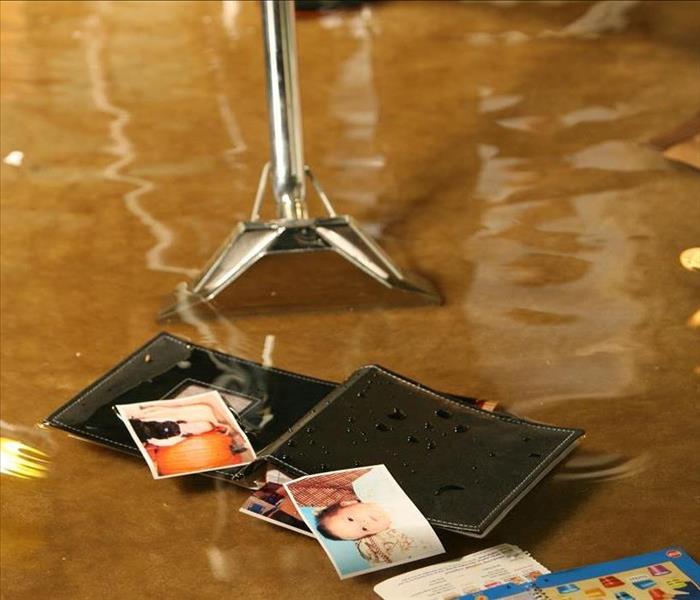 What to do during a flood
What to do during a flood
When a major storm passes close to the house, the home may suffer water damage that is difficult to repair. There are many things a family can do to begin repairing any destruction, but a certified professional will likely be needed to get rid of any serious health or structural threats. Contaminated storm surges or floods can carry pathogens and become a breeding ground for mold. If allowed to fester, these mold spores can spread throughout the building and become even more difficult to remove. In many cases, governmental agencies could condemn the structure if the microbial threat is too great.
The main reason why a home is sensitive to water damage is because moisture is difficult to detect once the floods recede. Standing liquids can encourage microbial growth within 24 hours and can saturate all kinds of textiles and seep through drywall. Moisture may collect behind the walls, where mold and bacteria may multiply out of sight. If a family reacts quickly enough, clothes and furniture may be saved. However, people must be careful when entering a building that has recently been flooded. Exposure to wildlife and contaminated liquids can result in serious injury.
Before entering a home affected by water damage, make sure the electrical power is shut off. Exposed wires or plugged in devices can electrocute people, resulting in major injury or even death. Also, it’s best to move slowly through the building when re-entering it for the first time. Snakes, reptiles or rodents may be hiding under debris and could lash out and bite suddenly. To protect against wildlife and airborne contaminants, wear protective clothing from head to toe, including a vapor respirator, rubber gloves and eye protection. Also, wear thick boots that can withstand puncturing and animal bites.
Professional restoration services can quickly identify what items in the home are compromised by water damage. Normally, anything that is porous may need to be discarded if it has come in contact with contaminated fluids. These items, like mattresses, box springs, pillows and particle board, trap more moisture than other materials and foster the growth of microbes. A family can prepare for professional cleaning by getting rid of these items before the technicians arrive, but be sure to properly record and itemize the items for insurance purposes prior to disposing.
Once professionals arrive at the building, they will be able to track down any pockets of excess moisture and remove them. Certified technicians can locate these pockets of moisture using equipment that measures the moisture in hidden pockets and behind tile and other materials that may not feel wet on the outside. When these moisture pockets are found, the technicians will expose them to air by removing any drywall or other materials in the way. Once the location of the moisture has been determined, the professionals will begin the clean-up process that may include pressure washing the area with powerful detergents. These technicians are also able to speed up the drying process to prevent the growth of any molds or other harmful bacteria. If the professional locate mold or bacteria colonies, they will know how to identify and remove the threat using chemical or mechanical methods.
It’s important for a family to hire professionals that are certified through a reputable organization. Technicians trained in this area know how to find compromised areas and do what it takes to restore them.
Our highly trained technicians are ready to respond immediately to flood or water damage at your property. We have the experience, expertise, and training to restore your home or business quickly and properly. We use advanced inspection and extraction equipment to find the water and remove it as quickly as possible. Our technicians will monitor and document the drying process to ensure your property is back to normal.
What To Do If You Find Water In The Basement
12/28/2016 (Permalink)
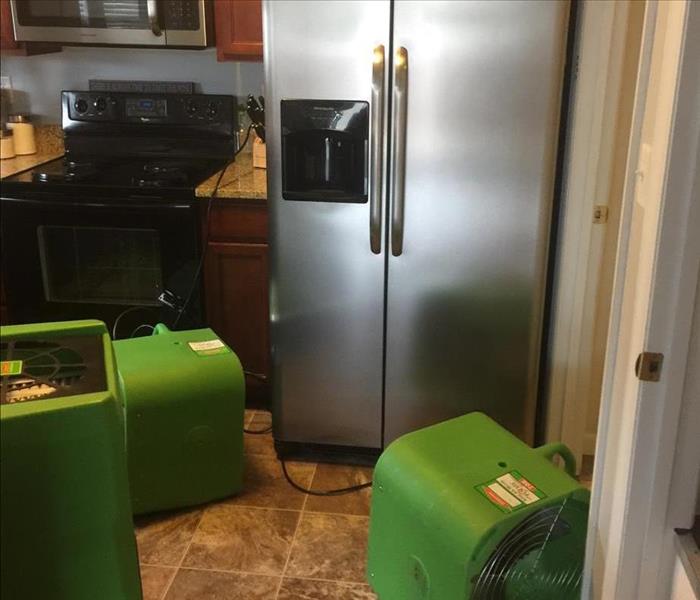 Water Restoration Union MO
Water Restoration Union MO
One of the worst nightmares for any homeowner is finding water in the basement, and in most cases, the only way to deal with such a situation is to bring in a professional. Excess water, especially when it is contaminated, has the potential to cause a great deal of damage, and if the problem is not dealt with properly, the situation can quickly get out of hand. This is especially true when water is pooling in the home and coming in contact with organic materials like drywall or fabric.
Water in the basement can be caused by a lot of factors. The room may sit under the water table, which will slowly push water into the home. A disaster like a flood can quickly fill the room with fluid, as well as a burst pipe or other plumbing mishap. No matter what causes the water to build up in the home, it will take a certified team to remove it and restore the basement effectively.
There are a couple steps, though, that a homeowner can take to minimize damage and make the home safe to navigate through. If a pipe burst or is leaking, then cutting off the supply line into the home can halt the problem. Also, switching off the home’s power may be necessary, as an electrical discharge can make walking through water exceedingly dangerous and cause a fire.
Safety is the primary concern when contending with excess moisture, and a certified crew will be able to get the home restored in while avoiding any dangerous situations.
Water Damage Repair and Restoration
SERVPRO of Franklin County is water damage restoration specialists and are ready to restore your Union home back to pre-water damage condition. We quickly extract the water and then dry your property using state-of-the-art equipment. SERVPRO of Franklin County uses moisture monitoring equipment to effectively measure and document the drying process to ensure your property is dry.
Please refer to our Water Damage Tips—Until Help Arrives Guide and follow these tips to protect yourself and your property.
Need Water Damage or Flood Cleanup Services?
Call Us Today – (636) 583-5200
How To Protect Your Home From Water Damage
12/9/2016 (Permalink)
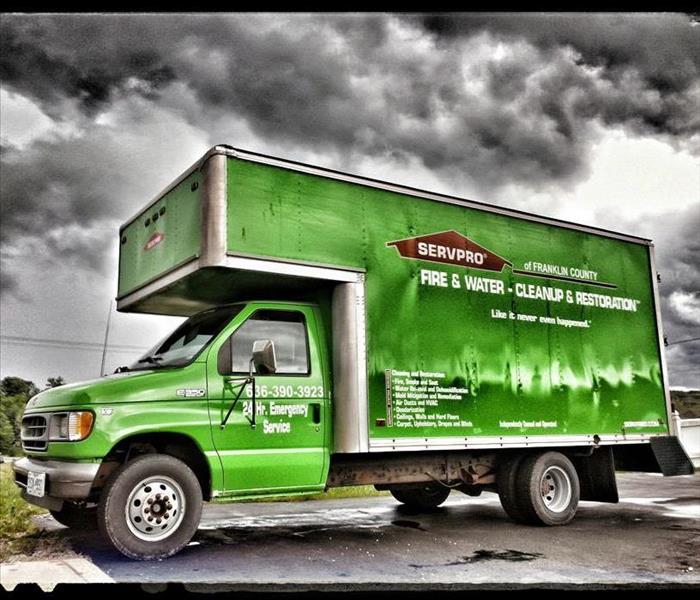 Water Damage Restoration; Franklin County, MO
Water Damage Restoration; Franklin County, MO
Water damage is one of the most common and costly disasters affecting residences, accounting for billions of dollars in losses annually. Individuals protect themselves from repairs by having insurance. However, do you have the right type of insurance to protect your property?
Generally speaking, standard homeowners and renters insurance cover water that comes from the top down. For example, burst pipes, wind driven rain and damage from ice dams. Some polices cover sewer and drain back up, but many do not. You can sometimes add this coverage to your insurance plan for an additional fee.
Water intrusion from a river or creek is covered by flood insurance. Flood insurance can be purchased from the federal governments National Flood Insurance Program and from some private insurers. The average flood insurance policy costs $540 a year.
Maintaining a home is one of the best ways to prevent damage.
Inside Your Home
Inspect hoses and faucets. Check hoses leading to water heaters, dishwashers, washing machines and refrigerator icemakers annually. Replace those with cracks or leaks, and replace them all every five to seven years.
Inspect showers and tubs. Check the seal and caulking around showers and tubs to make sure they are watertight.
Shut off the water supply to the washing machine while away on vacation, and never leave the house while the washer or dishwasher is running.
Know the location of the main water shut off valve in your home. A damaged hose or a burst pipe can send water racing into your home. By knowing where this valve is located and how to shut off the main water supply, you can save yourself time and money.
Install an emergency pressure release valve in your plumbing system. This will protect against the increased pressure caused by freezing pipes and can help prevent your pipes from bursting.
Check pipes. Look closely for cracks and leaks and have the pipes repaired immediately.
Outside Your Home
Caulk and seal windows. Preventive maintenance will guard against water seepage.
Inspect your roof. Look for missing, damaged, and aging shingles.
Check your downspouts. Remove debris that may have accumulated in downspouts and rain gutters. Position downspouts so that they direct water away from the house.
Check sprinklers and irrigations systems. Be sure sprinklers and irrigation systems are not damaging the walls and foundations of the house; turn off and drain outside faucets to protect against frozen pipes.
Install gutter guards. Gutter guards are the device used to protect the clogging of the roof gutter so that the water from the roof may flow easily and accumulation of water does not take place on the roof but away from the house.
If you do have a water loss, we are water damage restoration specialists and are ready to restore your Franklin County, MO home back to pre-water damage condition. We quickly extract the water and then dry your property using state-of-the-art equipment. SERVPRO of Franklin County uses moisture monitoring equipment to effectively measure and document the drying process to ensure your property is dry.
Restore Vs. Replace
11/15/2016 (Permalink)
The insurance and restoration industry have performed multiple studies that conclude restore has many advantages over replace. As a preferred mitigation vendor for most major insurance companies we are charged with a duty to restore whenever possible.
The major advantage to restore vs. replace is cost. In almost any situation, restore saves a tremendous amount of money compared to replacement. One area where we can generate huge savings in a water loss situation is drying of hardwood floors instead of replacing them. Even after incurring the cost of air movers, dehumidifiers and even specialize equipment usually there is a 45%-75% cost savings over replacement. Another common example would be the drying of carpet and/or drywall. Again using air movers and dehumidifiers and following the science of drying we can often save 75%-90% over replacement cost. You can imagine how quickly these savings add up.
Another advantage of restore versus replace is time savings and business interruption savings. Drying a structure usually takes an average of three to five days. After our drying is completed, your customer should be back in their house or business right away. Back, as we like to say, “Like it never even happened”. If you look at the alternative which is replace, your customer will have to wait weeks or even months to get back into their home or business while construction is going on. This leads to expensive hotel bills for residential customers or catastrophic business interruption costs for commercial customers. Either way you are talking a great deal of money, time and inconvenience!
For these reasons we at SERVPRO look to restore whenever we can and whenever it makes sense. We accomplish this by not only using our extensive training, knowledge and resources but also by responding immediately so that the impact of the water or fire damage is reduced. We also help you mitigate your damages before they even happen with our Emergency Ready Profile (ERP) and our sponsorship of the Red Cross Ready Rating. These programs prepare you for the loss before it even occurs. If you or your customers do not have an ERP yet, you need one! Set up an appointment right away. It’s free!
After the Damage
11/15/2016 (Permalink)
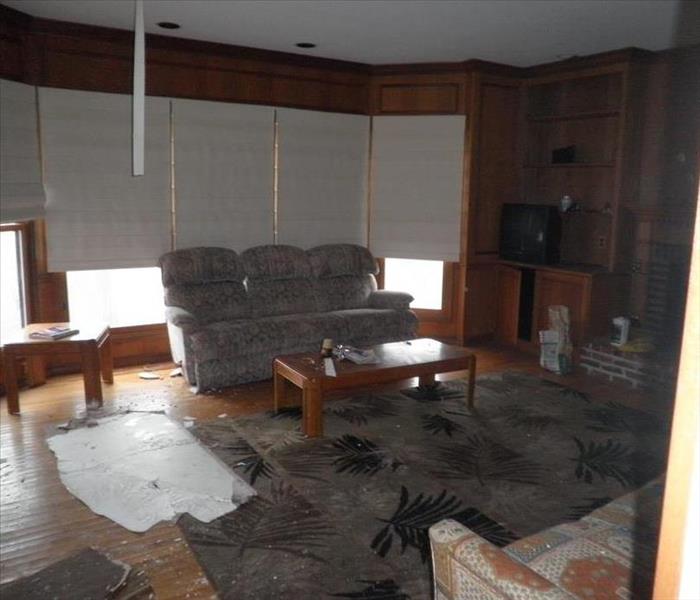 Water Damage and Restoration
Water Damage and Restoration
Imagine it’s 8:00 p.m. on a Sunday, and you walk into your home after a relaxing vacation expecting to switch on the lights, put the kids to bed then get some rest yourself.
The only problem? A water pipe has burst over the weekend, dumping thousands of gallons of water over your hard wood kitchen floor, your carpeted living room and your cement utility room. You realize this problem is far beyond the reach of your shop vac. What do you do now?
When it’s your home or business that’s underwater, mitigation can’t wait. You need mitigation to begin yesterday. If water damage strikes you, give us a call immediately.
The cost of water damages can increase exponentially with time. Wood floors warp, dry wall soaks in moisture and mold develops in hard-to reach areas of your home or business. The benefits of rapid mitigation by a SERVPRO® Technician are two-fold: Your costs go down as potential hazards may be avoided, and your peace of mind goes through the roof.
So if the unthinkable happens to your home or business, allow us to help quickly turn your “before” into a “happily ever after.”
We are water damage restoration specialists and are ready to restore your Union, MO home back to pre-water damage condition. We quickly extract the water and then dry your property using state-of-the-art equipment. SERVPRO of Franklin County uses moisture monitoring equipment to effectively measure and document the drying process to ensure your property is dry.
Please refer to our Water Damage Tips—Until Help Arrives Guide and follow these tips to protect yourself and your property.
Need Water Damage or Flood Cleanup Services?
Call Us Today – (636) 583-5200
How A Water Restoration Technician Can Restore your Pacific, MO Home or Business
10/4/2016 (Permalink)
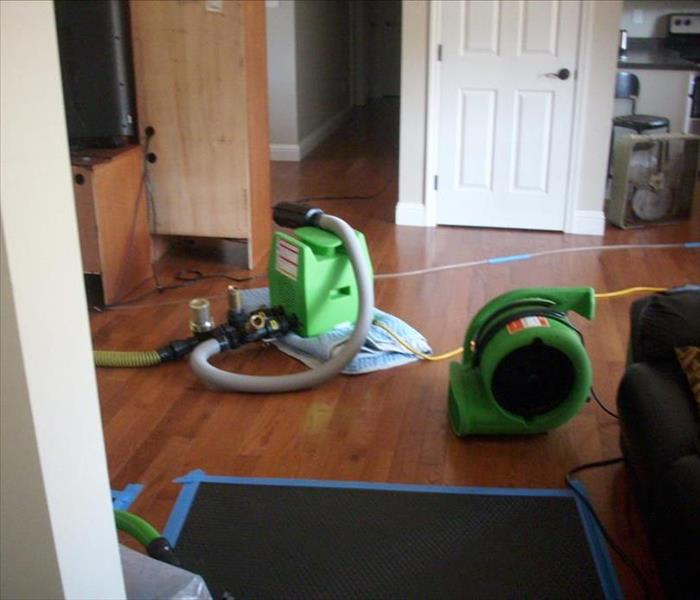 Pacific, MO Water Damage
Pacific, MO Water Damage
A water restoration technician has an extremely important job when a home or business is affected by excess moisture or fluid.
Certified professionals in the industry can quickly reverse the extensive damage that a flood or sewage backflow can cause in your Pacific, MO property, and save as many items as possible in the process. And when dealing with contaminated fluids, especially when it has pooled in the home, only certified professionals should be allowed to manage the cleanup.
Attempting to perform cleanup efforts without expert assistance can lead to injury or illness, both of which can be severe.
A certified water restoration technician will usually be on call around the clock.
As soon as a professional is on site, they will assess the situation and determine what items need immediate rescuing. If fluid has pooled in areas around the home, then pumps will be used to remove it.
The home will be dried using a configuration of heavy duty air movers and dehumidifiers, and while it dries, our technicians will move through the building and look for any evidence of mold or pathogen contamination. If pathogens or mold are present, they will be eliminated using special procedures. This will ensure the home or business is safe to return to, and with concerted drying efforts, the building will as good as new once professionals have completed their work.
Please refer to our Water Damage Tips—Until Help Arrives Guide and follow these tips to protect yourself and your property.
Need Water Damage or Flood Cleanup Services?
Call Us Today – (636) 583-5200
Call Us Today – (636) 583-5200
About your Franklin County, MO Water Damage
10/4/2016 (Permalink)
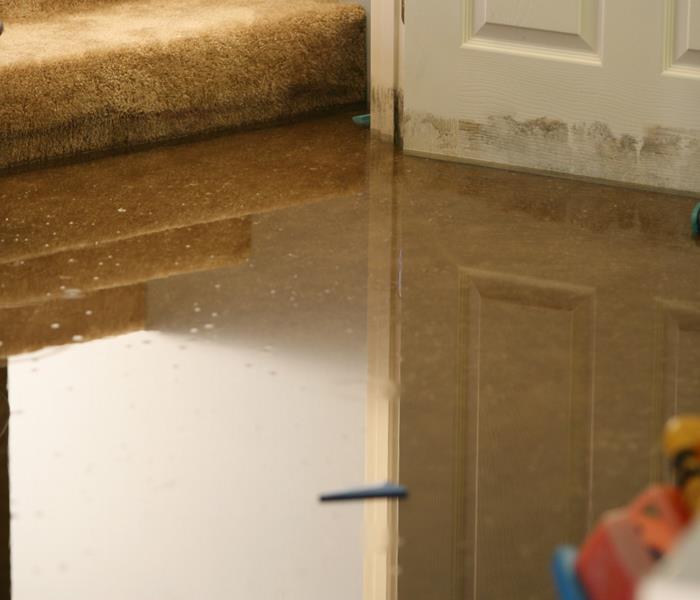 Franklin County, MO Water Damage
Franklin County, MO Water Damage
Water damage in Franklin County, MO can happen for many different reasons, including broken or burst pipes, plumbing leaks, a clogged toilet, washing machine overflow, moisture behind walls, foundation cracks or a leaking roof. In a short time, flooring, walls and personal property can become saturated in water. Water damage can happen quickly, but SERVPRO can help! When disaster hits your home, our primary goal is to restore your home and your peace of mind. Our team of professional water damage technicians are caring and trained, and always ready and here for you and your family. We will be at your property quickly and are ready any day of the week and at any time.
Water Damage is Not All Alike
Three categories of water are involved in a situation with water damage. The category of water helps to determine the right water restoration method that we will use. Category 1 water is known as white water or clean water. It is fresh water which is pumped into your home, meaning Category 1 water damage source can be broken water supply lines such as washing machine and dishwasher malfunctions. This type of water is harmless to people, but after forty-eight hours, it can turn into Category 2 water. Category 2 water is usually referred to as gray water. It can come from wastewater in bathtubs, sinks, and showers, plus water which is discharged by washing machines and dishwashers. It will likely have a good amount of contamination and can pose a health risk. Category 3 water is also known as black water. The main source of this is sewage. It also happens during a flood because of the potential for chemicals in fertilizers, ground debris, animal waste and other areas that have contamination. Blackwater has toxins or organisms that can cause disease.
Since every water damage situation is different and involves various safety categories of water, we offer a complete range of services to cover water damage cleanup projects of any scope or size. When you experience Franklin County, MO water damage of any kind, quickly give us a call at 636-583-5200. We will come to your property, assess your damages and draw up a plan for remediation so that we can restore your home back to normal as quickly as possible.
What You Should Know About Sewage Cleanup
9/6/2016 (Permalink)
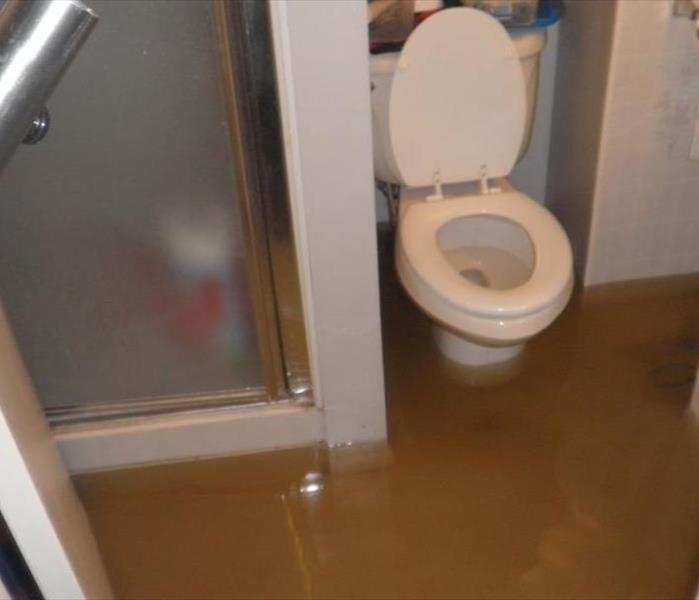 Sewage Clean Up
Sewage Clean Up
Sewage is one of the most dangerous substances to enter homes or buildings. It contains fungi, bacteria and viruses, many of which are disease-causing. Unfortunately, many people fail to understand the hazards that sewage presents, particularly for the very young or very old, or for those with compromised immune systems or respiratory problems.
The IICRC has complied guidelines for professional sewage clean-up called the Standard for Water Damage Restoration (S500).
Here are the key principles you should know about sewage back-ups:
- Sewage contains a variety of pathogenic – disease causing – fungi, bacteria, viruses and parasites. Anyone who works on sewage losses must have updated vaccinations, including one for Hepatitis B.
- Sewage exposure is particularly dangerous for people with weakened immune systems, including anyone under two or over 60, those who are pregnant, ill, recovering from surgery, on prescription drugs or chemotherapy, or are AIDS victims.
- It is not safe to stay in a building that’s flooded with sewage unless the contaminated area can be completely sealed off and placed under controlled air flow so that there will be no cross contamination of unaffected areas.
- Highly absorbent sewage-saturated materials, such as carpet, pad, upholstery, bedding, wicker, paper or even fabrics that can’t be washed in hot water (130°F/54°C) for at least 10 minutes, must be contained and disposed of properly. This goes for sewage-saturated drywall, insulation and several other structural materials too. There’s simply too great a health risk involved if any of these materials are dried in place and cleaned only.
- Only the most highly trained professionals should attempt sewage remediation work. Then, a “third party” indoor environmental professional can provide post-remediation verification or “clearance testing” to ensure that the home or building is safe to re-occupy.
Special training and equipment is necessary to safely clean this type of contamination. Our staff is highly trained in property damage restoration. From initial and ongoing training at SERVPRO’s Corporate Training Facility to regular IICRC industry certifications, rest assured our staff is equipped with the knowledge to restore your property.
Sewage Backup or Toilet Overflow? Call Us Today – (636) 583-5200
Call SERVPRO of Franklin County For Water Damage
9/6/2016 (Permalink)
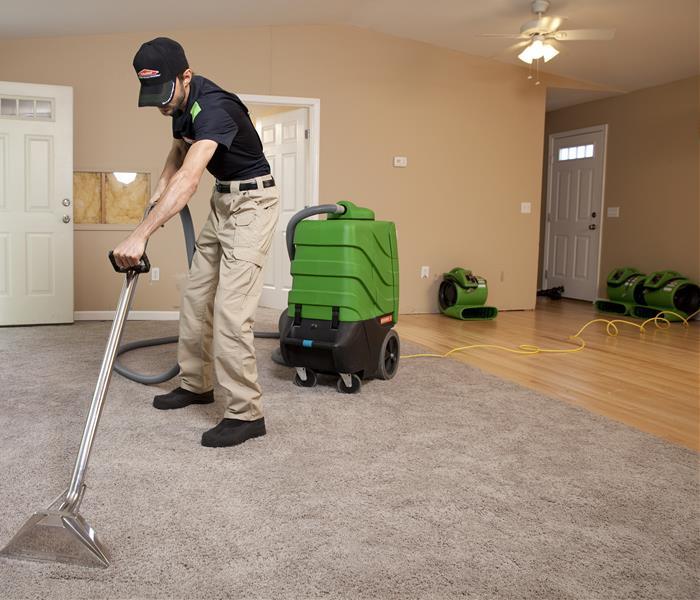 Water Damage or Flood Cleaning Up
Water Damage or Flood Cleaning Up
When restoration is necessary for water damage, it’s usually needed right away. Moisture has the nasty tendency to attract all kinds of microbes, and it can destroy nearly anything if given enough time. And it doesn’t take much time for it to destroy anything containing cellulose or other organic materials. In fact, it only needs hours to leave a house in bad shape. We know that time is of the essence when responding and come prepared for nearly any situation. This knowledge will speed the process along and help the technicians salvage as much as possible.
Before a restoration firm can repair water damage, its technicians have to know what they are dealing with. A thorough inspection with moisture meters will allow the us to pinpoint just how much moisture is in the home. Upon finding moisture, the technicians will pump out any standing water and begin the drying process. Heavy equipment like air movers are used during the drying process and it generally takes about 3 days complete the job.
In the aftermath of a flood, burst pipe or other disaster, it may seem like the situation is an impossible one. Not only is this not true, the final step - restoration, is the process of restoring your home or business to its pre-water damage condition. Restoration may involve minor repairs, such as replacing drywall and installing new carpet, or may entail major repairs, such as the reconstruction of various areas or rooms in a home or business.
SERVPRO of Franklin County can simplify the restoration process by handling both the initial water damage mitigation and rebuilding the affected areas. Having one qualified company for the entire process can save time and keep costs low. We can provide this continuity by supervising a full range of restoration services that will bring a building back to full functionality.
Need Water Damage or Flood Cleanup Services?
Call Us Today – (636) 583-5200
Always Call A Water Damage Service For Repairs
7/15/2016 (Permalink)
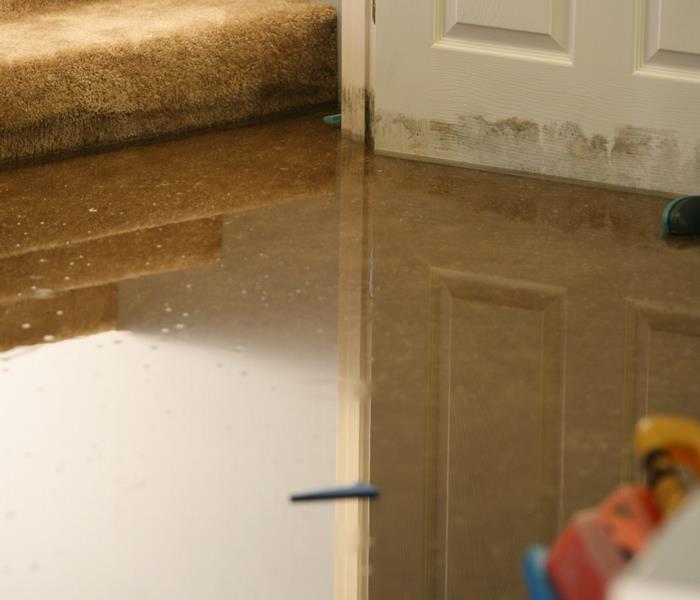 Water Damage Restoration Service
Water Damage Restoration Service
A water damage restoration service is the kind of professional that no one wants to call, but when they are needed, it is important not to delay. Homeowners know that moisture is often the enemy, capable of penetrating into just about any space, and taking advantage of every little crack and structural problem. No matter how moisture gets into the building, the response should be the same. Bring in a certified firm as soon as possible to clean the home, dry it, and ensure there are no lingering health threats once the moisture is gone.
If water has entered the home through a contaminated source, don’t try to handle it on your own. Floods and sewage backflows contain a cocktail of deadly bacteria, viruses and fungi, and even momentary skin contact can leave a person seriously ill. A certified water damage restoration service not only has the tools to eliminate the moisture, they have the protective equipment to remain free from harm.
Restoration technicians have a lot of technology at their disposal. These include powerful vacuums and pumping systems, high volume air movers, dehumidifiers, heat injectors, moisture meters, and a number of detergents formulated for destroying fungi and other microbial threats. While the technicians work on the building, disposing of compromised materials, and drying the rest, they will also destroy all mold and microbial colonies. This is the only way to ensure a home is safe to live, and a business safe to work in; any other cleaning method is a dangerous gamble.
The Institute of Inspection Cleaning and Restoration Certification (IICRC) sets practical standards for restoration and cleaning. The IICRC S500 Water Damage Guide is a specific set of practical standards that incorporate the field of psychometry, which involves the manipulation of temperature and relative humidity to remove moisture and dry a property quickly and effectively.
We are water damage restoration specialists and are ready to restore your Union home back to pre-water damage condition. We quickly extract the water and then dry your property using state-of-the-art equipment. SERVPRO of Franklin County uses moisture monitoring equipment to effectively measure and document the drying process to ensure your property is dry.
Please refer to our Water Damage Tips—Until Help Arrives Guide and follow these tips to protect yourself and your property.
Need Water Damage or Flood Cleanup Services? Call Us Today – (636) 583-5200
When Are Water Damage Restoration Companies Needed?
6/24/2016 (Permalink)
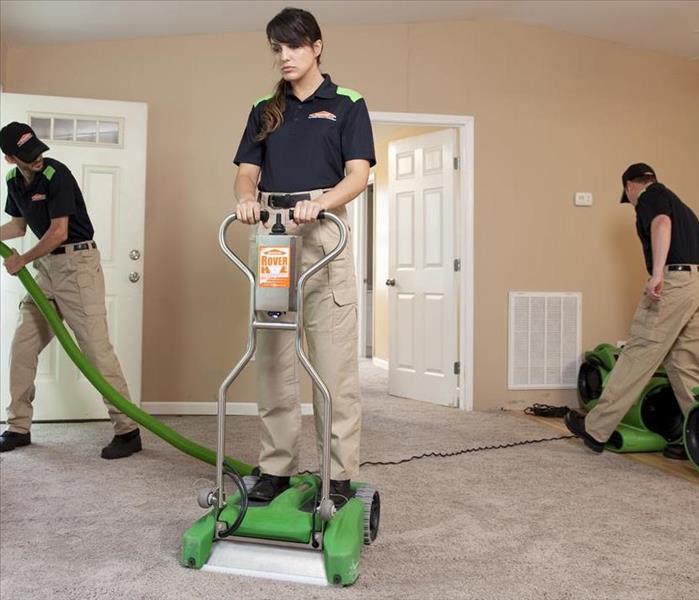 Water Damage Cleanup
Water Damage Cleanup
Water damage restoration companies are essential for repairing a home or business affected by a storm, flood or plumbing problem. Water is one of the most destructive forces to affect a building, especially when contaminated with chemicals or organic waste. It will cause mounting concerns in the building if the problem is not addressed expediently, so a professional should be called in as soon as possible.
Why should water damage restoration companies be hired for these issues?
In most cases, floods and sewage backflows will contain dangerous contaminants that people should avoid if at all possible. This includes chemical runoff like oil and fertilizer, and organic waste like animal feces. This provides the ideal environment for bacteria, viruses, fungi, parasites, and other deadly microbes to multiply. Floods often sweep up wild animals, posing another risk. Electrical, structural and fire hazards may also be present, all of which can cause fatal injuries.
Professionals are equipped to handle these environmental hazards and prevent injury. With their hazard equipment and training, industry technicians can quickly eliminate any pressing threats.
Speed is also a major issue when removing excess moisture, as mold could set in within 48 hours if items are not cleaned and dried to some extent. When dealing with extensive destruction, only professional firms have the manpower needed to address the entire building.
When your home or business has water damage from flooding or leaks, you need the company that can respond immediately and has the expertise and equipment to properly restore your property. SERVPRO of Franklin County uses advanced water damage inspection and extraction equipment to help them find the moisture and to remove it as quickly as possible. Our highly trained technicians will monitor and document the drying process so that you know your property is back to normal.
Please refer to our Water Damage Tips—Until Help Arrives Guide and follow these tips to protect yourself and your property.
Need Water Damage or Flood Cleanup Services?
Call Us Today – (636) 583-5200
What Are The Kinds Of Water Restoration Equipment Used?
6/24/2016 (Permalink)
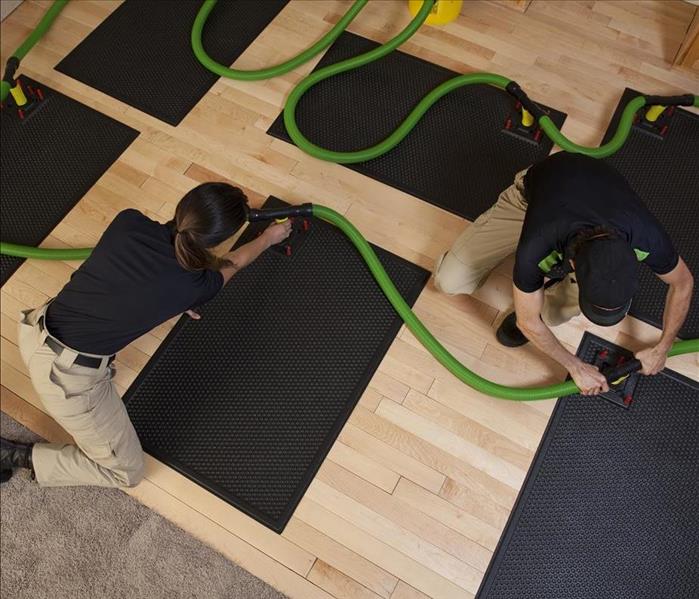 Water Damage Restoration Equipment
Water Damage Restoration Equipment
There are several pieces of water restoration equipment needed to complete the job properly. This field is technically complex and requires a lot of technology and expertise to do right. Before entering a job site, workers must protect themselves with special clothing. Technicians must also bring devices for drying out the interior and removing moisture from the air. Chemical cleaners and disinfectants are also needed, and moisture detection devices are invaluable for spotting problem areas. For properties that have sustained heavy damage, some demolition tools may be required to quickly removed compromised material.
The Institute of Inspection, Cleaning and Restoration Certification, or IICRC, categorizes these jobsites into three groups. If the standing liquid is from a sanitary source, it is placed in category 1. If there are some contaminants present, it is a category 2 situation. If standing liquid is thoroughly contaminated and capable of causing severe illness or death upon ingestion, it is a category 3 jobsite. When working around category 1 liquids, it is possible for a technician to do his job without protective clothing for a short time. However, this is risky because category 1 liquids can become contaminated quickly and without notice. For this reason, it is always best to bring protective clothing in a water restoration equipment kit.
This consists of full body protective clothing, rubber gloves, rubber boots, safety goggles or glasses, and a respirator calibrated for areas with high amounts of moisture. The respirator is especially important because it will prevent a technician from inhaling airborne contaminants like mold or fungi. If damage to the property is extensive or complete, demo tools like sledgehammers or axes may be pieces of water restoration equipment worth bringing. Finally, a pressure washer may be brought in to clean out the areas affected by the liquid. These washers may use detergents, and once done, other compounds might be employed to help dry the area quickly.
Before a technician can get to work repairing the property, he needs to know where the worst of the damage is. In general, the worst effects are in areas where the liquid has thoroughly penetrated materials. However, it’s impossible to detect this just by sight, so a moisture meter is like the technician’s right hand. This piece of water restoration equipment is extremely important and precisely measures the moisture percentage of most material. This is useful for drywall, wood and paper materials. With a moisture meter, a technician will know which areas need the most attention and which areas are safe. As the property begins to dry out, the technician can use the moisture meter to check the progress of the job. In short, this device is the most crucial information gathering tool at the technician’s disposal.
Once the source of the standing liquid is dealt with and the technician has taken stock of the damage, it’s time to dry out the area. There are many pieces of water restoration equipment that are used for this purpose. Most are heavy duty fans that can remove moisture, but some devices function using static electricity to move liquid around. Industrial strength vacuums are also handy for removing small patches of water.
Article can be found at: http://www.iicrc.org/what-are-the-kinds-water-restoration-equipment-used-a-130.html
SERVPRO of Franklin County uses advanced water damage inspection and extraction equipment to help them find the moisture and to remove it as quickly as possible. Our highly trained technicians will monitor and document the drying process so that you know your property is back to normal.
Please refer to our Water Damage Tips—Until Help Arrives Guide and follow these tips to protect yourself and your property.
Need Water Damage or Flood Cleanup Services?
Call Us Today – (636) 583-5200
What To Do When A Home Suffers From Water Damage
12/23/2015 (Permalink)
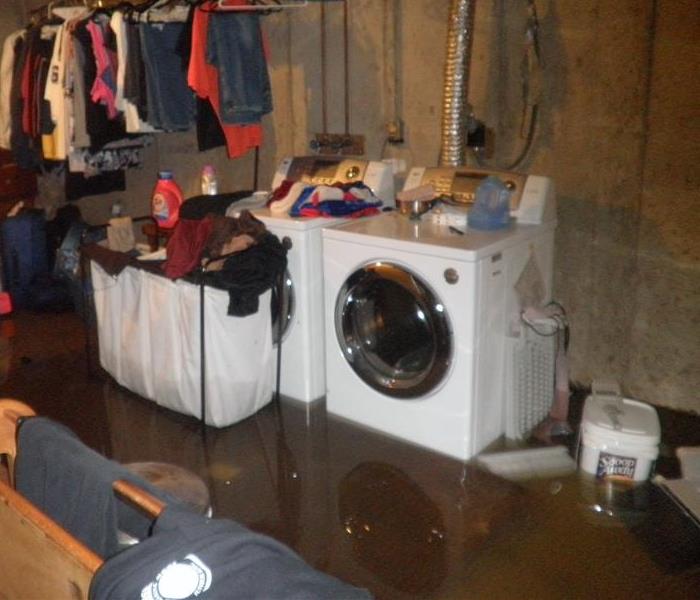
When a major storm passes close to the house, the home may suffer water damage that is difficult to repair. There are many things a family can do to begin repairing any destruction, but a certified professional will likely be needed to get rid of any serious health or structural threats. Contaminated storm surges or floods can carry pathogens and become a breeding ground for mold. If allowed to fester, these mold spores can spread throughout the building and become even more difficult to remove. In many cases, governmental agencies could condemn the structure if the microbial threat is too great.
The main reason why a home is sensitive to water damage is because moisture is difficult to detect once the floods recede. Standing liquids can encourage microbial growth within 24 hours and can saturate all kinds of textiles and seep through drywall. Moisture may collect behind the walls, where mold and bacteria may multiply out of sight. If a family reacts quickly enough, clothes and furniture may be saved. However, people must be careful when entering a building that has recently been flooded. Exposure to wildlife and contaminated liquids can result in serious injury.
Before entering a home affected by water damage, make sure the electrical power is shut off. Exposed wires or plugged in devices can electrocute people, resulting in major injury or even death. Also, it’s best to move slowly through the building when re-entering it for the first time. Snakes, reptiles or rodents may be hiding under debris and could lash out and bite suddenly. To protect against wildlife and airborne contaminants, wear protective clothing from head to toe, including a vapor respirator, rubber gloves and eye protection. Also, wear thick boots that can withstand puncturing and animal bites.
Professional restoration services can quickly identify what items in the home are compromised by water damage. Normally, anything that is porous may need to be discarded if it has come in contact with contaminated fluids. These items, like mattresses, box springs, pillows and particle board, trap more moisture than other materials and foster the growth of microbes. A family can prepare for professional cleaning by getting rid of these items before the technicians arrive, butbe sure to properly record and itemize the items for insurance purposes prior to disposing.
Once professionals arrive at the building, they will be able to track down any pockets of excess moisture and remove them. Certified technicians can locate these pockets of moisture using equipment that measures the moisture in hidden pockets and behind tile and other materials that may not feel wet on the outside. When these moisture pockets are found, the technicians will expose them to air by removing any drywall or other materials in the way. Once the location of the moisture has been determined, the professionals will begin the clean-up process that may include pressure washing the area with powerful detergents. These technicians are also able to speed up the drying process to prevent the growth of any molds or other harmful bacteria. If the professional locate mold or bacteria colonies, they will know how to identify and remove the threat using chemical or mechanical methods.
It’s important for a family to hire professionals that are certified through a reputable organization. Technicians trained in this area know how to find compromised areas and do what it takes to restore them.
Locally Owned Company with National Resources
We live and work in this community too; we might even be neighbors. As a locally owned and operated business, SERVPRO of Franklin County is close by and ready to respond to your flood or water damage emergency. We are proud to be an active member of the Union community and want to do our part to make our community the best it can be.
Our Water Damage Restoration Process
Every water damage situation is a little different, and requires a unique solution, but the general process stays the same. The steps listed below illustrate our process for the “typical” water damage emergency.
Step 1: Emergency Contact
Step 2: Inspection and Damage Assessment
Step 3: Water Removal/Water Extraction
Step 4: Drying and Dehumidification
Step 5: Cleaning and Repair
Step 6: Restoration
Our highly trained technicians are ready to respond immediately to flood or water damage at your property. We have the experience, expertise, and training to restore your home or business quickly and properly. We use advanced inspection and extraction equipment to find the water and remove it as quickly as possible. Our technicians will monitor and document the drying process to ensure your property is back to normal.
Please follow our tips outlined in the Water Damage Tips—Until Help Arrives Guide to protect yourself and your property.
Do You Have Water or Flood Damage?
Call Us Today – (636) 583-5200
Water Damage Restoration Tips for Union, MO
12/15/2015 (Permalink)
Water Damage Emergency Tips
What you can do until help arrives
After any water damage situation, your primary focus should be safety first:
- Is it safe to stay in the house?
- Electrical and "slip and fall" hazards are some of the most prevalent concerns.
- Only do activities that are safe for you to perform.
- Wet materials can be VERY heavy. Be careful!
Have A Water Damage Emergency? Call (636) 583-5200
What To Do After Flooding
- Remove excess water by mopping and blotting.
- Wipe excess water from wood furniture after removal of lamps and tabletop items.
- Remove and prop wet upholstery and cushions.
- Place aluminum foil or wood blocks between furniture legs and wet carpeting.
- Turn air conditioning on for maximum drying in summer.
- Remove colored rugs from wet carpeting.
- Remove art objects to a safe, dry place.
- Gather loose items from floors.
What NOT To Do After Flooding
- Don't leave wet fabrics in place. Hang furs and leather goods.
- Don't leave books, magazines or other colored items on wet carpet or floors.
- Don't use your household vacuum to remove water.
- Don't use television or other household appliances.
- Don't turn on ceiling fixtures if ceiling is wet, and keep out of rooms where ceilings are sagging
Locally Owned Company with National Resources
We live and work in this community too; we might even be neighbors. As a locally owned and operated business, SERVPRO of Franklin County is close by and ready to respond to your flood or water damage emergency. We are proud to be an active member of the Union community and want to do our part to make our community the best it can be.
April Showers bring May Floods??
5/19/2015 (Permalink)
The first two weeks of April brought about quite a bit of rain and severe weather for our area. Tuesday April 7th brought heavy rains washing out streets, culverts, retaining walls and yards. Many houses and residences were affected including the Sleepy Hollow Mobile Home Park in Villa Ridge which had to be evacuated twice due to high-water. Also a lot of unlucky homeowners came home to find very wet basements.
Those two weeks became a very busy time for us. Basement floods are a particularly difficult to mitigate. First we have to ask, “how did the water get there” ? With almost all insurance policies if the water leaked or seeped through the foundation walls it probably will not be covered. If it came up through the sump or the sump failed, usually it will take a special endorsement to provide coverage. The same is true if the water came up through the sewer drain. If there is no coverage, the homeowner is left paying the mitigation bill out of pocket.
After insurance coverage is determined our highly trained IICRC certified technicians come up with a plan of action to dry out the basement. Determining the class of water is one of our first steps in developing the drying plan. Listed below are the classifications we use:
•Category 1. This is liquid from a clean and sanitary source, such as faucets, toilet tanks, drinking fountains, etc. But, category one can quickly degrade into category two.
•Category 2. This category of liquid used to be called gray water, and is described as having a level of contaminates that may cause illness or discomfort if ingested. Sources include dishwasher or washing machine overflows, flush from sink drains, and toilet overflow with some urine but not feces.
•Category 3. This is the worst classification and is grossly unsanitary. It could cause severe illness or death if ingested. It used to be called black water, and sources include sewer backup, flooding from rivers or streams, toilet overflow with feces, and stagnant liquid that has begun to support bacterial growth.
Typically these type of losses will be either category 2 or 3. The water is usually slightly or grossly contaminated. With a category 2 or 3 loss we will use a air scrubber to clean the air and workers will wear personal protection and we will apply anti-microbial agents to protect everyone and to obtain a clean environment.
Next we usually have to deal with a lot of personal property. After all it’s a basement and where else do you store stuff?? We determine what is salvageable and unsalvageable, documenting and disposing the unsalvageable items and cleaning and moving the salvageable items. Once we have the contents out of the way, we are ready to extract as much water as possible. We use powerful truck mounted machines to extract the water. Our moisture meters are used to determine what’s wet and how wet everything is. We make sure to document all of this information on our iPad’s so that we have a thorough drying record. Next we determine what structural items can be saved and what need to be removed. If the category of water is determined to be 3, all porous items such as carpet and drywall would need to be removed and disposed of. With category 2 more structural items can be saved, but they still need to be properly cleaned and dried. Lastly we are ready to set drying equipment. With the use of our iPad’s we determine the amount of air movers and dehumidifiers required to adequately dry the space. Air movers will force the moisture out of the structure and into the air. The dehumidifiers take the moisture away. We continue to monitor daily until moisture levels are normal and equipment is ready to be removed.
Once everything is dry, we package up our completed estimate, drying logs, inventories, pictures, etc. and forward them to the adjuster or paying customer. The drying process usually takes 3-5 days and we strive to get our paperwork submitted within 48 hours of job completion. Finally, our construction division is here to put everything back together for you. We provide a detailed estimated to the adjuster or paying customer and make sure everything is approved and agreed upon in advance.
After we are done, we don’t just leave you. We provide a yearlong warranty and we are always here for consultation or just to answer questions.
If you have any questions about water damage or any of our other services please feel free to ask. Until next time, stay dry and stay green!
-Jerry
How to Protect Your Home from Water Damage
4/27/2015 (Permalink)
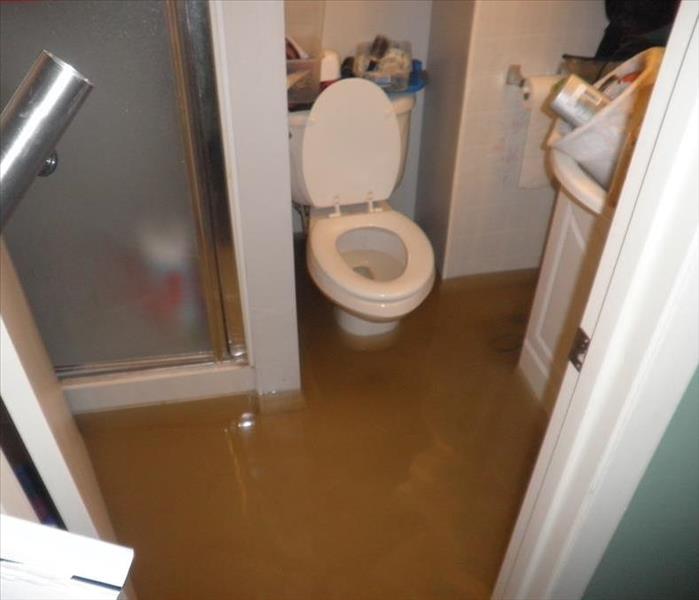 Sewage water loss
Sewage water loss
Water damage is one of the most common and costly disasters affecting residences, accounting for billions of dollars in losses annually. Individuals protect themselves from repairs by having insurance. However, do you have the right type of insurance to protect your property?
Generally speaking, standard homeowners and renters insurance cover water that comes from the top down. For example, burst pipes, wind driven rain and damage from ice dams. Some polices cover sewer and drain back up, but many do not. You can sometimes add this coverage to your insurance plan for an additional fee.
Water intrusion from a river or creek is covered by flood insurance. Flood insurance can be purchased from the federal governments National Flood Insurance Program and from some private insurers. The average flood insurance policy costs $540 a year.
Maintaining a home is one of the best ways to prevent damage.
Inside Your Home
Inspect hoses and faucets. Check hoses leading to water heaters, dishwashers, washing machines and refrigerator icemakers annually. Replace those with cracks or leaks, and replace them all every five to seven years.
Inspect showers and tubs. Check the seal and caulking around showers and tubs to make sure they are watertight.
Shut off the water supply to the washing machine while away on vacation, and never leave the house while the washer or dishwasher is running.
Know the location of the main water shut off valve in your home. A damaged hose or a burst pipe can send water racing into your home. By knowing where this valve is located and how to shut off the main water supply, you can save yourself time and money.
Install an emergency pressure release valve in your plumbing system. This will protect against the increased pressure caused by freezing pipes and can help prevent your pipes from bursting.
Check pipes. Look closely for cracks and leaks and have the pipes repaired immediately.
Outside Your Home
Caulk and seal windows. Preventive maintenance will guard against water seepage.
Inspect your roof. Look for missing, damaged, and aging shingles.
Check your downspouts. Remove debris that may have accumulated in downspouts and rain gutters. Position downspouts so that they direct water away from the house.
Check sprinklers and irrigations systems. Be sure sprinklers and irrigation systems are not damaging the walls and foundations of the house; turn off and drain outside faucets to protect against frozen pipes.
Install gutter guards. Gutter guards are the device used to protect the clogging of the roof gutter so that the water from the roof may flow easily and accumulation of water does not take place on the roof but away from the house.
SERVPRO of Franklin County – Union, MO – The Basics of Water Damage
1/16/2015 (Permalink)
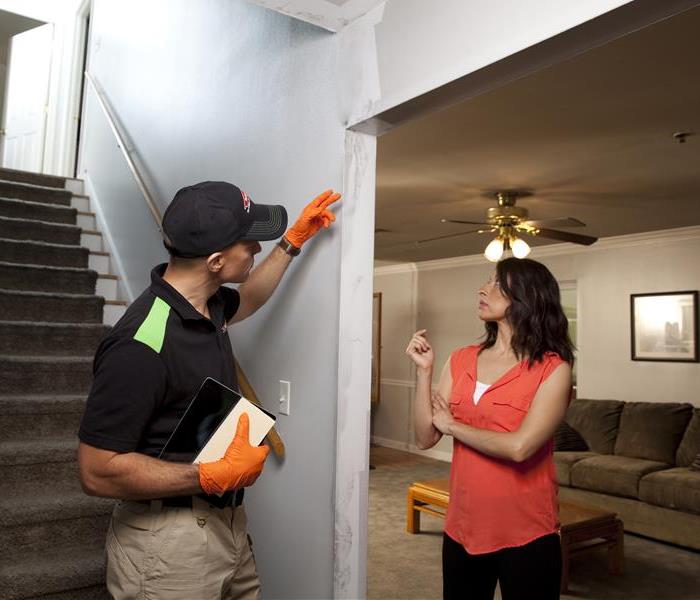 Technician reviews damage with customer.
Technician reviews damage with customer.
Water damage training is one of the most important skill sets our team in Union, MO need in order to offer comprehensive services. We go into a home or business after a wet disaster, such as flood, burst pipes, or snow destruction. Not only do we clean up the mess, but dry and repair the substructures that have high volumes of moisture. If these items, such as drywall, wood, concrete and metal are not properly dried, not only is mold an issue, but there can be many other problems related to moisture damage. Crumbling drywall, plaster, weakening beams and supports, rusting metal surfaces, and more. If you allow moisture to sit long enough, it will eventually bring a home to ruin. SERVPRO of Franklin County's crew will be able to properly assess the situation and devise the best plan for repair.
According the IICRC (Institute of Inspection Cleaning and Restoration Certification), which sets the standards for the cleaning industry and water damage restoration training, there are several different levels and classes involved in liquid destruction. From the IICRC’s S-500 standards, there are three categories describing the type of liquid involved.
•Category 1. This is liquid from a clean and sanitary source, such as faucets, toilet tanks, drinking fountains, etc. But, category one can quickly degrade into category two.
•Category 2. This category of liquid used to be called grey water, and is described as having a level of contaminates that may cause illness or discomfort if ingested. Sources include dishwasher or washing machine overflows, flush from sink drains, and toilet overflow with some urine but not feces.
•Category 3. This is the worst classification and is grossly unsanitary. It could cause severe illness or death if ingested. It used to be called black water, and sources include sewer backup, flooding from rivers or streams, toilet overflow with feces, and stagnant liquid that has begun to support bacterial growth.
Next are the classes of destruction.
•Class 1. The lowest and easiest to deal with, this has a slow evaporation rate. Only part of a room or area was affected, there is little or no wet carpet, and the moisture has only affected materials with a low permanence rate, such as plywood or concrete.
•Class 2. With a fast evaporation rate, this level affects an entire room, carpeting, or cushioning, the wetness has wicked up the walls at least 12”, and there is moisture remaining in structural materials.
•Class 3. This class has the fastest evaporation rate, and ceilings, walls, insulation, carpet and sub-floors are all saturated. The liquid may have come from overhead.
•Class 4. This class is labeled as specialty drying situations, which means there has been enough liquid and time to saturate materials with very low permanence, such as hardwood, brick, or stone.
Education involved in water damage restoration has taught our technicians here at SERVPRO of Franklin County to tell the difference between all the classes and categories and form a restoration plan based on those factors. With air movers, air scrubbers, different sizes and types of dehumidifiers, special hardwood dryers, and dryers designed specifically for the sub-floor and inner wall cavities, we are ready to handle any type of loss. Armed with water damage restoration training and the proper tools, we find most situations are salvageable. Give us a call, we will help you address your concerns and make it “Like it never even happened.”
636-583-5200.
Preventing and Thawing Frozen Pipes
1/6/2015 (Permalink)
With dangerously cold weather on it's way, SERVPRO of Franklin County would like to keep you informed about the messy and possibily destructive issue of frozen pipes. This article provides information around how to prevent water pipes from freezing, how to thaw pipes should they freeze, and what to do if your pipes burst.
Why do pipes freeze?
Water expands as it freezes, this puts pressure on whatever is containing it, whether metal or plastic pipes. No matter the durability of the container, expanding water can cause pipes in your home to break. Pipes exposed to the severe cold, like outdoor hose bibs, water sprinkler lines, and water supplies pipes in unheated or unfinished areas such as basements, crawlspaces, attics, garages or kitchen cabinets. Pipes against exterior walls that have little or no insulation are at risk for freezing.
What can I do to prevent frozen pipes?
Before the cold sets in, you can attempt to prevent freezing by:
- Drain water from swimming pool and water sprinkler supply lines. Be sure to follow your manufacturer’s or installers directions.
- Remove, drain, and store hoses used outdoors. Close inside valves supplying outdoor hose bibs. Open outside hose bibs to let water drain. Keep the outside valve open so any water remaining in the pipe can expand without causing the pipe to break.
- Check around for unheated supply lines. Check the basement, crawlspace, attic, garage, and under kitchen and bathroom cabinets. Both hot and cold pipes need to be insulated.
- Consider installing products made to insulate pipes like a “pipe sleeve” or UL-listed “heat tape” or “heat cable” or similar materials on exposed water pipes. Even ¼’ of newspaper can provide significant protection in areas that usually do not have frequent or prolonged temperatures below freezing.
What can I do during cold weather?
- Keep garage door closed if there are supply lines in the garage.
- Open kitchen and bathroom cabinet doors to allow warmer are to circulate around pluming.
- Let the cold water drip from the faucet served by exposed pipes. Running water through the pipe helps prevent pipes from freezing.
- Keep the thermostat set to the same temperature both during the day and at night.
- If you will be going away during cold weather, leave the heat on in your home, set to a temperature more than 55° F.
What can I do if I think my pipes have frozen?
If you turn on a faucet and only a trickle comes out, suspect a frozen pipe. Keep the faucet open. As you treat the frozen pipe and the frozen area begins to melt, water will begin to flow through the frozen area. Running water through the pipe will help melt ice in the pipe.
- Apply heat to the section of pipe using an electric heating pad wrapped around the pipe, an electric hair dryer, a portable space heater (kept away from flammable materials), or by wrapping pipes with towels soaked in hot water. Do not use a blowtorch, kerosene or propane heater, charcoal stove, or other open flame device.
- Apply heat until full water pressure is restored. If you are unable to locate the frozen area, if the frozen area is not accessible, or if you cannot thaw the pipe, call a licensed plumber.
- Check all other faucets in your home to find out if you have additional frozen pipes. If one pipe freezes, others may freeze, too.
What if my pipes burst?
When your home is being threatened by water damage from a burst pipe or any type of water damage from flooding or leaks, SERVPRO of Franklin County has the expertise to prevent or mitigate the devastating effects water damage can have in order to help preserve and restore your property. We have the equipment and experience necessary to handle the most challenging water damage and removal situations and are available around-the-clock. We concentrate on safely drying, deodorizing and disinfecting the areas flooded or damaged by water. When fire and water take control of your life, we help you take it back.
Contact SERVPRO of Franklin County Regarding Your Water Damage Emergency (636) 583-5200
Source: http://www.redcross.org/prepare/disaster/winter-storm/preventing-thawing-frozen-pipes
Restore vs. Replace
11/3/2014 (Permalink)
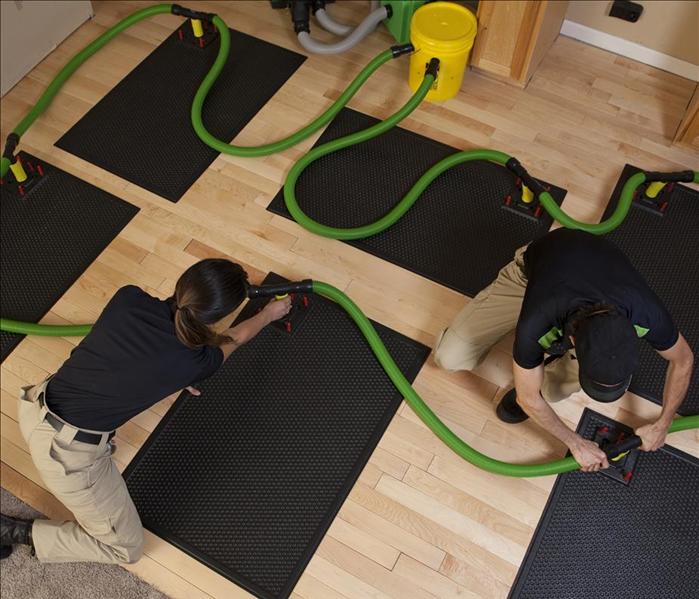 Injectidry on hardwood floors
Injectidry on hardwood floors
The insurance and restoration industry have performed multiple studies that conclude restore has many advantages over replace. As a preferred mitigation vendor for most major insurance companies we are charged with a duty to restore whenever possible.
The major advantage to restore vs. replace is cost. In almost any situation, restore saves a tremendous amount of money compared to replacement. One area where we can generate huge savings in a water loss situation is drying of hardwood floors instead of replacing them. Even after incurring the cost of air movers, dehumidifiers and even specialize equipment usually there is a 45%-75% cost savings over replacement. Another common example would be the drying of carpet and/or drywall. Again using air movers and dehumidifiers and following the science of drying we can often save 75%-90% over replacement cost. You can imagine how quickly these savings add up.
Another advantage of restore versus replace is time savings and business interruption savings. Drying a structure usually takes an average of three to five days. After our drying is completed, your customer should be back in their house or business right away. Back, as we like to say, “Like it never even happened”. If you look at the alternative which is replace, your customer will have to wait weeks or even months to get back into their home or business while construction is going on. This leads to expensive hotel bills for residential customers or catastrophic business interruption costs for commercial customers. Either way you are talking a great deal of money, time and inconvenience!
For these reasons we at SERVPRO look to restore whenever we can and whenever it makes sense. We accomplish this by not only using our extensive training, knowledge and resources but also by responding immediately so that the impact of the water or fire damage is reduced. We also help you mitigate your damages before they even happen with our Emergency Ready Profile (ERP) and our sponsorship of the Red Cross Ready Rating. These programs prepare you for the loss before it even occurs. If you or your customers do not have an ERP yet, you need one! Set up an appointment right away. It’s free!
Feel free to talk to me or Hannah about the very important subject of repair vs. replace. Until next time…. Stay Green everybody! -Jerry
Before & After
7/28/2014 (Permalink)
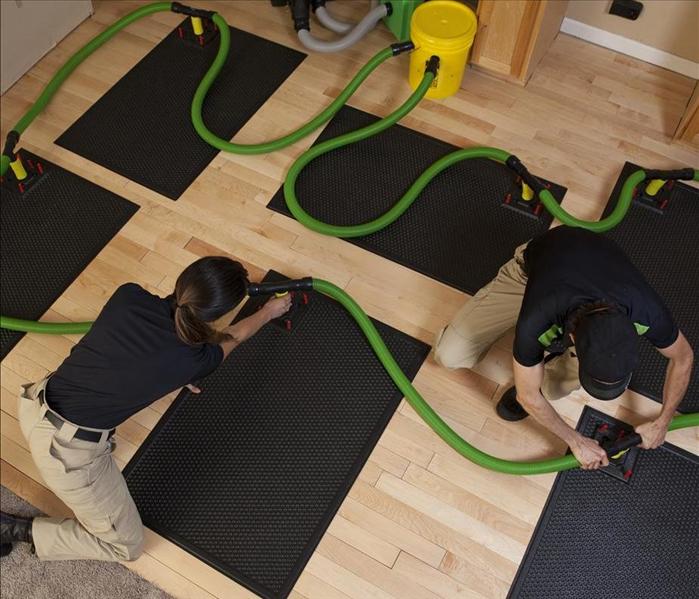 Drying Hardwood Flooring
Drying Hardwood Flooring
Imagine it’s 8:00 p.m. on a Sunday, and you walk into your home after a relaxing vacation expecting to switch on the lights, put the kids to bed then get some rest yourself.
The only problem? A water pipe has burst over the weekend, dumping thousands of gallons of water over your hard wood kitchen floor, your carpeted living room and your cement utility room. You realize this problem is far beyond the reach of your shop vac. What do you do now?
When it’s your home or business that’s underwater, mitigation can’t wait. You need mitigation to begin yesterday. If water damage strikes you, give us a call immediately.
The cost of water damages can increase exponentially with time. Wood floors warp, dry wall soaks in moisture and mold develops in hard-to reach areas of your home or business. The benefits of rapid mitigation by a SERVPRO® Technician are two-fold: Your costs go down as potential hazards may be avoided, and your peace of mind goes through the roof.
So if the unthinkable happens to your home or business, allow us to help quickly turn your “before” into a “happily ever after.”
We are water damage restoration specialists and are ready to restore your Union, MO home back to pre-water damage condition. We quickly extract the water and then dry your property using state-of-the-art equipment. SERVPRO of Franklin County uses moisture monitoring equipment to effectively measure and document the drying process to ensure your property is dry.
Please refer to our Water Damage Tips—Until Help Arrives Guide and follow these tips to protect yourself and your property.
Need Water Damage or Flood Cleanup Services?
Call Us Today – (636) 583-5200
Value of an ERP - Polar Vortex Storm
6/26/2014 (Permalink)
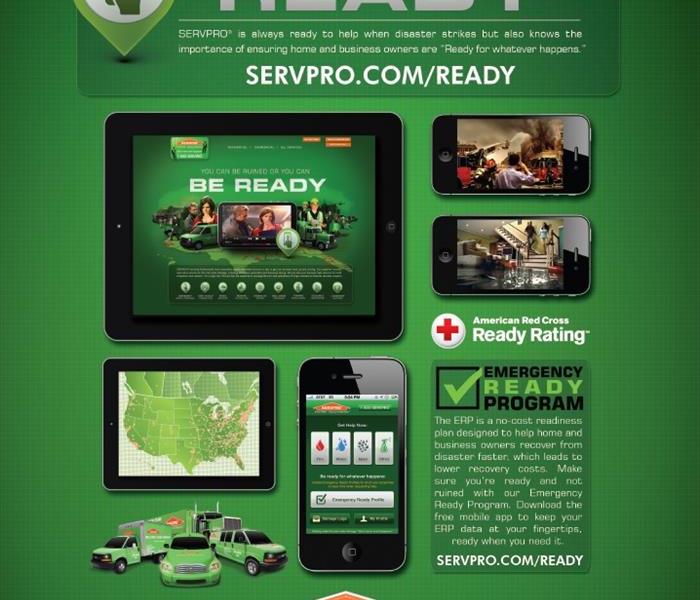 Be SERVPRO Ready
Be SERVPRO Ready
It was 9:30am on Tuesday January 7. The Midwest had just endured its first “polar vortex” and we were finally enjoying a warm up, it was a balmy 31 degrees. I and one of my crew were on our first of what would be dozens of frozen pipe water jobs over the next two weeks. Halfway through this job I received a call from the office. “Jerry, one of our commercial Emergency Ready Profile (ERP) customers just called in a job for their Sullivan location. A pipe in the ceiling broke and several rooms are affected”. As I took down the details, I could hear the other line ringing in the background. Another new job, undoubtedly. We were about to get really busy! “Let the customer know we are 15 minutes away”, I said. Quickly, I grabbed a crew member and off we went.
As we arrived, we were greeted by the administrator. “Thanks for getting here so quickly”, he said. Since we were already familiar with the layout of the facility and we already had a relationship with the facilitator and staff, there was no time wasted. We accessed the damage together which consisted of two suites that were heavily saturated from ceiling to floor. Thankfully, the two suites were not occupied by residents. We quickly began the emergency mitigation and within a few days we had everything dried out and it was business as usual for our valued customer. This was a positive outcome for our customer, but things could have turned out much differently.
Why did this catastrophe have such a positive outcome? Because, this facility had the foresight to develop a preparedness plan for this very situation. Months before anyone ever heard of a polar vortex this business invested the time to work with Servpro to develop their Emergency Ready Plan (ERP). An ERP is a no cost preparedness plan we develop for your business so when catastrophe strikes you and your business are prepared. Did you know that as many as 50% of business may never recover following a disaster? Of the businesses that survive, the overwhelming majority of them had a preparedness plan in place. Can your business afford not to have an ERP? All it costs is an hour of your time and it might save your business someday!!
Hannah is now doing ERP’s for the facilities other locations in St. Clair, Union and Washington. Give us a call and we can show you an example of an ERP. I guarantee you will want one for your business and you will see the value in it for your customers also.
SERVPRO is “Faster To Any Disaster”...... Jerry Alvey



 24/7 Emergency Service
24/7 Emergency Service
















































